Madagascar Travel: 33 Things You Need to Know Before You Go
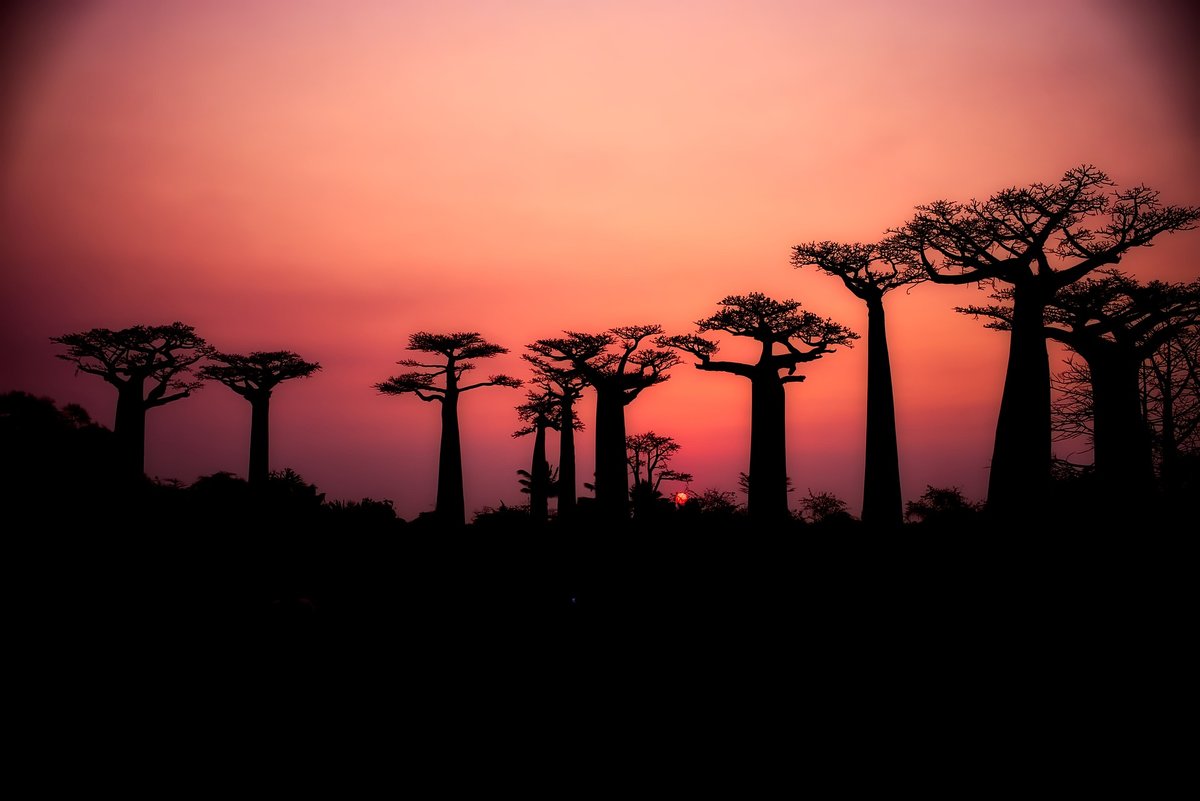

33 tips that will help you travel in Madagascar and make your time in this unique country so much more enjoyable.
Table of Contents
These travel tips are aimed to help you prepare for an unforgettable journey to this bizarre “ Red Island !” Written by an adventurer who’s spent more than a year in Madagascar, it’s the real deal.
The 33 recommendations below ( in violet ) are divided into 11 main sections ( in green ). This will make it easier for you to find the answers to a specific question.
HEALTH AND WELLNESS IN MADAGASCAR
Vaccinations to get before visiting madagascar.
- Visit a travel doctor well in advance. There are vaccinations you may need to be administered. These may take weeks to become effective. Refer to your vaccination records. Make sure you are up to date on the following: Typhoid, Hepatitis A, Hepatitis B, Meningitis, Polio, MMR, Tuberculosis (BCG) and/or Tetanus (DTP).
- You don’t need the Yellow Fever vaccine for Madagascar. However, if you plan to travel in mainland Africa on your way there, you DO need it. You will also need to provide proof of administration upon entering Madagascar if they see African countries stamped into your passport within the past 6 months.
Malaria Prevention
- You should discuss a Malaria prophylaxis prescription with your doctor. This is especially true if you are travelling between September and May. This is Madagascar’s warmer, rainier season.
- Take every day – tetracycline antibiotic.
- Pros : Least expensive, used to treat many bacterial infections (ex: urinary tract infections) and tick-borne infections. A double dose can be used to treat Malaria if someone in your group contracts it.
- Cons : Side effects may include sensitivity to the sun, increased likelihood of vaginal yeast infections, and weakened gut microbial health.
- Suggestions : Doxycycline is the prophylaxis I prefer. I just prepare for the side effects. I bring and use plenty of sunscreen and take probiotics to help my gut microbiome recover. Additionally, my doctor writes me a prescription for a burn cream (in case of sunburn), and treatment for yeast infections ( Fluconazole ).
- Take every day. It prevents the growth of parasites in red blood cells.
- Pros : Specific for malaria and also may be used for treatment.
- Cons : Relatively expensive. Its side effects may include mild stomach pain and diarrhea, headaches, difficulty sleeping, and vivid dreams.
- Take once a week. It prevents the growth of parasites in red blood cells.
- Pros : Don’t have to remember to take it every day.
- Cons : It. Has the most serious side effects. They include dizziness, severe anxiety, violent dreams, paranoia, hallucinations, depression. These nerve and psychiatric effects can sometimes last long after you stop the medication.
- Insect repellents. In addition to long pants/sleeves, they are the obvious methods of limiting mosquito bites. But they also help prevent flea bites. The bubonic plague is still present in Madagascar. It’s seasonal and rare but is transmitted through flea bites.
First Aid and Medications While Travelling in Madagascar
- You should have antibiotics , such as Ciprofloxacin. It will be useful in the event that you get a bacterial infection.
- If your burps begin smelling like sulphur and rotten eggs, you likely contracted Giardia parasites. Otherwise known as traveller’s diarrhea from contaminated water or food. Acquiring a Flagyl (metronidazole) prescription and taking this treatment once the burps start can prevent Giardia from becoming much of a problem.
- Useful over-the-counter medications – antibacterial ointment (ex: Neosporin / bacitracin), Anti-diarrheal drugs (ex: Imodium A-D / loperamide), allergy medication (ex: Benadryl ), anti-inflammatory drugs / pain relievers (ex: Ibuprofen ), antacids (ex: TUMS or Pepto-Bismol ) and rehydration tablets. Most cities will have pharmacies, but drug names and doses will likely be in French. It’s much easier to bring your own.
- You can never bring too much hand sanitizer ! Sometimes there won’t be soap available. Or you may make a bathroom stop on the side of the road. I also suggest rolls of toilet paper for the car. Our bodies aren’t familiar with the microbes in Madagascar. That makes it easier for us to get sick if we don’t remain mindful.
- Pack sunscreen and bug spray but check the ingredients list for harmful chemicals. If you’re planning to swim or snorkel in the ocean, please bring waterproof and “reef-safe” sunscreens that don’t include oxybenzone, butylparaben, or octinoxate that can bleach the corals!
- Menstrual supplies are limited and expensive in Madagascar. Women should bring their own.
Recommended Reading: The 33 Best Travel – Inspired Decor Ideas for 2021
Travel Insurance
- Invest in travel insurance. Be sure that it doesn’t just cover cancelled flights, lost or stolen items, and unexpected medical expenses. But also includes emergency medical evacuation . Madagascar’s road conditions are poor. And the health care isn’t generally what Westerners are accustomed to. Typically, being medevacked is your best option if it’s something serious.

TRANSPORTATION TO AND IN MADAGASCAR
Flights to madagascar.
- If travelling from the United States: Air France and South African Air are usually the best airlines to limit the number of layovers. However, I have also used Etihad Airways, Turkish Air, and Ethiopian Air. They typically cost significantly less money. However, expect multiple and longer layovers. Check out Skyscanner to compare prices.
- You will more than likely fly into Ivato Airport (TNR). It’s located 20 km north of the capital, Antananarivo (Tana).
- Air Madagascar is the domestic airline. It can save you a lot of driving time for long distance, internal travel.
Personal Vehicles in Madagascar
- If you don’t want to fuss with the scheduling and frequent discomfort of public transportation, it’s easy to hire a driver and guide for your entire stay.
- I don’t suggest driving yourself. However, if you have an International Driver’s License and nerves of steel, it’s possible to rent a car.
- You will not need a 4WD vehicle if you are going south on RN7. However, you will need a 4 wheel drive for travelling west on RN5 and north.
- Make playlists, download podcasts, charge your Kindle, and be ready to spend a lot of time in the car. Even though Madagascar is almost twice the size of the UK, it has only 1% of the paved road length that the UK has.
- Bring motion sickness medication , such as Dramamine (dimenhydrinate), if you have even the slightest tendency to get car sick! The roads can be quite twisty and bumpy.
- It’s not advisable to travel at night. Many drivers will refuse to continue much past sunset. Listen to your drivers. Bandits only strike at night for the most part.
Recommended Reading: Indian Decor That Will Make You Feel Like You´re Travelling in India
Public Transportation in Madagascar
- Hired Taxi – like most cities across the globe, there will always be a taxi cab eager to assist you. The fare is negotiable and you should haggle. The taxi drivers are known to charge tourists highly inflated rates.
- Taxi-Brousse are large vans with designated routes to almost anywhere in the country. They are the least expensive method of getting around. However, they generally aren’t comfortable, efficient, or particularly safe. It’s not uncommon to end up with a child or chicken in your lap. And if you’re carrying anything larger than a backpack, it will be tied to the roof.
- Taxi-Be are almost identical to taxi-brousse, except taxi-be is the term used for the organized minibusses within major cities. Whereas taxi-brousse are generally used for travel between cities.
- Cotisse – a transport company with minibusses similar to taxi-brousse. However, it’s higher end and much more comfortable. They always leave when scheduled instead of waiting until the car is full and packed. They also drive more carefully. And if you’re really lucky, you can connect to free WiFi.
- Trains – there are over 1000 km of railroads tracks in the RNCFM Malagasy rail system. But it’s primarily used to transport cargo. There are only 6 routes with passenger trains. While travelling by train in Madagascar is a lovely way to see the country, they run notoriously late.
- Cyclo-Pousse – a covered rickshaw cart fastened to a bicycle. They’re used in most major cities (though, not the capital). Pay the bike ‘driver’ a small fare (Ar 5000 or less), and they’ll bring you to your destination. With frequent traffic jams in major cities, they are often faster than a car .
- Tuk-Tuk – motorized three-wheeled rickshaws that hold three people and are almost always yellow. It is usually a flat fare, but the prices are quite reasonable (similar to cyclo-pousse).
- Charette – a wooden cart pulled by zebu cattle is the most common way of getting around in rural areas. There is no set price. Haggle for what you are willing to pay.
- In some coastal areas, especially the southwest and the northeast, the primary means of transportation is by cargo boats. Avoid them during rough seas and cyclone season (Jan-Mar).
Dugout canoes called pirogues are common for crossing rivers or for getting to the best snorkelling areas.
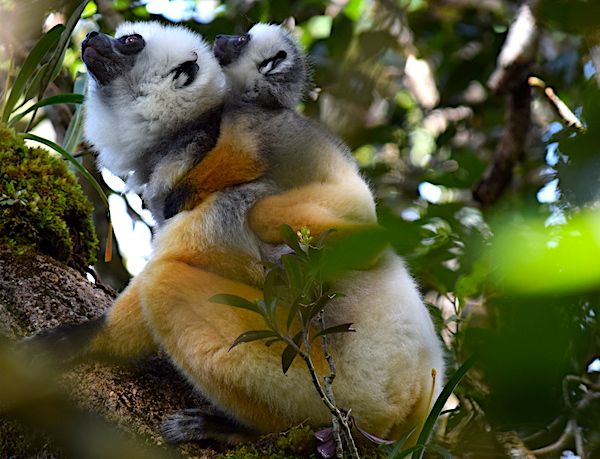
8. Flexibility is KEY When Travelling in Madagascar
Please remember to be flexible, patient, and respectful to your drivers and other Malagasy people you encounter.
Most Malagasy don’t like rushing. And in a country with limited resources, it’s easier to just go with the flow .
The Malagasy have a saying, “Mora Mora,” which translates to slow living and no worries.
They are going to be relaxed, and I promise that you will have much more fun if you relax too!

FOOD AND WATER IN MADAGASCAR
Filtered water.
- Lifestraw Go water filter bottles are legitimately a life saver. Especially if you are environmentally conscious or an avid hiker. If you don’t want to constantly be buying water bottles, you can fill your LifeStraw up with unfiltered tap water. Or if you’re on the trails … anywhere !This allows you to avoid starting hikes with 3+ litres of heavy water. I have even filled my Lifestraw in a warm and murky rice paddy during desperate times. I never felt any signs of sickness. Lifestraws are relatively prone to leaking and should be kept upright. But they are 100% worth the small investment!
- Avoid ice in your drinks unless you can guarantee that it was made with filtered water.
Food and Drink in Madagascar
- Sometimes there isn’t much variety in the cuisine. On the plus side, meals come at a fantastic value! The capital – Antananarivo – and touristy areas, especially along the coasts, will have more to offer. I’ve had some of the best meals of my life in Madagascar. Just be flexible during monotonous periods.
- Like with ice, avoid uncooked vegetables unless you’re certain they were washed with filtered water.
- I encourage everyone to try the “Ranonapango.” It’s essentially burnt rice tea. Although it’s not actual tea, it’s comforting and reminds me of popcorn… Rice is the cornerstone of the Malagasy diet. It’s the base of every meal, including breakfast.
- “Toka-gasy” is a Malagasy moonshine made with sugar cane. You could be offered a drink by a village King. It’s considered rude not to accept. However, do be aware that it is technically illegal. Though, not enforced because the alcohol content cannot be controlled. Some batches seem weak and others will knock you on your feet!
- It’s a good idea to bring protein bars . Especially if you have dietary restrictions (such as vegetarian or vegan) and/or plan on long hikes.
- Here’s some additional info on local food and what to expect.
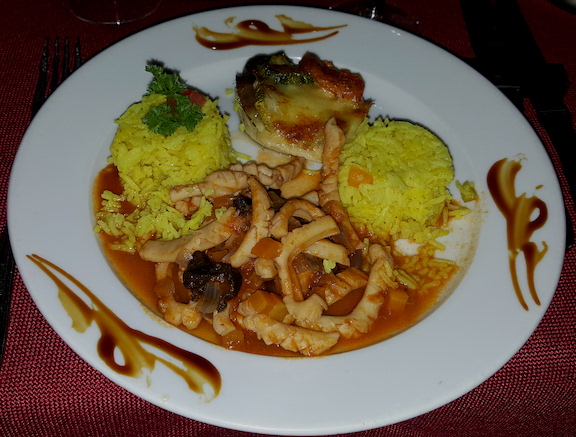
LANGUAGE IN MADAGASCAR
- Brush up on your French. Madagascar was once a French colony. French is still one of the official languages.
- Many signs and restaurant menus will be in French.
- Most prices will be told to you in French. It will be beneficial to at least learn your numbers .
- Try learning simple Malagasy phrases. The locals sincerely appreciate when you invest time and interest in their native language. For starters, “ Salama ” means hello. “ Veloma ” means goodbye!
- Malagasy people are more inclined to be open and friendly with people who aren’t from France. So don’t feel like you should become fluent in French!
- There are a few Malagasy/English handbooks available if you’re interested in languages. Malagasy is a tough language to learn until you’re immersed, especially the pronunciations! This short video of a few keywords in Malagasy with pronunciations will get you started.
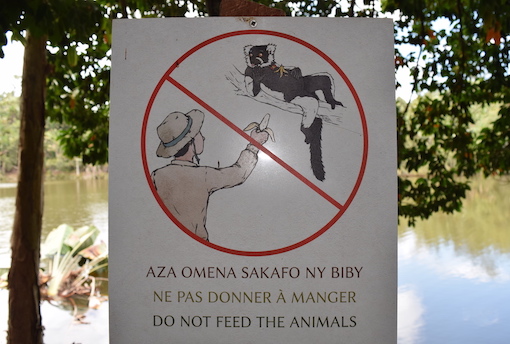
MONEY IN MADAGASCAR
Malagasy currency.
- The currency in Madagascar is called Ariary (MGA)
- Ar 4000 = 1 EUR
- Ar 4600 = 1 GBP
- Ar 2500 = 1 AUD
- Ar 250 = 1 ZAR
- The largest bill – Ar 20,000 – is equivalent to less than 6 USD. However, it’s considered substantial to most Malagasy. You’ll want a safe money bag or belt because you will be carrying many more bills than you are used to.
- The Ariary notes changed in 2017. Therefore, there are two designs for every bill, excluding the Ar 20,000. The Ar10,000 was the largest bill until 2017.
Access to Cash and Using Credit Cards in Madagascar
- To exchange your currency into Ariary, bring relatively large and new bills. They shouldn’t be older than 2010. It will be easiest for you to exchange your currency right at the airport. That way you’ll avoid the long lines and limited hours of banks. I find this to be the easiest way to access money.
- Credit and Debit cards. Some places in cities accept cards, but only VISA is reliable. Other networks like MasterCard and AmEx often won’t work. Honestly, it is best to carry cash !
- ATMs are only available in big cities. And there’s a limit to how much you can take out. Also, it’s not uncommon for ATMs to be out of order or empty.
Begging in Madagascar
- You will have people begging you for money. Especially children, mothers, the elderly, and the disabled. I would be lying if I said it wasn’t difficult to witness. But it’s unavoidable, especially in big cities.
- Everyone is entitled to their own opinions on how to handle these situations. But do acknowledge that your actions will impact more than just the beggar. Begging is not a sustainable way to make a living.
- If you decide to give, be tactful about it. Don’t flash large wads of cash. And understand that successful beggars often return with friends. To avoid being surrounded and causing a scene, wait until you are about to get back into your vehicle.
- I generally only give to those performing – sometimes people sing, dance, or play an instrument. And I never give to overly pushy people. I don’t want them thinking that’s the way they should approach all tourists.
- When giving money, I keep it discrete and politely urge them to use it for food.
Tipping in Madagascar
- Tips are generally well received and deeply appreciated. They’re sometimes it’s your biggest daily expenditures. Especially if you’re on a guided tour where most expenses are paid for ahead of time.
- When you can break large bills into smaller bills for tipping. Keep these tips in a separate pocket from the majority of your cash.
- To offer you a perspective, Malagasy people who are fortunate enough to be employed typically don’t make more than Ar 200,000 (~$56 USD) a month .
- If you want to keep your tips within the average range of other tourists, roughly follow the guide below. However, you are welcome to give more. Especially with guides and drivers. But only if they exceeded your expectations.
- Taxis and bars : Not expected or small bills.
- Porters : small bills, likely not over Ar 1000.
- Restaurants : 5% of the bill or less.
- Guides : 10% of the fee.
- Personal Drivers : Ar 5000 – Ar 20000 a day.

PACKING FOR MADAGASCAR
- Bring more warm clothes than you would think necessary. This includes thermals, hat, gloves, and fleece. Especially if you are travelling during Madagascar’s winter months (May – September).
- However, the climate throughout Madagascar changes rapidly . While the cool rainforest fog may send shivers down your spine in the morning, you can jump in the car and find yourself in a desert ecosystem by late afternoon. Therefore, you will want to pack a variety of clothing. Be sure to bring shorts, T-shirts, and durable sandals.
- If you plan on hiking , you should pack quick-drying field pants, sturdy hiking boots , wool socks, a baseball cap, and a rain jacket. While hiking in rainforests, I advise tucking your pants into your socks and your shirt into your pants to minimize leech bites. Leeches don’t transmit diseases, their bites don’t hurt, and they only remain attached for about half an hour. However, they do have an anticoagulant in their saliva. This causes you to continue bleeding even after they drop off. And these bites can itch worse than mosquito bites. Take precautions but don’t panic if you get a leech.
- I also recommend a substantial daypack with a supportive waist belt and chest strap. This could double as your carry-on luggage for the flight!
- Don’t forget bathing suits ! Beaches aren’t the only places to swim; some parks have natural swimming holes you can hike to.
Travel Documents For Madagascar
- Your passport cannot expire within 6 months of entry and must have at least 3 blank pages. They are strict about this!
- Carry your immunization records. They may not be requested if you haven’t been in countries with Yellow Fever.
- If you’re travelling with a large group, it’s beneficial to obtain your Madagascar VISA within your home country. Otherwise, it’s easy to purchase a tourist VISA upon arrival at the airport for 30, 60, or 90 days.
- I prefer to have paper photocopies of my passport and tourist Visa. The police will occasionally ask to see your passport, especially in cities and on the road, but I don’t like carrying it wherever I go.
Power in Madagascar
- Bring European plug adaptors if necessary: 220 Volt, 50Hz AC (Two circular metal pins).
- Charged power banks are invaluable, especially considering the amount of travel time. If you need your phone to stay alive for the entire day, I would bring a power bank or two.
General Equipment
- Pack binoculars for lemur and bird watching! If you’re concerned about them occupying souvenir space in your suitcase, donate them to a deserving park guide near the end of your journey. Malagasy guides are often in need of functioning binoculars.
- Bring a bright headlamp and/or flashlight for night hikes. There are nocturnal lemurs, chameleons, frogs, snakes, geckos and so many other creatures you don’t want to miss!
- Wristwatches are convenient for checking the time. I t might not always be a good time to pull out your phone.
- All sizes of Ziplock bags are precious. Smaller bags can organize your medications and chargers; medium bags can keep your electronics and books dry; large bags are perfect for wet or dirty laundry.
- I recommend silica gel packets and dry bags for your electronics and camera if you’re spending an extended time in humid, rainforest environments.
- Remember the items mentioned in previous sections : medications, hand sanitizer, sunscreen, LifeStraw water bottle , protein bars, bills to exchange, designated money bag, VISA credit/debit cards, etc.

THINGS TO BE MINDFUL OF IN MADAGASCAR…
Internet and phones.
- Most hotels have complimentary WiFi. However, even luxury hotels don’t always have internet or outlets in individual rooms/bungalows. Sometimes you have to sit in the reception area for internet access and charging. WiFi is available in some restaurants, but you will need to ask for the password.
- If you have an unlocked GSM cellphone, you may want to buy a local SIM card (Airtel, Orange, or Telma) and a 3G package. You can do this at the airport. If you don’t want to purchase a plan, you can buy phone credit at virtually any shop.
Cultural Awareness in Madagascar
- Avoid pointing with only your index finger extended. While it’s not considered offensive everywhere in Madagascar, it’s better to be safe than sorry. Pointing with your index finger is considered a “ fady ” or taboo in many regions of Madagascar. Especially when pointing directly at a tomb or grave. You can either gesture with your whole hand open, or bend your finger as you point.
- It is expected to haggle prices unless the price is already established, such as in tourist shops, restaurants, and hotels. It’s part of the culture.
- It’s respectful to dress fairly modestly . You’ll see everything in tourist areas. However, I personally avoid low cut tops, short skirts and shorts. And I only wear one-piece swimsuits.
- While difficult to ignore their puppy-dog stares, don’t feed street dogs . Malagasy people can view it as highly offensive that you took the time and money to feed a dog, but not their family.
- Most Malagasy actively avoid confrontation, especially with foreigners. Don’t take advantage of this.
Saying “Thank You” in Madagascar
- In Malagasy, “ Misaotra ” means thank you. Add “betsaka” if you want to say, “thank you very much.”
- If you anticipate any village visits, a gift that would be appreciated by everyone is a high-quality soccer ball . I always bring several deflated soccer balls and an air pump from the States.
- You’ll probably become close with your driver and guide. In addition to a tip, you may want to thank them with foreign gifts . A T-shirt representing your city or country, candy from abroad, or something else they wouldn’t find in Madagascar are the most cherished gifts.

PHOTOGRAPHY IN MADAGASCAR
Keep your camera close.
- If you have a DSLR camera, keep is safe, but don’t be afraid to bring it . There are countless sites and creatures to document that small cameras and phones just can’t capture.
- Keep all valuables close, especially in big cities like the capital of Antananarivo (Tana). I wouldn’t worry about being attacked. However, there are some skilled pick-pocketers. They can swipe your cash, phone, or other items without you even noticing.
- Just as you would back home, ask before taking someone’s picture. If you don’t speak French, saying “ Sary? ” (pronounced similarly to the English, “sorry”) – which means “Picture?” in Malagasy, should sufficiently get the point across.
- Adults will occasionally wave you off, but kids love to pose. You should show them their picture. But remember to wipe down your camera with a disinfectant afterward. The kids may excitedly grab your camera for a closer look with their cute, but dirty little hands.
Selfies in Madagascar
- NEVER pay to take pictures with wildlife kept at restaurants or hotels.
- Paying for these photos encourages the illegal and devastating pet trade. One of the reasons lemurs are endangered .
- Many of these animals, especially lemurs, don’t survive these conditions. If they don’t die from a poor diet, they may be killed when they display aggression as they become sexually mature. The “Magic of Madagascar Ecotour” will take you to one of the only rescue centers in Madagascar that confiscates pet lemurs and teaches them how to survive the wild.

SOUVENIR SHOPPING IN MADAGASCAR
Avoid purchasing….
- Carvings made from precious woods like Rosewood and Palisander
- Butterflies and other preserved insects
- Sea turtle shells
- Sapphires, other precious gemstones, and gold
28. Ethical Shopping
- Aim for sustainable gifts that don’t negatively impact wildlife or people while simultaneously expressing Malagasy culture.
- My main suggestions include… hand-dyed and spun silk scarves woven from sustainably farmed silk, items made out of recycled aluminium, and art constructed from repurposed zebu horns.

EXCLUSIVE TRAVEL EXPERIENCES IN MADAGASCAR
Places to visit in madagascar.
- RN7 is your best friend. This route starts at the capital and works its way south, then slowly west. It is accessible year-round and brings you through every incredible ecosystem Madagascar has to offer! That’s the route that we take on our Ecotour through Madagascar from July 1st – 12th, 2019!
- RN5 takes you west to see the “ Alley of Baobabs ” or possibly even the limestone forest of Tsingy ! This road is more difficult to navigate. It’s comical that it can even be considered a national route.
- The north is also beautiful, but similar to the west, the roads are very poor, especially as you work your way west.
- There are stunning places that are easiest to fly to, such as the rainforest peninsula of Masoala and the island of scuba-divers dreams – Nosy Be .
30. Wildlife You CANNOT Miss in Madagascar!
- “The Magic of Madagascar Ecotour” brings you to the largest species of lemur (indri) and the smallest lemur (mouse lemur), with many lemur species and sizes in between!

If you love Madagascar as much as we do, you’ll love our lemur t-shirts:

This meditating lemur t-shirt is the perfect gift for the animal lover in your life whether it be your wife, husband, sister, brother, best friend, son or daughter. It looks great with jeans and is perfect for a casual day out.

This t-shirt with words about lemurs is perfect for animal lovers – who want to show their love for ring-tailed lemurs and to raise awareness about this endangered species – see how many words related to lemurs you can find.
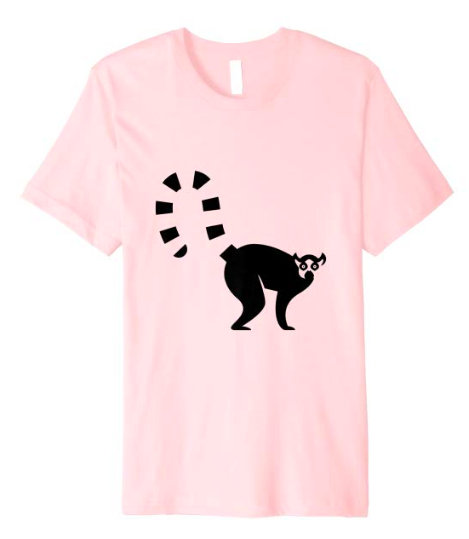
This ring-tailed lemur t-shirt will be a hit with animal lovers who want to show their love for these unique creatures while raising awareness about these critters from Madagascar who need our help.
ADDITIONAL MADAGASCAR INFORMATION
- Films and Books about Madagascar
- If you are keen to learn more about the creatures and culture before going or booking a ticket to Madagascar, I recommend either of the following films : Planet Earth II (on Netflix) and Island of Lemurs: Madagascar (IMAX) .
- Additionally, I recommend the following books : For the Love of Lemurs (Patricia Wright); Thank You, Madagascar (Alison Jolly); The Aye-Aye and I (Gerald Durrell); and Madagascar – The Eighth Continent (Peter Tyson).
- Field Guides for Madagascar
- There are good field guides available for most taxonomic groups in Madagascar. I have personally had the best luck with Lemurs of Madagascar: Third Edition and Birds of Madagascar and the Indian Ocean Islands . Note: if you can’t find that check out Lemurs of Madagascar: Tropical Field Guide Series .
- For travel guides, the Bradt Guides are probably the best guide I have come across. The author has been travelling to Madagascar for over 30 years! The Lonely Planet – Madagascar: 8 th Edition is also quite thorough.
- Online Info on Travel in Madagascar
- While this article provides a comprehensive list, you can’t fit everything into a single post! I recommend perusing additional online resources that can provide even more information about Madagascar. Be sure to check out 28 Interesting Facts About Madagascar !
- Continue researching and reading! The more you know, the better you can prepare for culture shock. And the more you will appreciate all the sights, sounds, smells, and tastes of Madagascar!

The long-ground roller is a bird species endemic to the spiny forests of Madagascar; Photo: Alicia Lamb.
Best of luck with your travels in Madagascar! Take care and enjoy, or as they say in Madagascar, “Mazotoa!”


©Dennis van de Water/Shutterstock
Lemurs, baobabs, rainforest, desert, hiking and diving: Madagascar is a dream destination for outdoors enthusiasts – half the fun is getting to all these incredible attractions.
Attractions
Must-see attractions.

Allée des Baobabs
Western Madagascar
One of Madagascar's most recognisable images, this small stretch of the RN8 between Morondava and Belo-sur-Tsiribihina is flanked on both sides by…

Musée de la Photo
Antananarivo
Opened in early 2018, this fabulous photography museum is Antananarivo's best museum. There are four small rooms showing films (in French, English or…

Parc National Isalo
Southern Madagascar
Isalo is one of Madagascar's most beautiful parks. It contains sculpted buttes, vertical rock walls and, best of all, deep canyon floors shot through with…

Parc National Bemaraha
If you visit one place in western Madagascar, make it Parc National Bemaraha. A Unesco World Heritage Site, its highlights are the jagged, limestone…

Poised atop Ambohimanga hill is the Rova, the fortress-palace. The walls of the compounds were constructed using cement made from sand, shells and egg…
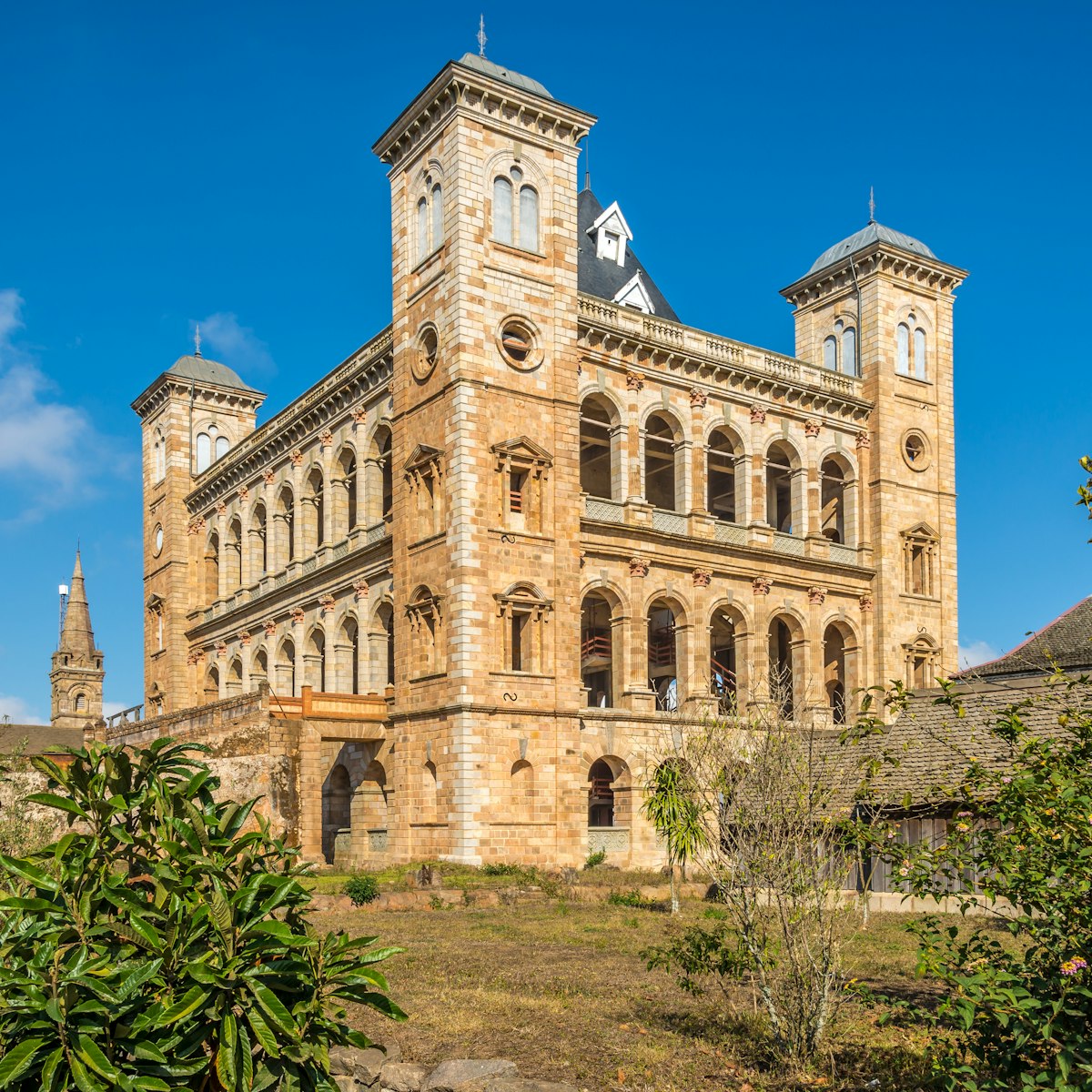
Tana’s rova (fortified palace), known as Manjakamiadana (A Fine Place to Rule), is the imposing structure that crowns the city's highest hill. Gutted in a…

Parc National Masoala-Nosy Mangabe
Eastern Madagascar
This 2100-sq-km national park contains one of the best primary rainforests in the country. It is famous for its vegetation, which includes rare hardwoods,…

Parc National Analamazaotra
This is the most popular park within Parc National Andasibe Mantadia. The real draw of this reserve is the rare indri, Madagascar’s largest lemur, whose…
Latest stories from Madagascar
Filter by interest:
- All Interests
- Adventure Travel
- Art & Culture
- Beaches, Coasts & Islands
- Food & Drink
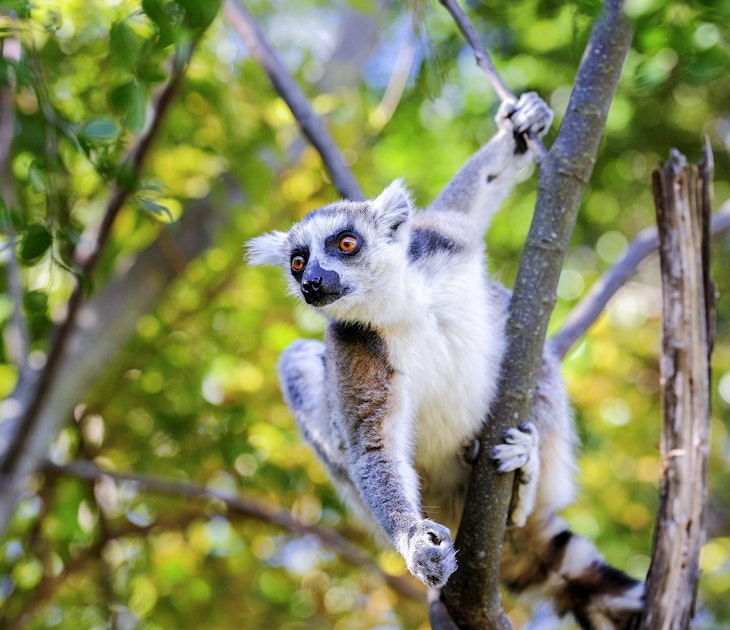
Wildlife & Nature
Oct 30, 2020 • 1 min read
Lemurs are exclusive to Madagascar and over 100 unique species live there, but 98% are threatened with extinction.
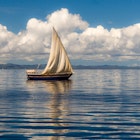
Sep 29, 2020 • 2 min read

Oct 9, 2019 • 3 min read

Sep 27, 2019 • 6 min read
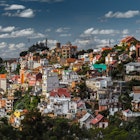
Aug 21, 2018 • 6 min read

Apr 18, 2017 • 16 min read

Oct 19, 2016 • 5 min read

Jun 20, 2016 • 1 min read
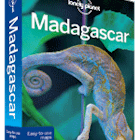
Jun 1, 2013 • 5 min read

Apr 10, 2012 • 3 min read
in partnership with getyourguide
Book popular activities in Madagascar
Purchase our award-winning guidebooks.
Get to the heart of Madagascar with one of our in-depth, award-winning guidebooks, covering maps, itineraries, and expert guidance.
Madagascar and beyond

Nomadic Matt's Travel Site
Travel Better, Cheaper, Longer
Madagascar Travel Guide
Last Updated: September 2, 2023
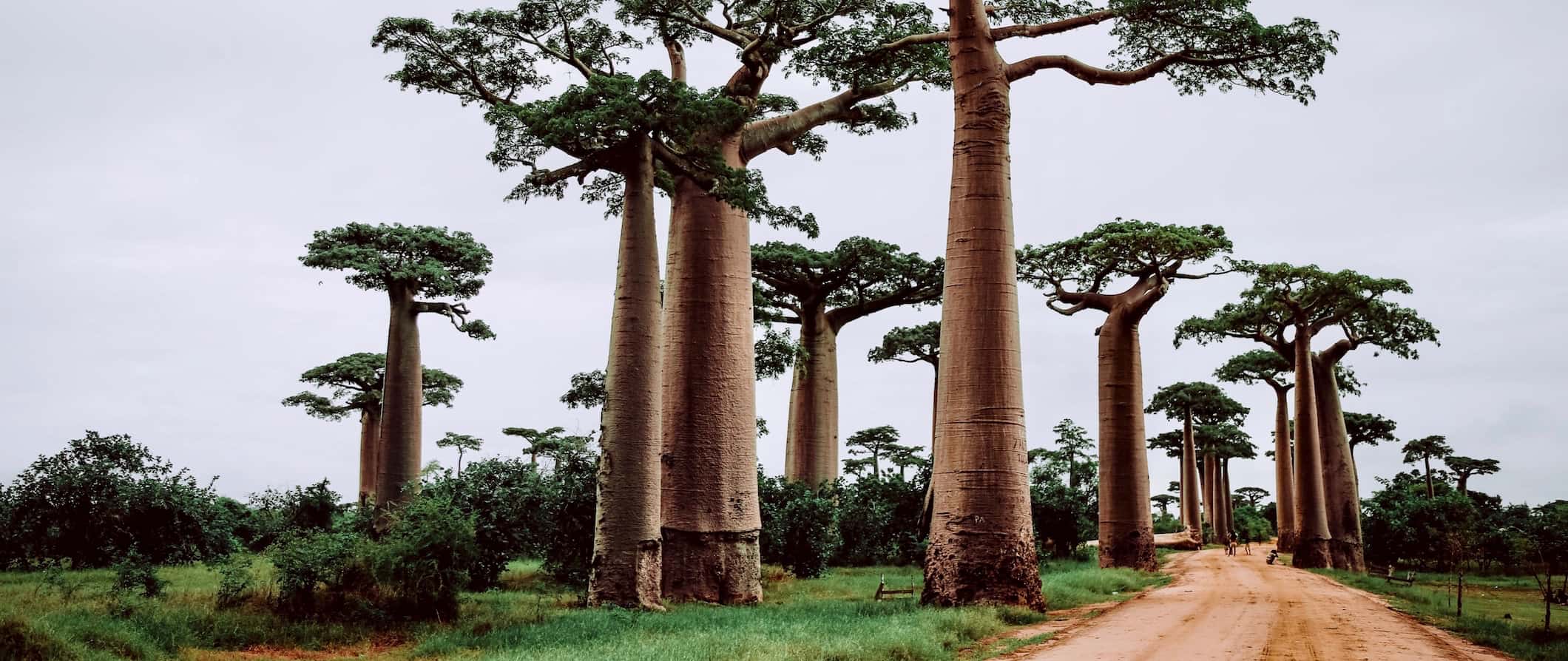
Madagascar, a country famed for its lemurs, massive baobab trees, birding, and jungles, offers visitors a rich playground to explore .
I was enthralled by the country’s beauty during my visit. There are sweeping canyons and gorges, grand waterfalls, and a diverse landscape that spans the entire island. One day you’re in a tropical jungle, the next you’re in an arid plain, and a few hours later you’re on a pristine beach. The scenery here is unlike any other destination I’ve been to. Plus, there really are a seemingly endless variety of cute lemurs!
Located 400 kilometers (250 miles) off the eastern coast of Africa, Madagascar is nearly the size of France and is the fourth largest in the world. It has a population of over 20 million but sees only 300,000 tourists a year.
While traveling Madagascar is challenging , it’s also incredibly rewarding. The travel trail here isn’t well-worn, which means visitors get a much more rugged, unique experience.
This Madagascar travel guide will help you plan the trip of a lifetime, save money, and ensure you make the most of your time in this off-the-beaten-path destination.
Table of Contents
- Things to See and Do
- Typical Costs
- Suggested Budget
- Money-Saving Tips
- Where to Stay
- How to Get Around
- How to Stay Safe
- Best Places to Book Your Trip
- Related Blogs on Madagascar
Top 5 Things to See and Do in Madagascar
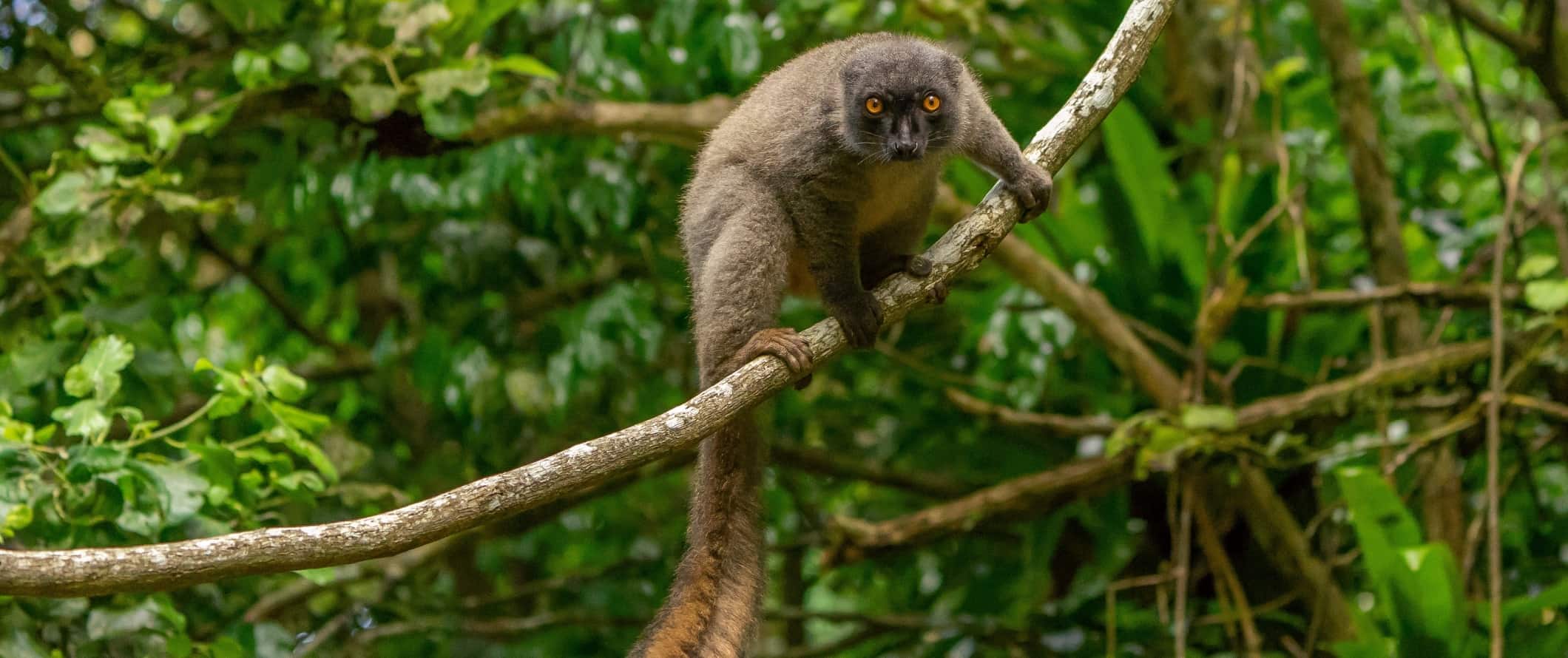
1. See the Avenue of the Baobab
Baobab trees are massive trees that can grow 30 meters (98 feet) tall, 11 meters (36 feet) wide, live up to 1,000 years, and are completely unique to Madagascar. While the trees can be found throughout the country, this road lined with them is one of the most iconic images of Madagascar .
2. Visit Tsingy
This park, near the western coast, is really two parks: Great Tsingy and Little Tsingy. It’s not an easy place to visit (it takes a full day via 4WD on very rough terrain to get here) but the views are worth it. The rock formations here are amazing and otherworldly. Admission is 55,000 MGA.
3. Explore Isalo National Park
Featuring multiple rugged hiking trails, cliffs, ravines, gorges, canyons, and plentiful fauna, this Westworld-like park blew me away. You are required to hire a guide before you explore though (they are found at the entrance). Admission is 65,000 MGA and guides cost between 80,000-100,000 MGA.
4. Relax at Nosy Be
Nosy Be is the place to go for Madagascar’s trademark beaches. Located 8 kilometers (5 miles) off the coast, this small island is home to white-sand beaches, expensive restaurants, and upscale resorts. Beach parties erupt each Sunday and there’s some amazing snorkeling, diving, fishing, and whale watching.
5. Explore Lemur Island
Lemur Island is a wildlife refuge that has four species of lemurs that have been rescued from being pets. They are also released back into their natural habitat when ready. If for some reason they can’t make it alone in the wild, they stay in the park. Admission is 12,000 MGA.
Other Things to See and Do in Madagascar
1. relax at île sainte marie.
While everyone goes to Nosy Be for the fancier resorts, if you want something a little more local, cheaper, and more relaxed, check out Île Sainte Marie. Located off the eastern coast, this former pirate capital (the 17th-century pirate Captain Kidd’s ship sank nearby) is a funky, relaxed island full of little coves, a pirate graveyard, and delicious seafood. The beaches aren’t as good as Nosy Be but there’s a beautiful white-sand beach in the south of the island that few people visit. This is also the best part of the country for whale watching. Round-trip flights here cost around 810,000 MGA. (Don’t take the boat, it’s slow and terribly inconvenient).
2. See Ranomafana National Park
This is one of the best spots in the country to see lemurs as it’s home to twelve different species of them. Besides lemurs, there are the famous giraffe beetles as well as lots of birds, chameleons, over 130 species of frogs, and other wildlife to see. Of the multiple trails available, I would do the morning hike, then the afternoon and night hikes at the secondary entrance (a guide is required for these). The majority of tours skip the latter hikes, so if you do them, you’ll get more of the park to yourself. Due to the park’s popularity, there’s a daily limit on the number of people who can visit so it’s best to go in the low season. Admission is 22,000 MGA per day and guides cost between 80,000-120,000 MGA.
3. Visit Toliara
This small west-coast town is famous for its expats, pizza (a seriously popular dish in the country), and for being a launching pad for diving excursions to the Great Reef offshore. There’s not much else to do except sit by the beach and relax. Driving here on the N7 (the only north-south highway) is also pretty amazing as you can take in Ranomafana National Park, Isalo National Park, and other stunning vistas along the way! A single dive costs 180,000 MGA.
4. Explore Antananarivo
The capital of Madagascar, known as Tana for short, it’s a gritty city with terrible traffic — but there’s a lot of history and culture here that make a short visit worthwhile. See the lemur park and the Rova (the old palace), get a sense of the international scene in the city and use it as your launching pad for stops further afield.
5. Try zebu
Zebu is a type of cow with a large hump on its back. It’s more of a work animal, like an ox, and you’ll see them all over the country (they are even used as dowries in weddings). It’s the only kind of beef here, and it is always on the menu (along with healthy portions of rice). The meat is really tough (thanks to all the work the animals do in the fields) and so it’s best in a stew. Be sure to try it while you’re here!
6. Drive the N5
Heading north along the east coast from Toamasina to Maroantsetra, this road — and I use the word “road” loosely — is a potholed-filled expedition through some of the rawest and most pristine areas of Madagascar. It’s also your best chance to see the famous aye-aye lemur (which kind of looks like a possum). The road weaves through dense jungle, across rivers, and through tiny towns in one of the most undeveloped parts of the country. Stretching 400 kilometers (250 miles), Route Nationale 5 (N5) is arguably the worst road (in terms of its condition) in the country. Many sections are often impassable so budget lots of time to drive it (they say it takes over 24 hours to drive the entire “road”).
7. Go whale watching
Between June and November more than 7,000 humpback whales migrate from Antarctica to Madagascar to breed, meaning the whale watching here is some of the best in the world. While we were taking the boat to Île Sainte Marie, we saw a couple breach the water and it was absolutely stunning to see. Plus, with so few tourists here, you aren’t stuck in a horde of boats vying for a photo. Adult humpback whales grow up to 16 meters (52 feet) and weigh over 30 metric tons (66,000 lbs.). You can also see the less-common Omura whale (dwarf fin whale) around Madagascar as well. Tours cost 135,000 MGA.
8. Enjoy Mantadia National Park
Located 160 kilometers (100 miles) east of the capital, Mantadia National Park is a protected area spanning 155 square kilometers (60 square miles). It’s home to 14 species of lemurs as well as over 115 types of birds and 84 kinds of amphibians — many of which are endangered. The landscape is a stunning mix of old-growth forest and rainforest, and you’ll see lemurs almost everywhere you go! Admission is 45,000 MGA and the required local guide is 60,000-80,000 MGA. There are also lodges in the park where you can stay overnight for 57,000 MGA per night.
9. Visit Lokobe National Park
Situated on the southeastern tip of Nosy Be, Lokobe National Park is one of the Sambirano region’s only remaining forests. Black lemurs, panther chameleons, and several endemic species of birds all make their home here. To get to Lokobe National Park, you’ll need to take one of the park’s pirogues (rowboat) from Nosy Be, which takes roughly 20-40 minutes. Admission is 55,000 MGA. Lokobe is one of the few national parks in Madagascar where a local guide is not needed.
10. Relax on Nosy Mangabe
Nestled deep between the coastal hills of Helodrano Antongila Bay as it carves its way inland on the north-eastern edge of Madagascar, this small island is famed for its booming populations of bug-eyed aye-aye lemurs. Huge fig trees wrangle around groves of palms, ruffed lemurs meet Mantella frogs in the undergrowth, and the green hills crash down into secluded bays of bright yellow sand. It’s a stunning landscape to say the least. Boats to the island and all the necessary permits are available in Maroantsetra. Admission is 45,000 MGA.
11. Visit Ambohimanga
The sacred royal hill of Ambohimanga, located 24 kilometers (15 miles) from the capital, was the one-time home of the country’s kings and the modern country’s first capital. Expanded throughout the 1700s, the walled complex contains a mound of palaces and burial grounds, crumbling fortifications, and regal tombs. King Andrianampoinimerina launched his now-famed campaigns to reunify the country from here, following more than seven decades of civil war in the 18th century. Admission is 10,000 MGA and you can also get a guide to show you around for free (just be sure to tip them).
12. Go to Antsirabe
Perched high up in the Central Highlands, Antsirabe is the third-largest city in Madagascar and the premier destination for the French who came here during the height of colonialism. They built elegant Parisian-style mansions, raised Gothic cathedrals, and laid wide boulevards with plane trees casting shade. The dusty city retains some of that charm and is one of the most aesthetically pleasing cities in the country. Antsirabe, a name that means “place of much salt” in Malagasy, is home to multiple natural thermal springs, making it a popular healing retreat. It’s also one of the best food spots in the country.
Madagascar Travel Costs
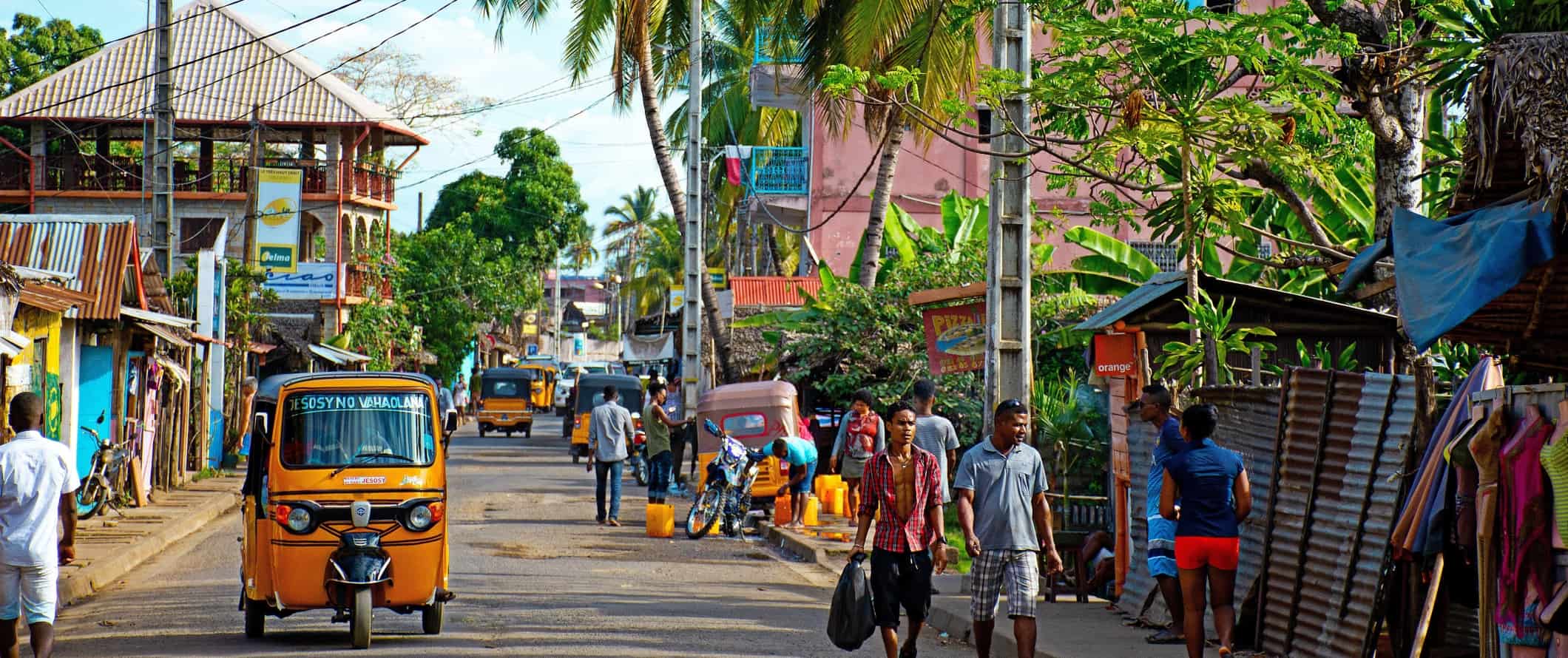
Accommodation – There are only a few hostels in the entire country and a bed in a dorm costs around 35,000 MGA, though sometimes you can find beds for as low as 20,000 MGA. For a private room, expect to pay at least 50,000 MGA. Free Wi-Fi and self-catering facilities are standard, though free breakfast is not.
Camping is available around some of the national parks. Wild camping is not recommended.
Budget hotels start at 60,000 MGA per night for a twin or double with a shared bathroom. For a room with a private bathroom in a hotel with more amenities (such as a pool), expect to spend at least 75,000 MGA per night. Free Wi-Fi is common but not included everywhere. A few hotels also offer free breakfast.
Airbnb is available around the country in larger towns and cities. You can find private rooms for 48,000 MGA per night and entire homes/apartments for around 100,000 MGA per night.
Food – Malagasy cuisine reflects the trading and colonial history of the island, with French, Southeast Asian, African, and Middle Eastern flavors all making their way into the country’s dishes. Tomato, ginger, turmeric, garlic, and onion are the commonly used spices in Malagasy cuisine.
Food in Madagascar is based around the country’s main staple: rice, usually accompanied by seafood or zebu. Rice is so central to food here that the Malagasy term for “to eat a meal” literally means “to eat rice.” Any side that comes with rice is called laoka . Some examples of sides include tomato salsa, stewed leafy vegetables, or beans.
Since zebu is quite tough, it’s often stewed (which is the best way to have it in my opinion), such as in romazava , which contains braised meat, tomato, garlic, ginger, and anamalao flowers, and is often considered the national dish.
Beef or prawn skewers are another common offering. For food on the go, be sure to try the nem (spring rolls) and mofo (fritters). They are cheap (usually around 50-200 MGA) and delicious!
Dining out is very inexpensive here. For a meal of traditional cuisine at a casual sit-down restaurant, expect to pay around 7,700 MGA.
Meals at restaurants that cater to tourists are the most expensive, offering Italian food or crepes for 25,000-28,000 MGA for a meal with a drink. For a pizza (which you can find almost everywhere), prices start at 10,000-15,000 MGA. A fast-food combo meal costs 20,000 MGA.
A beer costs 3,000 MGA while a latte or cappuccino costs 4,500 MGA. Bottled water is 1,500 MGA.
Cooking your own food won’t really save you any money since restaurants here are so cheap. However, if you do want to buy your own food, expect to pay around 77,000 for a week’s worth of groceries including staples like rice, pasta, seasonal produce, and some meat.
Backpacking Madagascar Suggested Budgets
On a backpacking budget of 110,000 MGA per day, you can stay in hostels, take shared or self-guided excursions, take buses between destinations, enjoy a couple of beers, eat street food for all your meals, and do mostly free activities like hiking and enjoying the beach.
On a mid-range budget of 240,000 MGA per day, you can stay in a private hostel room or Airbnb, take some guided tours, visit some islands and national parks (with the required guides), eat out at traditional Malagasy restaurants for all your meals, drink more, and take minibusses between cities.
On a “luxury” budget of 575,000 MGA per day, you can stay in a hotel, eat out at any restaurant, hire private drivers, do as many excursions as you want, and take taxis everywhere. This is just the ground floor for luxury though. The sky is the limit!
You can use the chart below to get some idea of how much you need to budget daily, depending on your travel style. Keep in mind these are daily averages – some days you’ll spend more, some days you’ll spend less (you might spend less every day). We just want to give you a general idea of how to make your budget. Prices are in MGA.
Madagascar Travel Guide: Money-Saving Tips
Looking to save money while you’re traveling Madagascar? Here are some of the best ways to save money during your trip:
- Travel during the off-season – Flights to Madagascar are cheapest during the low season (October-April). While it’s not the most ideal time to visit, your flight is your biggest expense (assuming you’re not booking a multi-day tour). Visiting during the shoulder season can go a long way to saving you money.
- Take local minibusses – When traveling between towns, take public minibusses. Fares are 20,000-50,000 MGA. Exercise patience, as you’ll rarely show up to your destination on time — but you’ll save money over hiring a driver and they are better than the regular bus.
- Skip the car rental – Car rentals cost the same as renting a car and driver. Skip going solo and hire a driver — they’ll not only be more familiar with the driving conditions but most drivers know a lot about the country and landscape too.
- Avoid the hotel restaurants – Food at hotels is cheap, however, it’s usually double the price of a restaurant elsewhere in the city.
- Get a local SIM card – Local SIM cards cost 4,000 MGA, and around 30,000 MGA per gig of data. A local SIM is much cheaper than your data plan from home.
- Bring a reusable water bottle – The tap water in Madagascar is not safe for drinking. Avoid single-use plastic by bringing a bottle and filter like LifeStraw . You’ll save money, stay safe, and help the environment!
Where to Stay in Madagascar
Hostels are few and far between in Madagascar. Here are some suggested budget-friendly options in the country:
- Madagascar Underground (Antananarivo)
- Le Karthala (Antananarivo)
- Coucher de Soleil (Nosy Be)
How to Get Around Madagascar
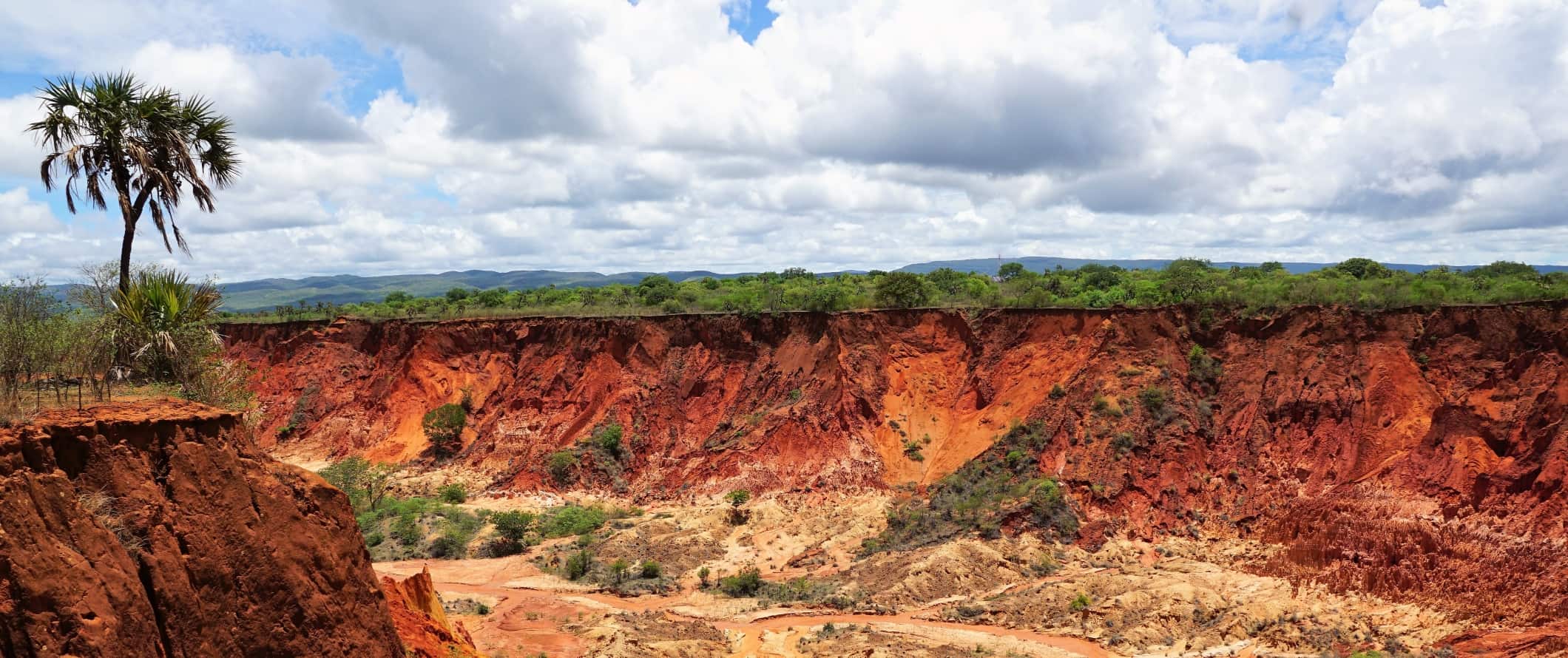
Tours – Multiday tours are the most common way to get around Madagascar. It’s a hard destination to navigate on your own, especially if you don’t want to hire a driver or speak a lot of French. Tours are the most popular choice for anyone looking to experience the country. I met travelers of all ages on my tour with Intrepid Travel .
Tours usually range from 11-24 days. A 14-day tour is around 9,000,000-17,000,000 MGA.
Bus – Buses here are slow, crowded, and unreliable. They don’t leave on a set schedule and often break down due to the terrible road conditions. However, they are the most affordable and best option to get around.
The 350-kilometer (217-mile) journey from Antananarivo to Toamasina takes around 7 hours and costs 30,000 while the 570-kilometer (355-mile) trip from Antananarivo to Mahajanga takes 12 hours and costs 40,000 MGA.
For shorter distances, most minibusses cost between 10,000-20,000 MGA.
Air – There’s only one domestic airline here (Air Madagascar and its subsidiary Tsaradia) and one-way tickets cost at least 350,000 MGA. If you’re on a budget, flying isn’t feasible.
Additionally, flights run on limited schedules, and flights are often canceled without notice, so make sure your plans are flexible if you’re flying.
Train – The train is only available between Fianarantsoa and Manakara. It’s a 300-kilometer (186 mile) trip and it usually takes around 10 hours (often much longer due to dilapidated railway lines and trains). Tickets are 70,000 MGA.
Car Rental – Car rentals can be found for around 280,000 MGA per day. However, it’s uncommon that rental agencies rent cars without a driver. Having a driver is recommended since the roads here are quite challenging and you’ll need a local to help in case anything goes wrong. I’d avoid driving here as the roads are hectic and in poor condition.
When to Go to Madagascar
April-December is the best time to visit Madagascar. You’ll avoid the rainy season as well as the cyclones that often occur. This is the most popular time to visit, however, Madagascar doesn’t see a huge influx of tourists so it doesn’t really get crowded here.
July-September is the best time to see the migrating humpback whales, while October and November are best for seeing baby lemurs. If you want to beat the “crowds” then visit in April, right at the end of the rainy season. It won’t be as hot, but the jungles will be lush and the beaches quiet.
Expect temperatures around 21-24°C (70-75°F) during the peak months of June-August.
How to Stay Safe in Madagascar
Madagascar is a relatively safe country, however, due to the extreme poverty here theft can occur. Don’t flash money or valuables and keep an eye on your belongings if taking a bus or if in large crowds. Keep your wallet and phone secure at all times, just to be safe.
While most cities and towns are safe, avoid walking around at night in Antananarivo.
Solo female travelers should generally feel safe here, though some precautions apply (avoid walking around alone at night, never accept drinks from strangers, dress appropriately so you blend in, etc.).
The roads here are terrible and accidents are common. Always wear your seatbelt (if you have one).
If exploring a city or rural area and you come across wild dogs, act with caution and don’t provoke them.
There are a lot of beggars here, especially kids, and you have to just keep saying no and walking away. Be polite but firm.
There aren’t many common scams here, but if you want to learn which to be on the lookout for, here are some common travel scams to avoid .
As always, keep your wits about you at nighttime, particularly in the capital. Ask your hotel to call you a taxi if you need one (always negotiate the price before getting in the car). Your hotel/hostel staff can write down directions and help you with the fare estimate so you don’t get ripped off.
If you do experience an emergency, dial 117 for assistance.
Always trust your gut instinct. Avoid isolated areas at night, and be aware of your surroundings at all times. Make copies of your personal documents, including your passport and ID, before you leave on your trip. Forward your itinerary along to loved ones so they’ll know where you are.
The most important piece of advice I can offer is to purchase good travel insurance. Travel insurance will protect you against illness, injury, theft, and cancellations. It’s comprehensive protection in case anything goes wrong. I never go on a trip without it as I’ve had to use it many times in the past.
Madagascar Travel Guide: The Best Booking Resources
These are my favorite companies to use when I travel. They consistently have the best deals, offer world-class customer service and great value, and overall, are better than their competitors. They are the companies I use the most and are always the starting point in my search for travel deals.
- Skyscanner – Skyscanner is my favorite flight search engine. They search small websites and budget airlines that larger search sites tend to miss. They are hands down the number one place to start.
- Hostelworld – This is the best hostel accommodation site out there with the largest inventory, best search interface, and widest availability.
- Booking.com – The best all around booking site that constantly provides the cheapest and lowest rates. They have the widest selection of budget accommodation. In all my tests, they’ve always had the cheapest rates out of all the booking websites.
- Get Your Guide – Get Your Guide is a huge online marketplace for tours and excursions. They have tons of tour options available in cities all around the world, including everything from cooking classes, walking tours, street art lessons, and more!
- SafetyWing – Safety Wing offers convenient and affordable plans tailored to digital nomads and long-term travelers. They have cheap monthly plans, great customer service, and an easy-to-use claims process that makes it perfect for those on the road.
- LifeStraw – My go-to company for reusable water bottles with built-in filters so you can ensure your drinking water is always clean and safe.
- Unbound Merino – They make lightweight, durable, easy-to-clean travel clothing.
- Top Travel Credit Cards – Points are the best way to cut down travel expenses. Here’s my favorite point earning credit cards so you can get free travel!
Madagascar Travel Guide: Related Articles
Want more info? Check out all the articles I’ve written on backpacking/traveling in Madagascar and continue planning your trip:
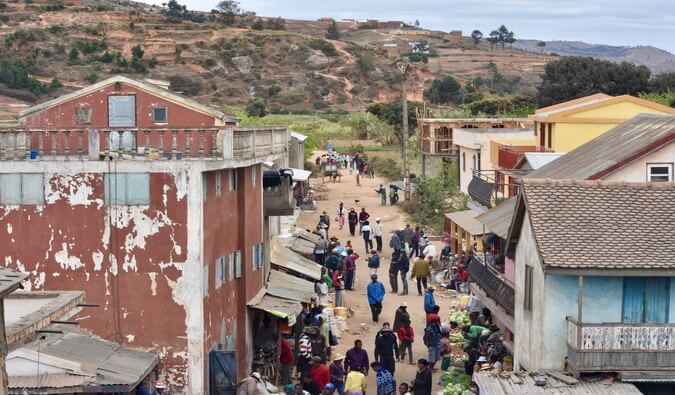
A Journey Through Madagascar: Notes on the Privilege of Travel
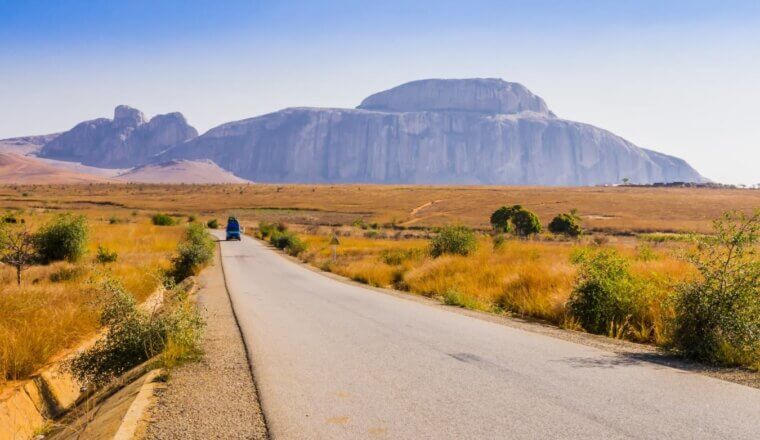
How to Travel Around Madagascar
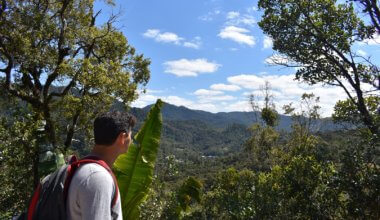
The Top Things to See and Do in Madagascar
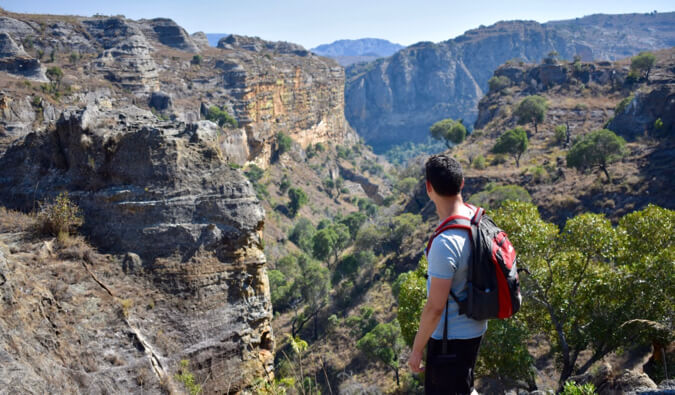
30 Epic Photos From My Trip to Madagascar
Get my best stuff sent straight to you, pin it on pinterest.
- Where To Stay
- Transportation
- Booking Resources
- Related Blogs

Madagascar Travel Guide (Everything You Need To Know Before You Visit)
By Author Christian L.
Posted on Published: May 21, 2020 - Last updated: June 28, 2021
Categories Africa , Destinations , Madagascar
Madagascar is the perfect destination for the adventurous traveler and those who want to get away from mass tourism – but traveling around the 4th biggest island in the world will require a lot of time, and will push your patience to breaking point. That being said, this Madagascar travel guide will make the journey a whole lot easier.
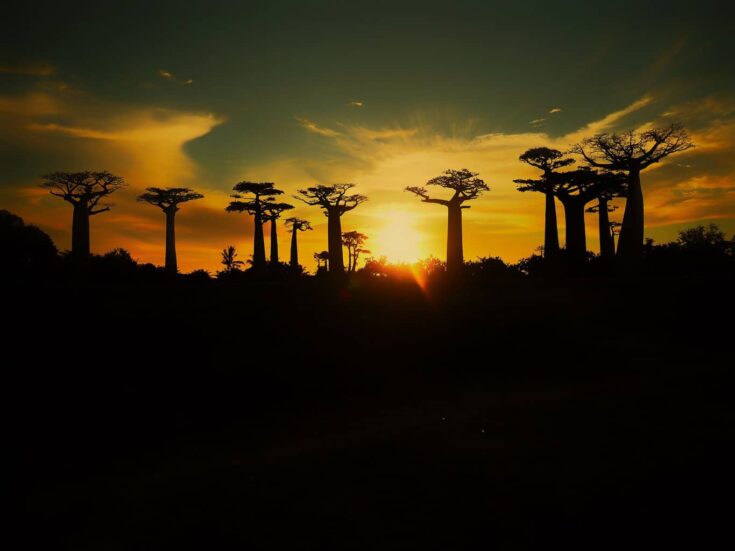
But if you’ve got time and patience, you will be rewarded with one of the most biodiverse destinations in the world.
Madagascar is home to thousands of species of flora and fauna of which almost 90% cannot be found anywhere else in the world, including the famous lemurs which are only found in Madagascar.
That’s actually a lie; there is only one species of wild lemurs on Comoros.
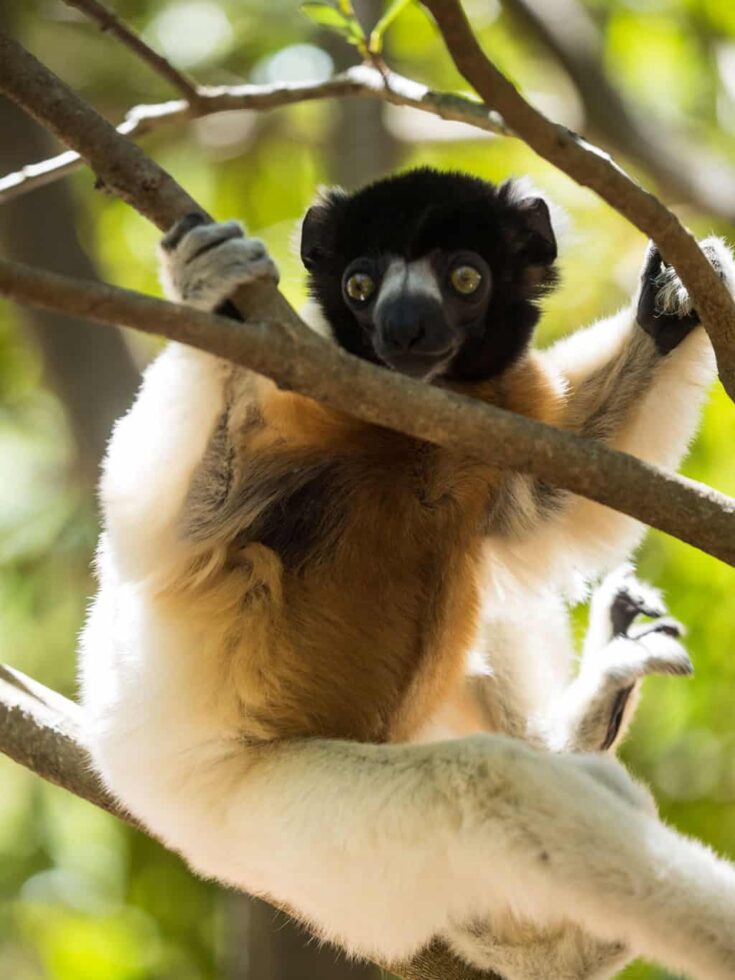
Madagascar is also home to some of the best and most underrated beaches in the world together with some breathtaking nature and scenery, making it a perfect travel destination. But if you’re still on the fence, here are ten bullet-proof reasons you should visit Madagascar .
Need to know how to travel to Madagascar? It can be tricky going it alone if you’ve never ventured onto a remote island before. Keep reading to find out exactly how to travel to Madagascar.
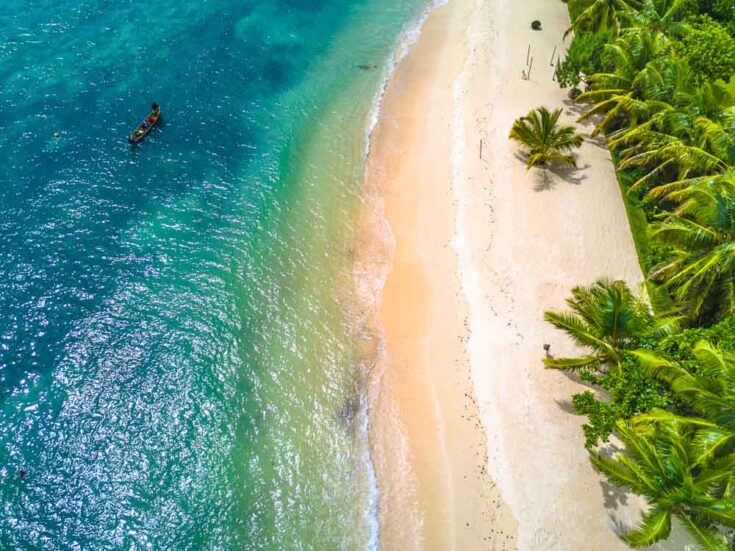
Madagascar Tourism | What You Need to Know
All the information provided here is from my experience traveling around Madagascar in April 2017, but has been updated to reflect the latest pricing and information.
Visa For Visiting Madagascar
Visas are required for everyone visiting Madagascar. You can obtain a 30 days or 60 days visa at all international airports. Despite what the guidebooks say, the 30-day visa is NOT FREE. A 90-day visa is no longer available! 30 days 35 Euro / 37 USD 60 days 40 Euro / 45 USD Or you can apply in advance for an Evisa to Madagascar , this will save you a lot of time when arriving at the airport.
There are no ATMs or money exchanges before immigration and customs, so be sure to bring cash with you to pay your visa fee.
No passport photos are required, but a Yellow Fever vaccination certificate is (depending on your travel history and the countries you’ve visited).
The visa sticker takes one full page of your passport.
Arriving At Ivato International Airport (TNR) When You Travel to Madagascar
The main airport in Madagascar is located 20 km northwest of Antananarivo, the capital of Madagascar.
BNI Madagascar and Bank of Africa are both located after immigration and customs, and they both offer currency exchanges and ATMs. Unlike lots of airports, the exchange rate at Ivato is pretty good, so it’s fine to change up money here.
There are also three small mobile-phone shops selling local sim cards for the three main providers in the country, Orange, Telma, and Airtel. The shuttle bus between the airport and the capital is NOT running anymore, so the only way to get to town is by taking a taxi or arranging an airport pickup via your hotel.
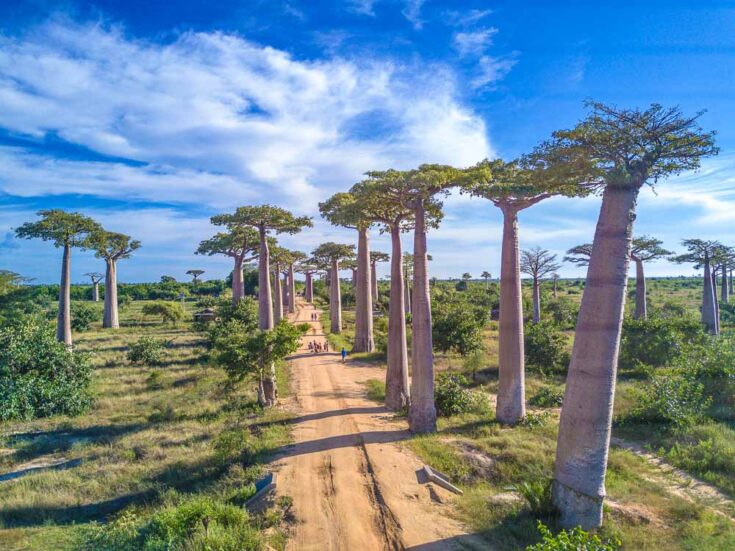
Because of traffic, the drive from the center could take anywhere from 40 minutes to almost 2 hours if you get stuck in evening or morning traffic. The price to the center of Antananarivo is circa 40 000 Malagasy Ariary in the day, but remember to bargain. And at night it will set you back 50 000 Ariary.
NB. The local currency is NOT accepted after immigration on departure. Only USD/Euro are. So be sure to get rid of your local Ariary before you go through immigration on departure. If not, you will be stuck with your Ariary like me.
Money in Madagascar.
The local currency of Madagascar is called Malagasy Ariary (MGA), just called Ariary.
1 USD: 3788 Ariary
1 Euro: 4523 Ariary.
British sterling didn’t seem to be a popular currency to exchange.
Every city and decent-sized town has numerous ATMs these days, and the two main banks are BNI Madagascar and Bank Of Africa. Both accept Visa, Visa Electron, and MasterCard.
None of the banks charged me bank fees when withdrawing money.
The maximum withdrawal at once is 400 000 Ariary (117 Euro / 125 USD)
Every bank seems to be able to exchange USD and Euro, but you will need your passport. But what you really want to know is, is Madagascar expensive? The answer is no. Although the flights can be pricey, that’s usually the most expensive part of the trip. The rest of your Madagascar trip should be relatively cheap.
Internet in Madagascar
Wifi is available in most mid-range hotels and guesthouses around the country, but the speed is slow outside the big cities. 4G mobile connection is available in Antananarivo and Tamatave. In smaller cities a 3G/2G connection is available.
There is rarely an internet connection in smaller towns and on the road between most places.
Orange, Telma, and Airtel all sell sim cards for 40 USD with a 3GB data package on arrival at the airport.
How To Travel Around Madagascar
Traveling around Madagascar takes time and is very slow even by African standards.
Of the now 101 countries I have been to, I will go so far as to say that Madagascar is one of the slowest and most uncomfortable countries to travel around in the entire world.
The only other country I have visited that can be compared to Madagascar is Mongolia.
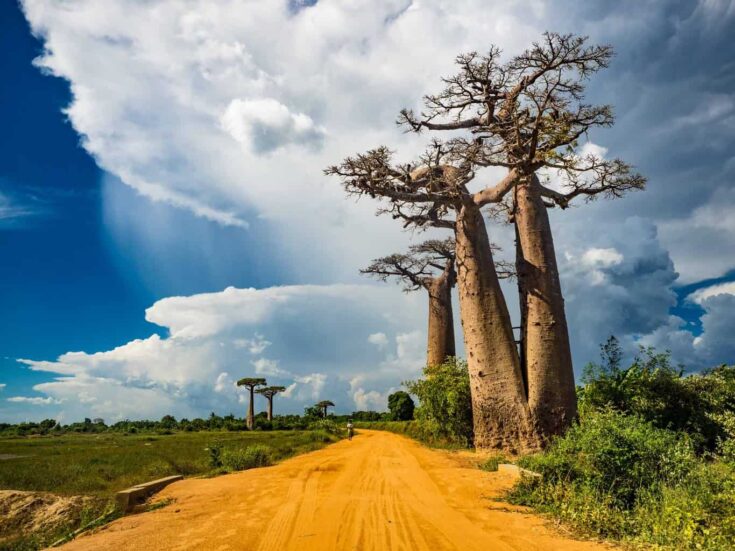
Update: Good News, While flying domestic inside Madagascar used to be ridiculously expensive, there is now a new local budget airline in Madagascar.
Air Madagascar has created a subsidiary just for a domestic flight, and it’s called Tsaradia ( Air Madagascar + Air Austral + Ewa Air). Domestic flight now costs 100 to 115 EUR one way to 400 EUR before.
So if you find traveling around South East Asia, India, or mainland Africa uncomfortable, Madagascar is definitely not for you. But if you like a bit of adventure and have plenty of time, Madagascar is definitely the place to go.
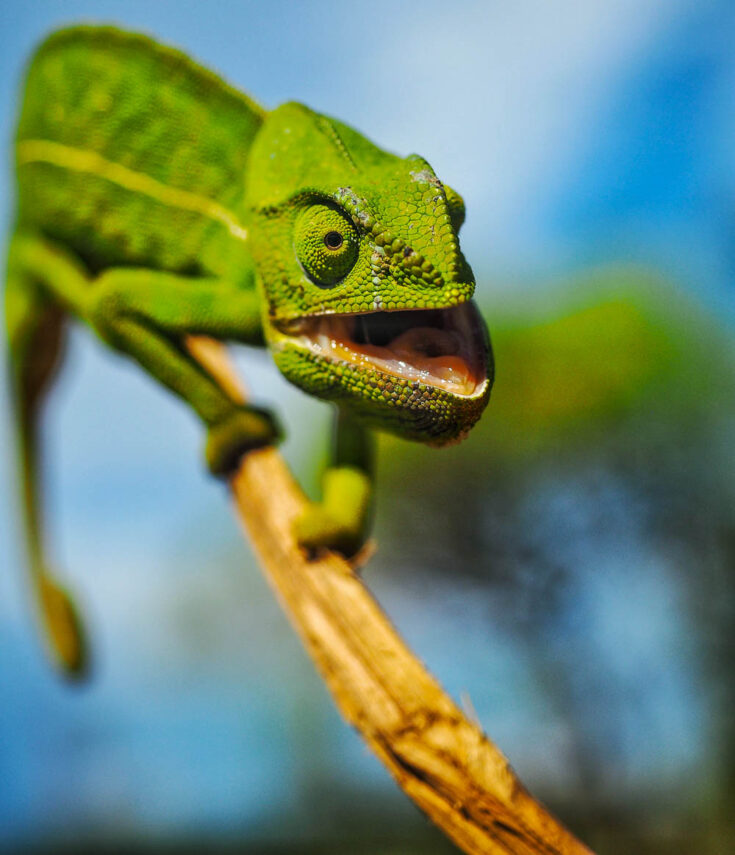
I stayed 16 days in Madagascar and traveling around the island took A LOT more time than I was expecting, so I wasn’t able to visit even half the places I wanted to before I left home. Even the famous Avenue of Baobabs is a national road in the country.
Don’t expect to be able to visit big parts of the country if you only have two weeks and are taking local transport.
If you want to cover big parts of the country in a small amount of time, the only way is to rent a 4WD car with a driver for 65 USD + fuel a day.
The usual way to get around Madagascar is by taxi-brousse, which are usually old Mercedes minibusses that can never be too crowded, stop every time someone wants to get on or off, and only depart when full. So there are no scheduled departures and arrival times can vary by up to 12 hours depending on when it left.
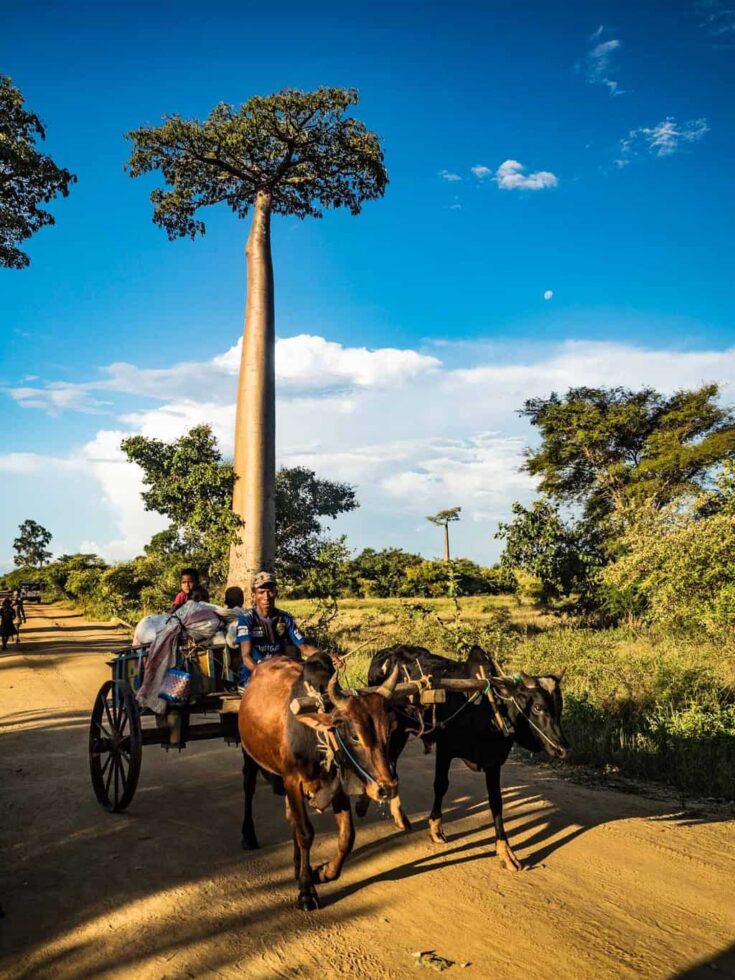
On a taxi-brousse, you’ll get chickens, ducks, and local people falling asleep on your shoulder.
Taxi-brousses are OK for shorter distances, but when you’re 180 cm+ tall like me, your knees and back will be done after hitting the seats in front of you for hours.
But things are improving with Cotisse Transport. This is a new local transport company that leaves on time, so if you’re 5 minutes late, they will have left already. They even offer wifi on board and only one person to each seat instead of 3 as on a normal taxi-brousse.
Cotisse Transport doesn’t offer online booking, but you can book your ticket in advance by going to their office.
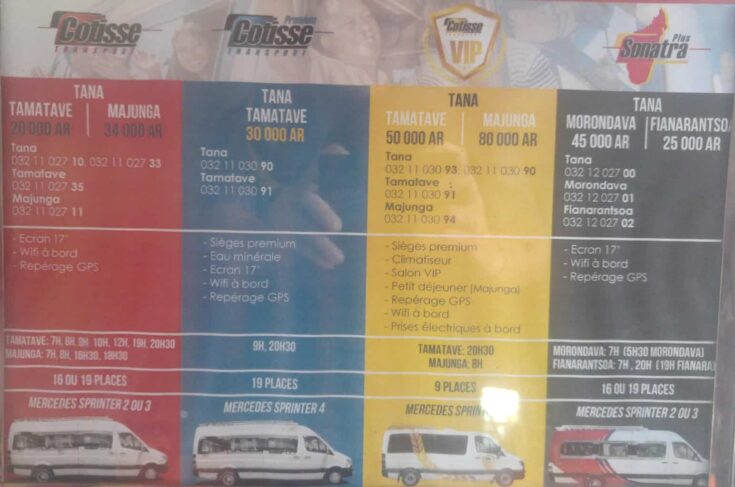
It’s also important to show up a MINIMUM of 30 minutes before departure to register that you are using your ticket and going on your trip and to load your luggage if you have it.
When traveling around Madagascar, you’ll have to pass through and most likely spend the night in Antananarivo each time you want to head to a different part of the country.
During my trip here, I transited the capital three times, and each time I had to spend the night there.
Madagascar, the perfect destination in Africa for the adventures traveler and travellers that want to get away from mass tourism and want to see wildlife and nature, here´s a complete guide to everything you need to know
Is Madagascar safe?
I personally didn’t have any problems in Madagascar, but a lot of travelers I met had been pickpocketed or had stuff stolen from their luggage when taking a taxi-brousse.
There are A LOT of beggars in Madagascan cities, and most of them are young children. Most of them will respect your “no,” but you do come across a few young “pricks” who go straight for your pockets.
You are required by law in Madagascar to carry your passport with you all the time.
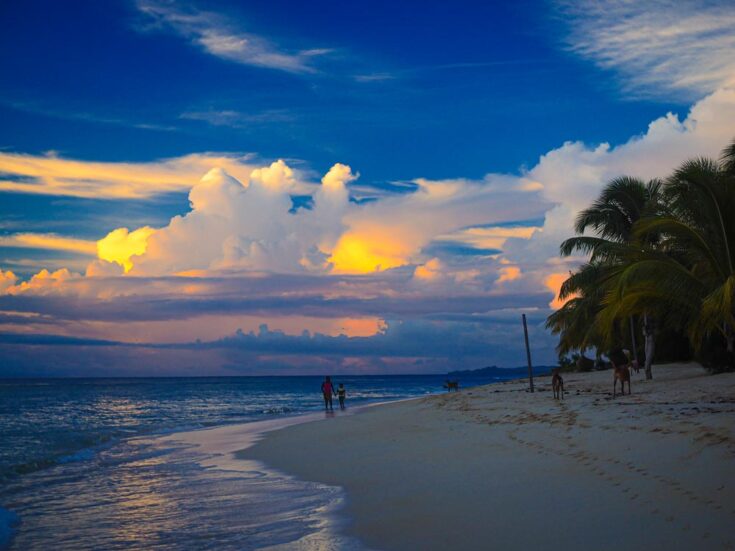
If you don’t have it on you and get stopped by the police/military, you are required to pay an unofficial “safety fine” of around 10 000. If walking around after dark, there is a higher chance of getting stopped.
This is especially true in Antananarivo and around Place de l’Indépendance, where I was stopped four times during my visit. As a single white male walking around, you do get some hassle from local women, especially if you’re going out drinking.
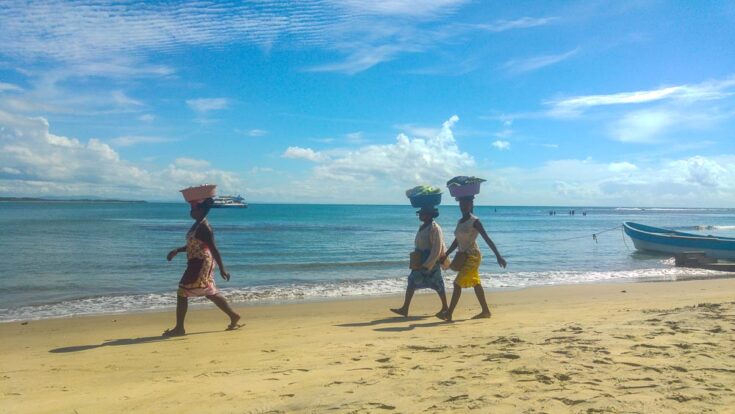
You will see a lot of older white men with young local girlfriends in Madagascar, similar to what you see in Thailand or the Philippines. On the other hand, solo western women shouldn’t face too much unwanted attention, but you shouldn’t walk around on your own after dark at all.
Language in Madagascar
The main language in Madagascar is Malagasy . It’s spoken by everyone. French is the second official language, but every French tourist I met was surprised how FEW locals actually spoke French outside the big cities. VERY few people speak English in Madagascar
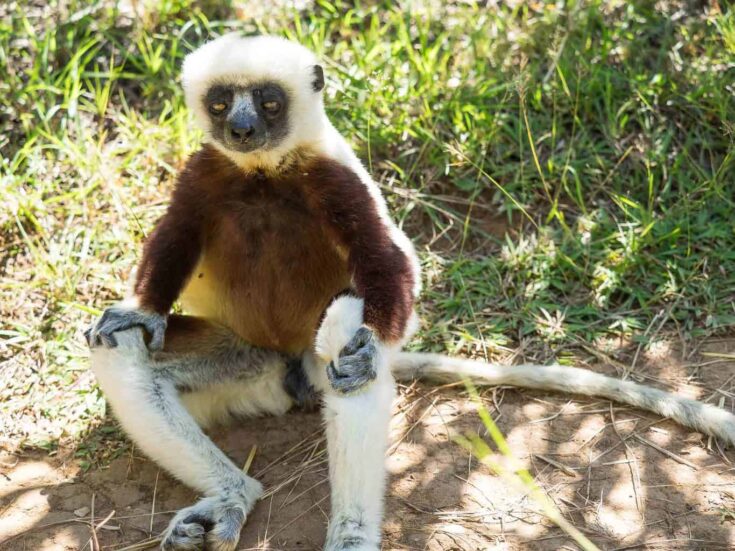
I don’t speak either Malagasy or French, but I still found traveling around Madagascar easy.
The locals were always accommodating and eager to help you out even when we couldn’t speak the same language.
Sunset over the famous Sunset over the Baobabs in western Madagascar.
Guidebook to Travel Madagascar
The newest edition of Lonely Planet Madagascar is pretty accurate and helpful when it comes to transport. But it seemed like EVERY hotel and restaurant (as always) had increased their price since the book came out.
For example, La Banane hostel on I’ll Sainte Marie is priced in the book at 5000 Ariary for a dormitory but the price in April 2017 is 18 000.
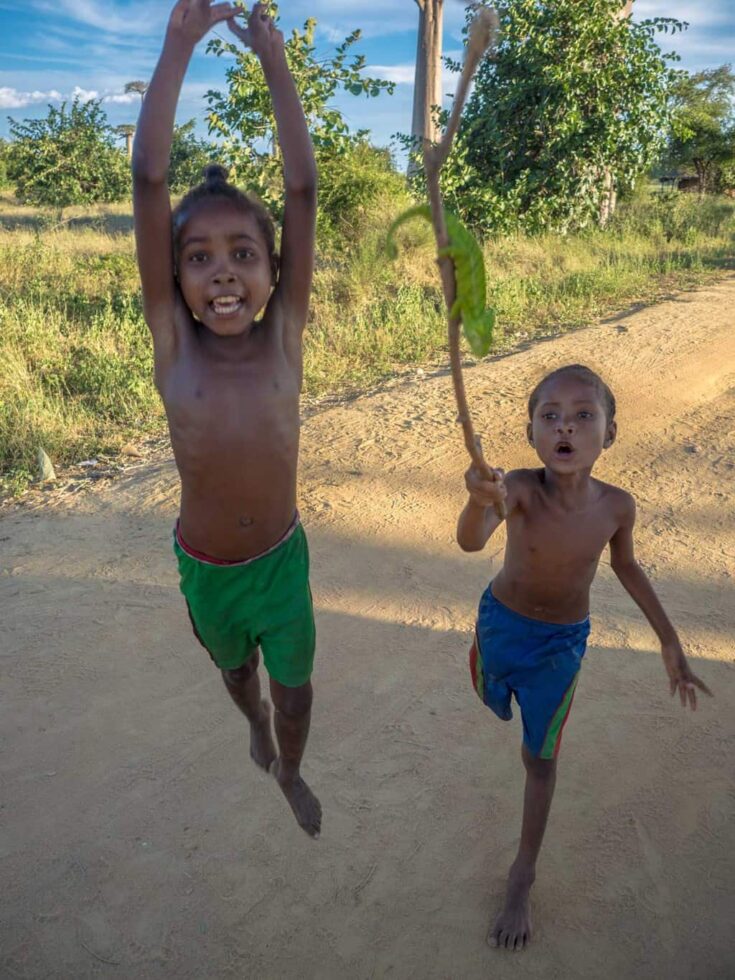
Hotel Eden in Tamatave is 16 000 in the book, but the price now is 28 000. All the restaurants in the book seem to have increased the price by about 5000 for each meal. A few of the hotels in the book have been shut down for years like Hotel Frederic in Tamatave, which is just a pile of ruins.
The boat service Melissa Express recommended in the book to get to Isle Sainte Marie from Tamatave doesn’t run anymore either. It was very evident that Madagascar tourism really changed the place.
Food in Madagascar
Malagasy cuisine is heavily meat-based, and every meal seems to come with rice.
The most popular dish in Madagascar is zebu meat (the local breed of cattle). Almost every restaurant, even small local ones, served zebu steak or a zebu stew. Chicken, duck, and seafood are also always available.
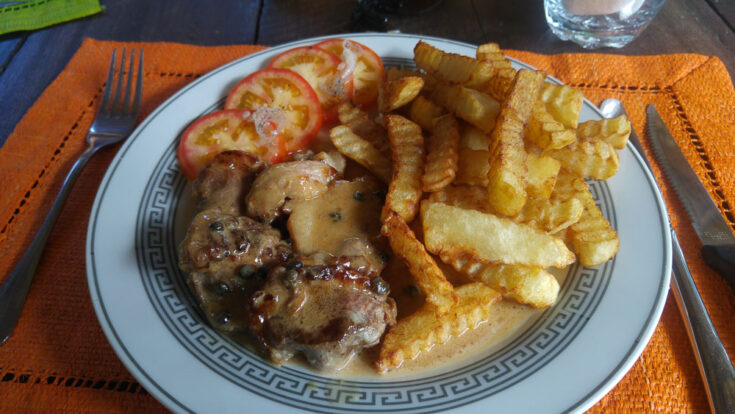
For vegetarians, fried rice with vegetables or noodles with vegetables are the most common dishes. But there is always a vegetable-based accompaniment to go with some rice and lots of eggs available, so being a vegetarian (or even vegan) in Madagascar isn’t a problem.
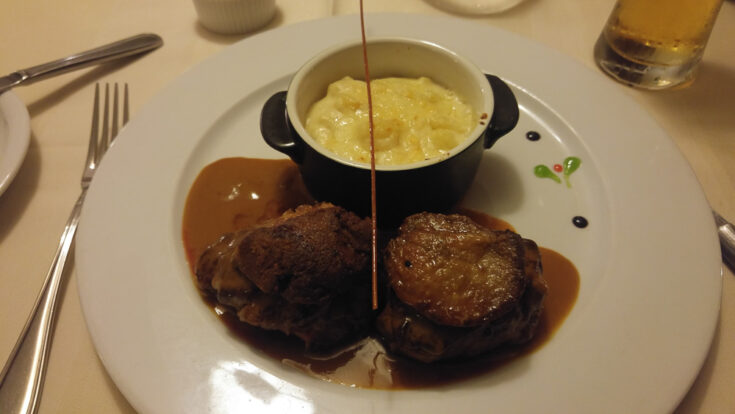
What a 35 000 Ariary Zebu Steak will look like in one of the restaurants in the country.
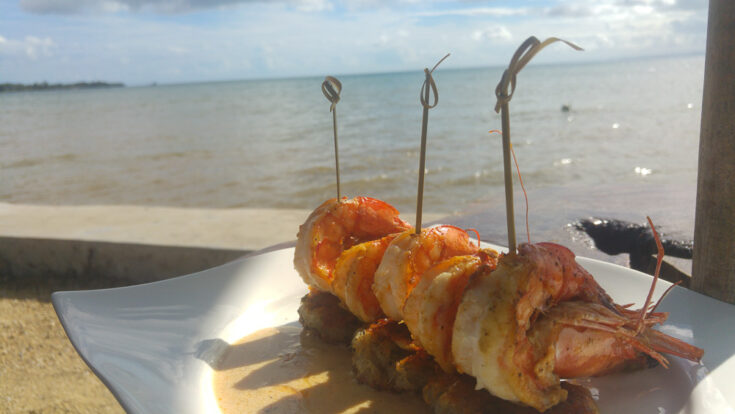
Beer And Alcohol in Madagascar
Only drink bottled water. Bottled drinking water is available everywhere together with coca-cola, Fanta ananas (it’s excellent), and alcohol too – especially the local flavored rum (Rhum arrange) or the local beer brands like Three Horses Beer (THB), Castel, Queens, and Skol.
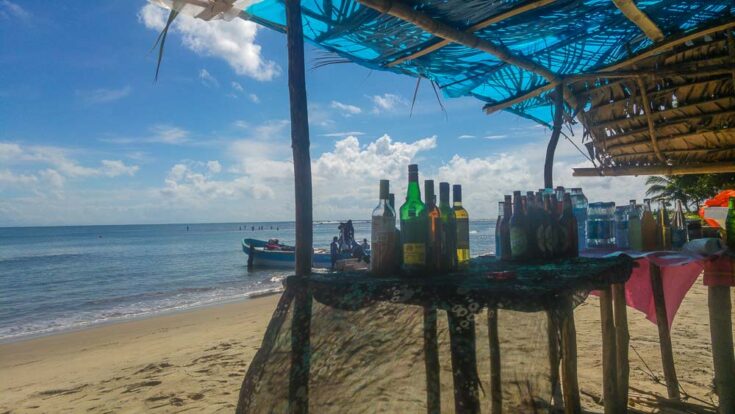
While the locals often drink rum because it is much cheaper than beer, the quality of beer in Madagascar is one of the best in Africa.
At a restaurant, a big bottle of beer is often the same price or even cheaper than a bottle of water.
Budget for a Trip to Madagascar
Madagascar can be done pretty cheaply if traveling on a budget, but you will have to be traveling very rough and taking local transport.
Hostels with dormitories are only really in the capital and very few other destinations.
So traveling with a friend will bring the cost down A LOT.
For EVERY national park, you are required to pay a daily entrance permit and to have a guide.
National park tickets are between 55 000 (17 USD) – 65 000 (20 USD) a DAY. Guides are normally around 15 000 (5 USD) a day.
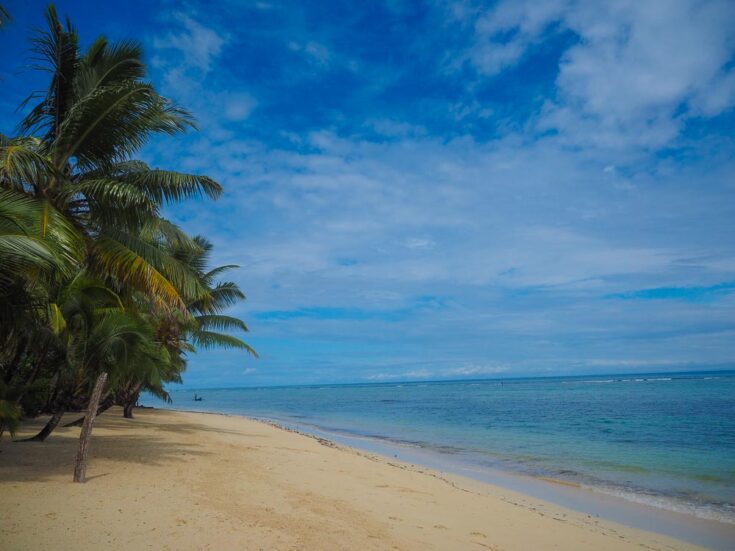
If you want to go to remote places and some national parks, hiring a 4WD car with a driver is often (always) the only option.
Check out the most popular hotels for people who want to share:
The standard price is 65 USD +fuel a day.
Cheap: Around 20 USD a day.
Transport: Local taxi-brousse – 15 000 (5 USD) between big cities.
Accommodation: back hotels with own bathroom, normally with fan: 25 000 (8USD) / 30 000 (10usd)
Food: Local street food and local restaurants. 2000 (0.6 USD) for eggs and toast with coffee for breakfast. Dinner at a local restaurant, 7000 (2 USD) for rice with zebu steak.
Midrange: 45 USD a day.
Transport: Cotisse Transport – 20 000 (6 USD) to 30 000 (10 USD)for Premium.
Accommodation: 90 000+ (30 USD) room with aircon, usually an excellent standard.
Food: 15 000 (5 USD) a meal, a great meal in a typical restaurant.
Flashpacker: 150 USD+ a day.
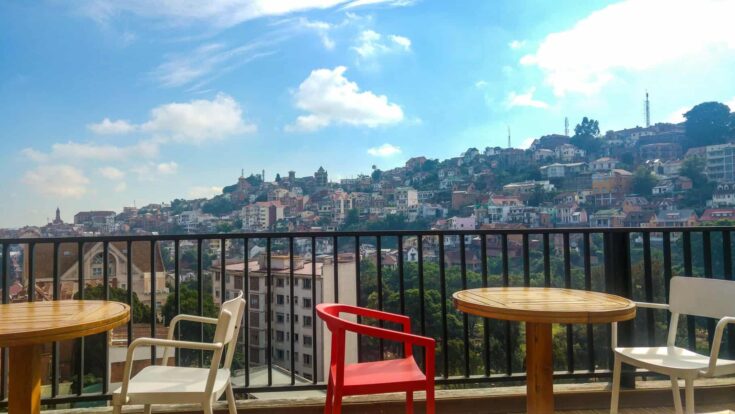
Transportation: Private 4WD with a driver, 65USD + fuel.
Accommodation: 70 USD a day. Great hotels to a high western standard often with breakfast buffets. My recommendation for a paradisiacal beach resort in Madagascar would be Ile aux Nattes .
Food: 35 000 (11 USD) A great meal in some of the best restaurants in the country.
What to Pack for Your Madagascar Visit
Except for the typical gear you would usually pack, you should also definitely pack:
Flashlight: There is almost no street light in Madagascar – even the big cities have no light after dark. Power blackouts are widespread outside the main cities.
Powerbank: It is common to only have electricity for a few hours a day in remote places in the country. Some days there is no electricity at all.
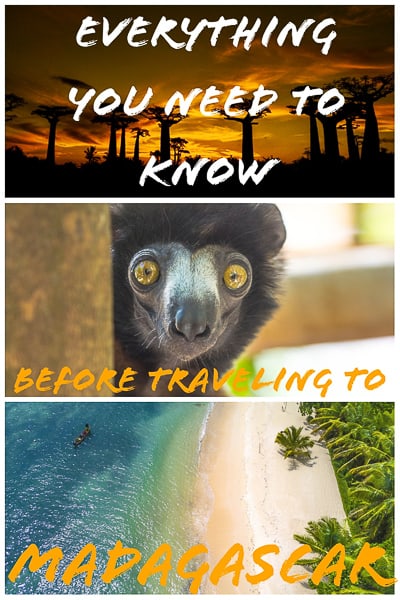
Bug spray: There are tons of mosquitos and other annoying biting bugs in Madagascar.
Waterproof: Something waterproof for your bag.
Your backpack or suitcase will be put on the roof while taking local transport and it rains a lot in Madagascar.
High-factor sunscreen: Difficult to find and expensive to buy when you do, so bring plenty if you burn easily.
If you plan on backpacking for an extended period of time, check out my backpacker’s packing list .
Electricity In Madagascar
The power plugs in Madagascar are the standard European standard 220V dual-pin power plugs. Everyone except mainland Europeans will have to bring a power adapter for your trip here.
Overall Experience Of Traveling to Madagascar
Overall Madagascar is a great country to travel around. But you will need more time to explore Madagascar than you would typically need for other countries.
I was able to see A LOT less in my 16 days on the island than I would be able to do in most other countries in the world at the same time.
You will also have to spend more money on Madagascar for a comfortable trip than you would have to do in other countries.
But if you have the time and are up for an adventure, Madagascar is a fantastic destination. I’d definitely like to come back in the future, but I will be sure to have more time next time.
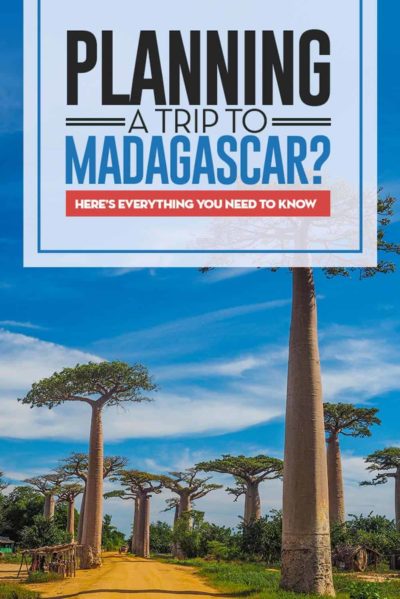
Tuesday 4th of October 2022
What a great article! We're currently dreaming of going to Madagascar again - we've been there before and we love, love love it! Here's to a year with loads of travel plans and new experiences!
Monday 22nd of June 2020
I decided to go to Madagascar next year. Looking for information I got your very informative page. Thanks so much. Do you know of any place I can get info about traveling there after Covid19?
Friday 29th of May 2020
Dear Christian, Thank you for this informative Post. I am a late 20s Youth with Madagascar on my Travel Bucket when the Pandemic finally gives us chance to live again.
In my plan I will be with my Sisters 17 and 22 and my 52 Year Old Mother. We intend to Visit for 16 Days. I intend to have a very good family time with them and also enjoy a little of the Night Life in Madagascar for a fun filled trip. I need your advice, 1. Which part is best ideal for Good fun. We are coming from Uganda.Should we go North? South? East or West? Is it possible to tour a few meaningful places in all Coasts? 2.Do you recommend an Air B and B or can we rent an Apartment? Are these options safe, can we party and make a little merry at night as a family or? Advise us on what is most Ideal.Or should we go to a Hotel instead? Can you recommend? 3.Do you have any Contact person that could be of help to me as I plan my travel? 4. In case one of us gets sick can UAP insurance work for us? 5. Would you recommend good places to visit that will help us make memories as a family? I am grateful, Doreen,Ug
Saturday 16th of May 2020
Thank you so much for the fital information on how to take a trip to madacaascar .
Manjunath K P
Wednesday 12th of February 2020
Hi Christian Your article was very informative. I am shortly travelling on an invite from the tourism department as I am a travel agent based in Bangalore, India
Will look forward to read more of your travel blogs. Thanks & regards
Madagascar Travel Guide

Courtesy of Pierre-Yves Babelon | Getty Images

Why Go To Madagascar
Dreaming of a tropical getaway spent lounging on idyllic islands, trekking through verdant rainforests, hiking around jaw-dropping rock formations and spotting unique wildlife? Then set your sights on Madagascar. Located in the Indian Ocean, about 743 miles east of Mozambique, this African paradise is the fourth largest island in the world. Approximately 19,000 types of plants can be found in the country's 47 national parks and reserves, but its one-of-a-kind animals are the main draw for nature lovers. All of the world's 100-plus lemur species call this island nation home, as do more than 340 kinds of chameleons and a variety of birds.
Though you'll likely spend some time in populous areas like Antananarivo (the country's capital) and Nosy Be (a small island off the mainland's northwest coast), Madagascar is filled with regions ripe for exploration. Travelers can head offshore to snorkel around Nosy Sakatia or swim at The Three Bays , and photography enthusiasts can snap breathtaking pictures of the sun rising or setting over Morondava's Avenue of the Baobabs . Fitness buffs, meanwhile, have access to hiking trails at Anja Community Reserve , plus Tsingy de Bemaraha Strict Nature Reserve 's towering limestone pinnacles, which are ideal for climbing. If you'd rather have a more quintessential Malagasy vacation, travel deep into national parks like Isalo and Mantadia to watch lemurs, boa constrictors and more lingering in the trees.
Find Flight and Hotel Deals
Navigate forward to interact with the calendar and select a date. Press the question mark key to get the keyboard shortcuts for changing dates.
Navigate backward to interact with the calendar and select a date. Press the question mark key to get the keyboard shortcuts for changing dates.
- # 6 in Best Islands in the World for 2024
- # 12 in Best Places to Visit in Africa in 2023
Best of Madagascar
Best hotels in madagascar.
- in Carlton Hotel

Best Things to Do in Madagascar
- # 1 in Tsingy de Bemaraha Strict Nature Reserve
- # 2 in Avenue of the Baobabs
- # 3 in Mantadia National Park (Parc National Mantadia)
Popular Tours

Two days wildlife tour to Andasibe NP
(6 reviews)
from $ 340.05

Private Custom Walking Tour with a Local Guide in Antananarivo
(4 reviews)
from $ 35.10

Full-Day Exclusive Private Tour to Nosy Tanikely Marine Reserve
from $ 208.42
Madagascar Travel Tips
Best months to visit.
The best time to visit Madagascar is from April to October. This dry season brings fewer rain showers, meaning optimal conditions for observing animals, hiking and participating in water sports activities. Although accommodation rates are higher at this time, properties will be easier to access due to the country's roads being clear. Temperatures will also be more comfortable than they are during the wet season.
Weather in Madagascar
Data sourced from the National Climatic Data Center
What You Need to Know
- Beaches are not guarded Lifeguards and security personnel are rarely stationed at beaches. If you plan on visiting a beach, do not leave your belongings unattended at any time, and keep a close eye on children.
- Bottled water is a must Tap water is not safe to drink at hotels, restaurants and all other locales in Madagascar, meaning you'll need to drink bottled water at all times. You'll also want to avoid ice in drinks unless it's been made from filtered water.
- Malaria is prevalent Local mosquitoes may carry malaria, so bring long-sleeved clothing, insect repellent with DEET (a chemical that limits mosquitoes' ability to smell you) and anti-malarial medication, which can be obtained from your doctor.
- Cash reigns supreme Few restaurants, shops and hotels accept credit cards in Madagascar, so bring Malagasy ariary with you or withdraw some from a local ATM to pay for goods and services.
How to Save Money in Madagascar
- Use taxis-brousse Though this mode of transportation is notoriously slow, taxis-brousse are one of the country's most affordable ways to travel long distances.
- Be mindful of trail fees Some paths, such as those found at Isalo National Park and Mantadia National Park , can only be accessed after paying park admissions, plus a trail fee. To save money, choose to explore paths where there is no additional fee, such as Lokobe National Park 's Circuit Kindro and Circuit Ramy trails.
- Pitch a tent High-end accommodations in Madagascar can cost more than $500 per night, so consider camping at a protected area like Anja Community Reserve or Tsingy de Bemaraha Strict Nature Reserve . Campsite spaces are generally $2 to $12 per night to reserve.
Culture & Customs
Home to 18 main ethnic groups, Madagascar is a diverse island nation. Malagasy and French are the country's official languages, the latter of which was introduced when the French colonized the region from 1896 to 1960. You may also find a few Malagasy people who speak English, but it is best to use Malagasy or French when possible. Of the two primary languages, Malagasy is more commonly used. Some key Malagasy and French terms and phrases to use while traveling in Madagascar include "manao ahoana e" and "bonjour" (hello), "Manao ahoana ny fahasalamanao?" and "Comment allez-vous?" (How are you?), "Tsy azoko" and "Je ne comprend pas" (I don't understand), "Mahay miteny angisy ve ianao?" and "Parlez-vous anglais?" (Do you speak English?), and "veloma" and "au revoir" (goodbye).
Although Madagascar's capital city of Antananarivo has a population of more than 1.3 million people, the majority of Malagasy people live in rural areas, where traditional customs and practices are the norm. Men and women who live in the countryside, for example, mainly wear locally made garments like dresses with gathered skirts and oversized shirts with long pants, while wealthier individuals and those living in cities often wear a mix of Western attire and traditional items like lambas (shawls) and raffia hats. Many Malagasy people will also celebrate family-focused ceremonies, such as Famadihana (a sacred ritual that involves removing the bones of loved ones from an ancestral crypt to rewrap with fresh garments).
Music is an integral part of Malagasy culture. Western dances, lyrics and instruments are blended with Malagasy rhythms to create the bulk of the country's contemporary music. Western musical styles like rock, jazz and hip-hop can also be heard here, but one of Madagascar's most popular genres is salegy , an energetic style that features electric guitars, accordions, drums and call-and-response vocals. Salegy and other genres are played at various bars and clubs throughout Antananarivo, including the Hotel Glacier , Pandora Station and Espace Dera, but prostitution – which is illegal in Madagascar – occasionally takes place in entertainment venues, so exercise caution when enjoying Malagasy nightlife.
The official currency in Madagascar is the Malagasy ariary (MGA). One Malagasy ariary equals approximately $0.0003, or less than one American penny, but you'll want to check the latest exchange rate before visiting. Euros are easiest to convert to Malagasy ariary in-country, but some currency exchange vendors will take dollars. Credit cards are not accepted at most Malagasy locales, so plan on using cash; if you need additional currency, ATMs are available in most major towns.
Visitors are expected to tip for tourism-related services, but tips are not required for taxi services. It is customary to tip 5 to 10 percent of your food bill at restaurants that do not list service charges on receipts, while hotel employees (think: bellhops and housekeepers) should receive about 2,000 Malagasy ariary (less than $1) each per stay. Tour guides generally expect 10,000 to 20,000 Malagasy ariary (or $3 to $6) per day, and you should allot about 5,000 to 10,000 Malagasy ariary (or $1.50 to $3) per day for drivers.
What to Eat
The predominant cuisines in Madagascar are Malagasy and French, with French fare generally being more expensive. Antananarivo and Nosy Be are considered the best cities for fine dining and house many of the country's most popular restaurants. For a quintessential French meal, travelers suggest La Rhum Riz - Chez Nono on Nosy Be and Le Restaurant La Varangue , KUDéTA and Restaurant Sakamanga in Antananarivo. Nosy Be's Chez Loulou and Chez Mama are also highly regarded for their authentic Malagasy dishes, such as ravitoto (a pork and cassava leaf entree that's commonly served with white rice) and romazava (a stew made with beef, chicken or pork and leafy greens).
If you're willing to trek outside Madagascar's culinary meccas, try grabbing a bite to eat at Le Restaurant Mad-Zébu de Belo , which is in the small town of Belo Tsiribihina. Though service is sometimes slow, visitors say the European-inspired dishes are as tasty as those served in many Michelin-starred restaurants. L'Idylle Beach , on Nosy Boraha (also known as Île Sainte-Marie), is also recommended for French cuisine and panoramic ocean views.
For more affordable meals, consider savoring some of the country's street fare. By Antsirabe's daily market, you'll find hawkers selling fried finger foods like nem (eggrolls) and sambosa (similar to samosas, or triangular pastries stuffed with potatoes and ground beef). Antananarivo's Analakely market, meanwhile, boasts an array of fresh fruit (think: lychees, bananas and papayas), plus fresh fish and grilled meat dishes.
Pickpocketing and stealing luggage from Ivato International Airport's baggage claim occurs regularly in Antananarivo. Additionally, violent assaults against travelers occasionally takes place in areas like Nosy Be and Tamatave, and remote highways are frequently targeted for robberies. What's more, street altercations and traffic accidents designed to draw a scene and incite violence against a foreigner is becoming increasingly more common. As a result, it is best to be aware of your belongings and surroundings at all times and to avoid unpopulated roads and public disputes.
Since a democratic government was elected in 2014, violent political events have been rare. However, deadly incidents do occur from time to time, so it's best to avoid or stay alert when visiting government buildings, national sports arenas and historic monuments in Antananarivo.
Malaria can be contracted from Malagasy mosquitoes carrying the disease. To protect yourself while staying in the country, wear long-sleeved clothing and insect repellent with DEET (a chemical that makes it difficult for mosquitoes to smell you). You'll also want to speak with your doctor before your trip to obtain an anti-malarial medication and go over possible drug side effects.
The U.S. State Department strongly advises all Americans who plan on vacationing in Madagascar to sign up for the free Smart Traveler Enrollment Program , which notifies the nearest embassy or consulate of your travels. Additional security concerns and safety tips for Madagascar can be found on the U.S. State Department's website .
Getting Around Madagascar
The best way to get around Madagascar is to hire a car with a driver or join an organized tour. Car rentals commonly come with a driver as part of their rates and give you the most flexibility with your itinerary. Tours, however, generally cover the cost of accommodations and some or all meals, but you'll have to stick to a set schedule and travel with other visitors. Limited public transportation options are also available, but these affordable services are slow and often uncomfortable and unsafe. For longer trips between select towns, traveling by plane can be arranged. Getting to the island will require flying into Ivato International Airport (TNR) in Antananarivo or arriving by cruise ship to various Malagasy locales, including Antsiranana, Nosy Be and Tamatave, via cruise operators like Costa Cruises and MSC Cruises .
Entry & Exit Requirements
To enter Madagascar, you will need a U.S. passport that is valid for six months past your arrival date and has three blank visa pages. A tourist visa is required for all stays less than 90 days, which can be purchased at the Embassy of Madagascar in Washington, D.C. , or any port of entry in Madagascar. Visas cost $28.70 for stays lasting up to 30 days; $35.88 for stays lasting between 30 and 60 days; and $50.23 for stays lasting 61 to 90 days. For visas purchased upon arrival, only dollars, euros and Malagasy ariary are accepted. A valid World Health Organization-approved International Certificate of Vaccination (also known as a "yellow card") is also required if you have visited or had a stopover in a country where yellow fever is present up to six months before your arrival. Additional information about entry and exit requirements can be found on the Embassy of Madagascar's website and the U.S. State Department's website .
Madagascar is the only country in the world where wild lemurs reside. You'll find 97 species of this one-of-a-kind primate living throughout the island.
Explore More of Madagascar

Things To Do
Best hotels.

You might also like

# 5 in Best Honeymoon Destinations for 2024

Galapagos Islands
# 3 in Best Places to Visit in Central and South America in 2023

Kruger National Park
# 11 in Best Places to Visit in Africa in 2023
If you make a purchase from our site, we may earn a commission. This does not affect the quality or independence of our editorial content.
Recommended
The 18 Best Napa Valley Wineries to Visit in 2024
Lyn Mettler|Sharael Kolberg April 23, 2024

The 25 Best Beaches on the East Coast for 2024
Timothy J. Forster|Sharael Kolberg April 19, 2024

The 50 Best Hotels in the USA 2024
Christina Maggitas February 6, 2024

The 32 Most Famous Landmarks in the World
Gwen Pratesi|Timothy J. Forster February 1, 2024

9 Top All-Inclusive Resorts in Florida for 2024
Gwen Pratesi|Amanda Norcross January 5, 2024

24 Top All-Inclusive Resorts in the U.S. for 2024
Erin Evans January 4, 2024

26 Top Adults-Only All-Inclusive Resorts for 2024
Zach Watson December 28, 2023

Solo Vacations: The 36 Best Places to Travel Alone in 2024
Lyn Mettler|Erin Vasta December 22, 2023

26 Cheap Beach Vacations for Travelers on a Budget
Kyle McCarthy|Sharael Kolberg December 4, 2023

The 50 Most Beautiful White Sand Beaches in the World
Holly Johnson December 1, 2023


Complete Guide to Madagascar: All you Need to Know!
- Facebook 12
- Pinterest 650
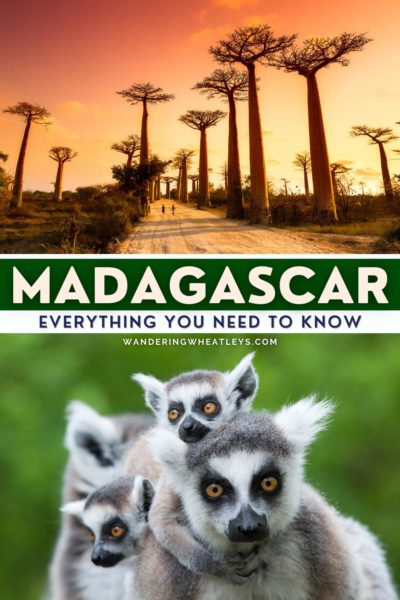
Madagascar feels like a far far away land. That is because it is! Located off the eastern coast of Africa across from Mozambique, Madagascar is the world’s fourth-largest island. And with nearly 90% of wildlife endemic to the island, Madagascar should be high on your bucket list.
Don’t worry, we’ll get you there with this complete guide to Madagascar!
From rainforests to beaches, wildlife, and astonishing rock formations, there is a diverse range of sights to explore. But sadly, Madagascar is one of the world’s poorest nations, resulting in a poverty-stricken country that is also very cheap. Its infrastructure is some of the worst in the world, with a 120-mile journey sometimes taking an entire day to complete.
Because of the poor infrastructure and low costs, it is best to visit Madagascar for a long period, making it a wonderful backpacking destination. There are only a couple of well-developed areas, in particular Nosy Be, which is a common holiday destination.
Madagascar was a French colony until 1960 when it gained its full independence. As a result, the most common visitors to Madagascar are French nationals. There is a lot of French influence still today in Madagascar, especially related to its language.
Many French ex-pats have opened hotels and restaurants so the French food in Madagascar is delicious! Our favorite towns – Antsirabe and Diego Suarez – have an excellent culture, cheap accommodation, and excellent food.
Read on to learn all about the complete guide to Madagascar!
Content and photographs provided by Yana Kogan and Timon .
Disclaimer: This post may contain affiliate links. If you make a purchase or booking through one of our links we may earn a small commission (don’t worry, it’s at no extra cost to you).
Best Time to Visit Madagascar
The best time to visit Madagascar is during the dry season between April and November. The wet season is best avoided. Rain is very heavy and the island experiences cyclones between December and March.
Like many countries, Madagascar has in place COVID travel restrictions . You have the option to present a negative PCR test performed 72 hours before boarding, or you can test upon arrival. But check with the airline first, just in case. If you decide to test upon arrival, you’ll need to pay for the test at your own expense and self-isolate until the results are available.
How to Get to Madagascar
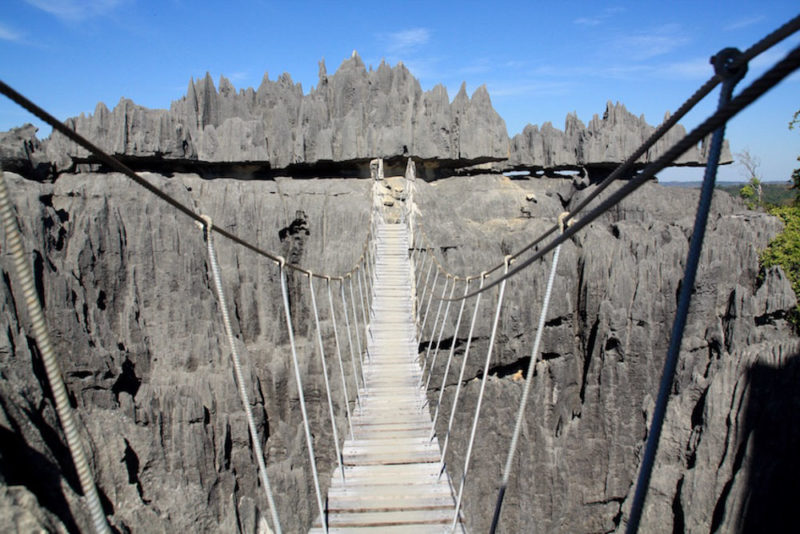
Madagascar is not easy to get to and flights are expensive. There are not many places that fly directly to Madagascar, including Paris, Addis Ababa, Nairobi, and Johannesburg. Flights are also available from Mauritius, Seychelles, Reunion, Comoros, and Mayotte, but flying through these places is typically expensive.
We were able to score a multi-destination flight with Air Kenya that originated in Nairobi with stops in Mauritius, Madagascar, and Seychelles for only $350 USD. If you are exploring the region for a long time, make sure to check different options as there are often deals on multi-destination flights.
Internal flights in Madagascar are a monopoly with Air Madagascar. They are known for lengthy delays (or cancellations) and flights usually cost $300 USD one-way.
Visa for Madagascar
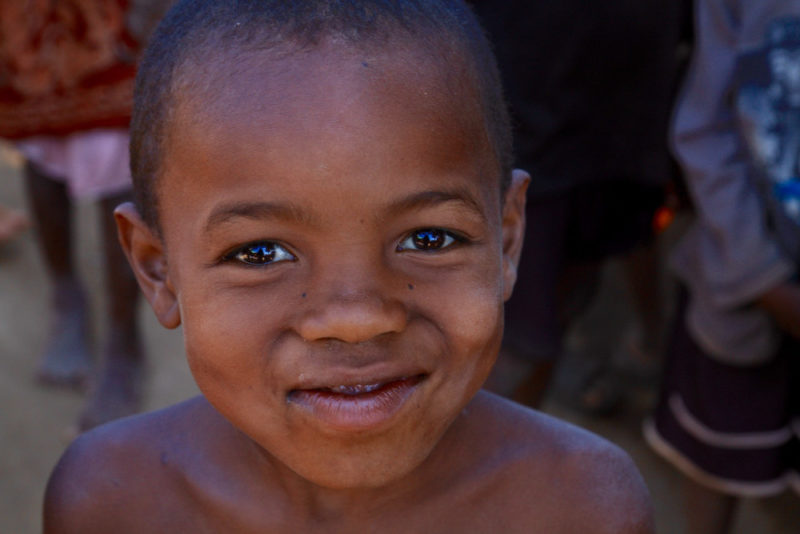
An electronic visa (eVisa) will be required for tourists. The eVisa application is available online and valid for up to 90 days. Visitors will need to complete the online registration to receive a landing authorization to present on arrival at the eVisa ticket counters. The eVisa rates are:
- 30 days: $37 USD or 35 EUR
- 60 days: $45 USD or 40 EUR
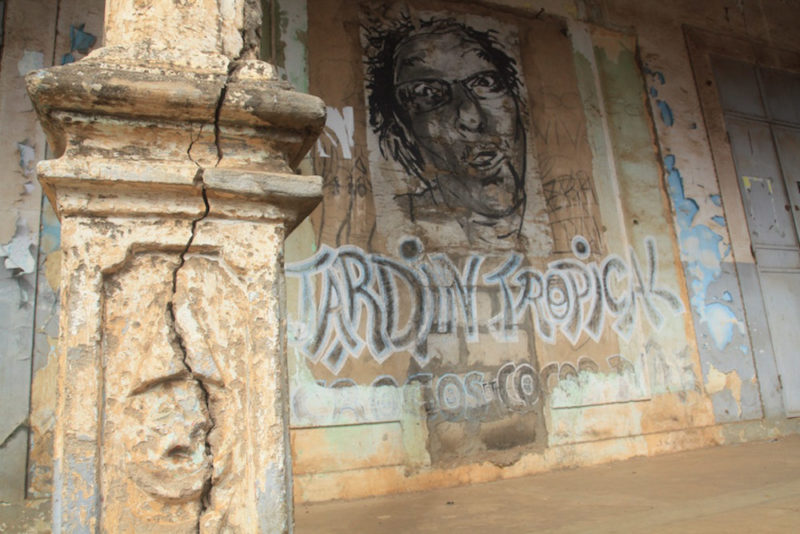
Malagasy is the national language of Madagascar and there are many regional dialects. It was a French colony up until its independence in 1960, so French is the official second language. But in rural locations, many do not speak French.
English is rarely spoken in rural areas. From a language standpoint, Madagascar was one of the most difficult places we have ever traveled to. We would recommend learning some basic words in French as well as common numbers.
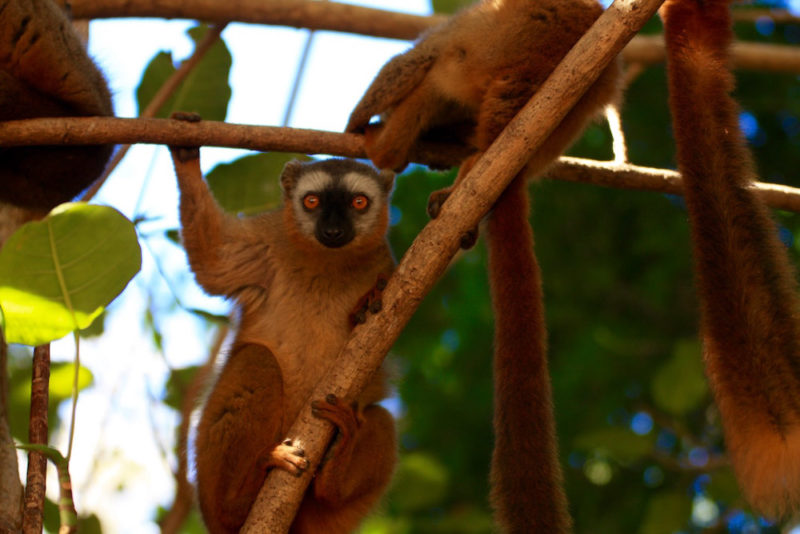
Madagascar uses the Ariary (Ar) which was introduced in 2005 as the national currency. It is the same bill as their earlier currency, the Malagasy Franc. Many locals, especially in the countryside, still use the Franc when quoting prices. The conversion from Franc to Ariary is 5:1. Typical Costs in Madagascar are as follows:
- Street food ranges from 500 – 2,500 Ariary for meals
- Beer typically cost 3,000 Ariary
- Budget hotels range from 20,000 – 35,000 Ariary.
As of March 2022, the Ariary is worth:
- $1 = 4,047 Ariary
- €1 = 4,474 Ariary
Best Sim Cards in Madagascar
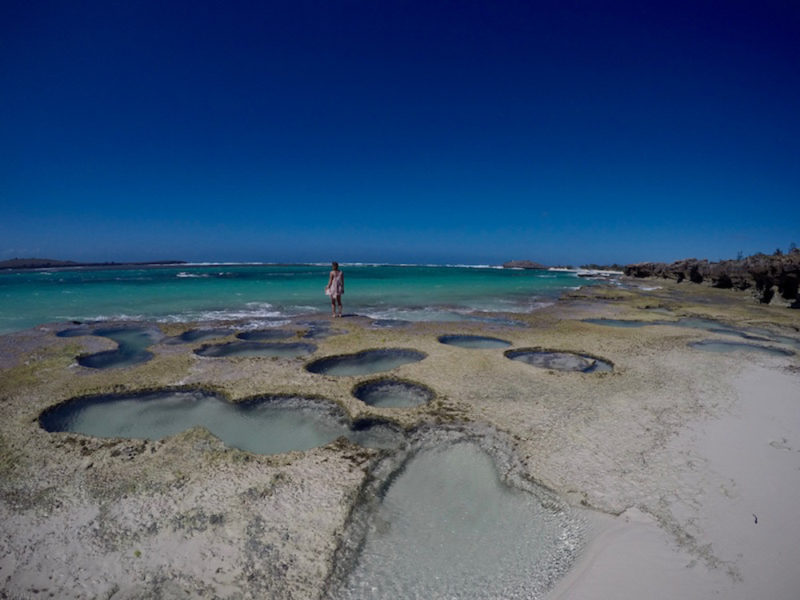
Telma is the largest, most reliable, and cheapest cell phone provider. However, Orange was our preferred network to use for data. Sim cards cost 3,000 Ariary, and credit is available throughout the country at street vendors and shops. Credit is available in 1,000 Ariary intervals, which is good for about 50 MB of data.
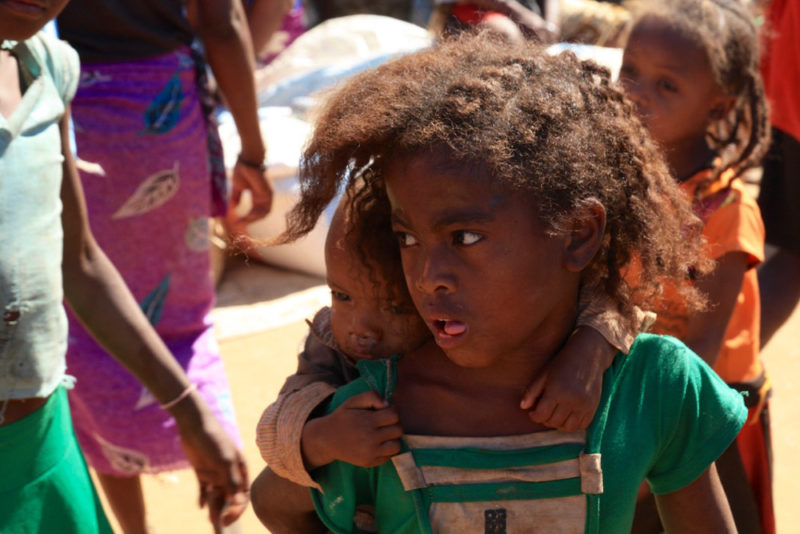
Hotels in Madagascar are very cheap and possibly some of the best for the budget prices. Good rooms cost between 20,000 and 35,000 Ariary. Warm showers are a rarity and the “Malagasy shower”, a simple bucket shower, was quite common. Western toilets were not always found, and if they were, they rarely were inclusive of the much sought-after toilet seat.
Where to Stay in Madagascar on a Budget
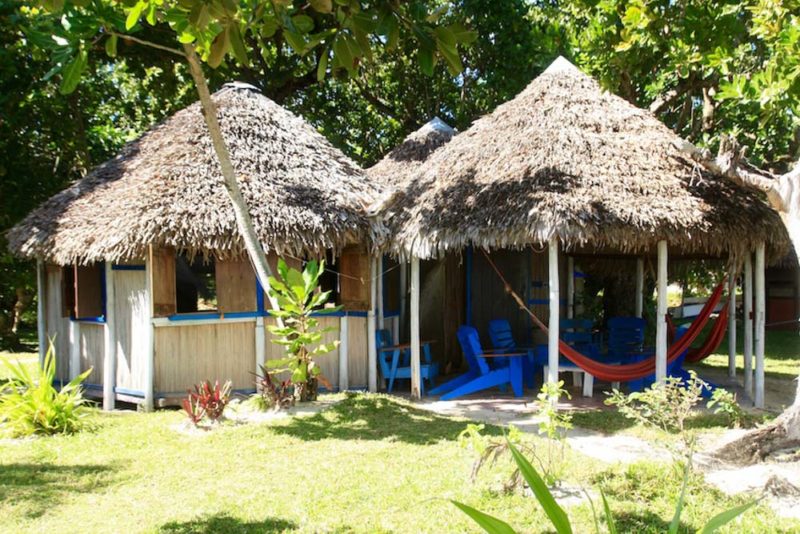
- Fianarantsoa – Residence Matsiatra is around $20/night for a private room
- Manakara – Chez Zizou costs $20 for very basic bungalows on the beach
Food in Madagascar
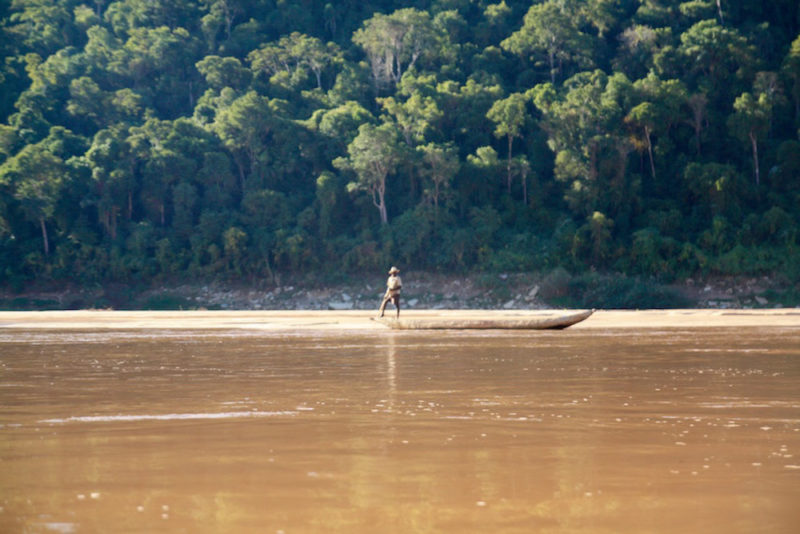
Madagascar has many ex-pats, so there are excellent restaurants on the island, and the Italian and French cuisine is particularly amazing.
Zebu (beef) is the national dish and is incorporated in all cuisines. The local cuisine is served at “hotelys” and street vendors. Hotelys are small local restaurants, common in most towns. Dishes are typically an enormous plate of rice and a small side of meat, either zebu, pork, or chicken. Occasionally, mine sao (fried noodles) or beans are available.
In the morning, several street vendors sell coffee and fried dough (which is delicious). Throughout the day, it is common to find vendors with fried snacks, such as samosas, fried bananas, or fried vegetables.
Typical costs for food are:
- Fried snacks: 100 to 200 Ar
- Coffee: 200 to 300 Ar
- Small meals: 1,000 Ar
- Hotely meals: 2,500 to 4,000 Ar
Food-Related Illness
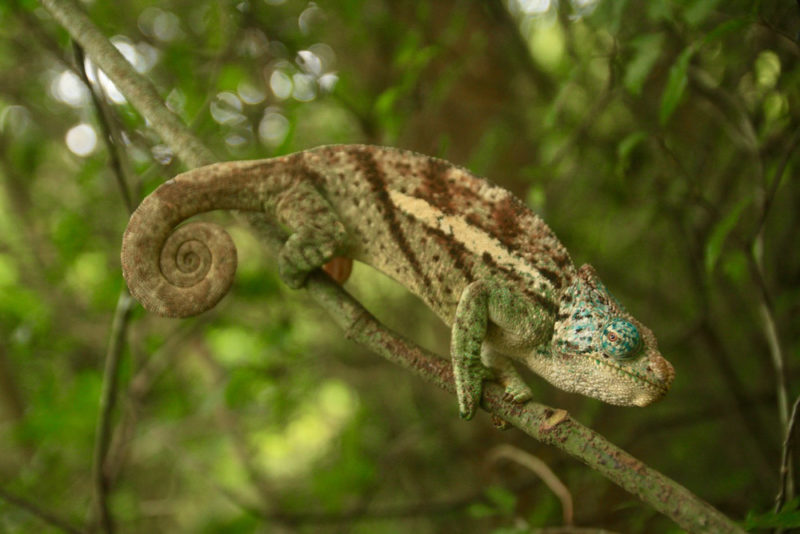
Madagascar has very poor health standards, bad sanitation, and a lack of refrigeration. Food is often prepared in large quantities, days in advance, and sold until it is finished. The inevitable result is that you will likely have an upset stomach with a bout or two in the toilet. Don’t worry, everyone here is in the same boat, so you are not alone.
Taking a Taxi Brousse
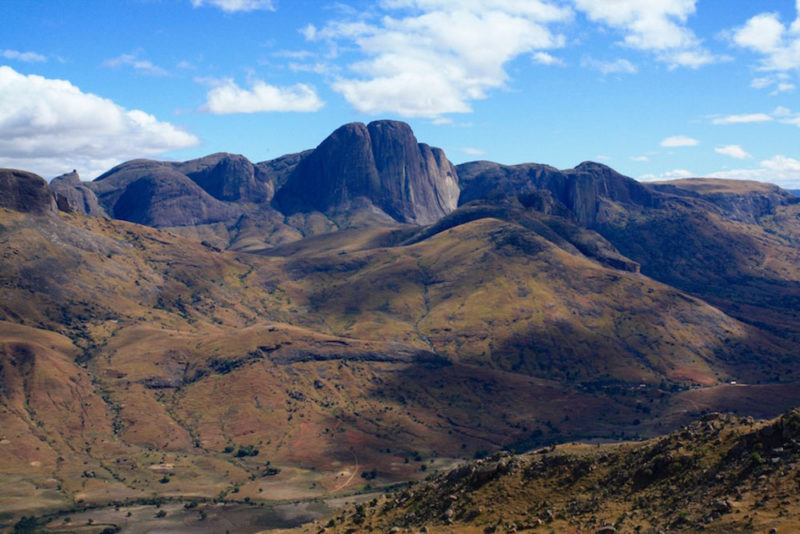
Taxi brousses are the main method of public transportation in Madagascar. A taxi brousse is a mini-bus that can range from somewhat new to somehow surviving. You never know what to expect; music blasting, chickens on the floor, dead fish on the roof, luggage packed in everywhere, and babies sleeping half on your lap. It is surely an adventure, and Madagascar cannot be visited without at least one taxi brousse ride!
Be ready to get bombarded and harassed at every taxi brousse station. Always look around at several options, inspect the bus, and go with the one that is almost at capacity as they do not leave until they are full.
Regional vs. National Taxi Brousse
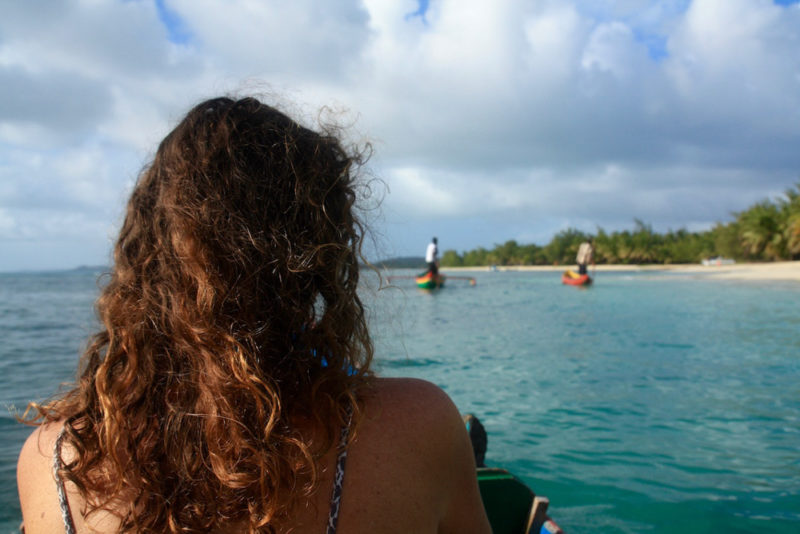
This is critical. Regional buses are of lower quality and they pack in as many people as possible. If they have room, even when you swear it is not possible, they will stop and pick up more people. At one such stop, we saw two grown men who did not know each other, sit on one another’s lap. National companies do not pack people in and each person has an assigned seat.
Factors When Picking a Taxi Brousse
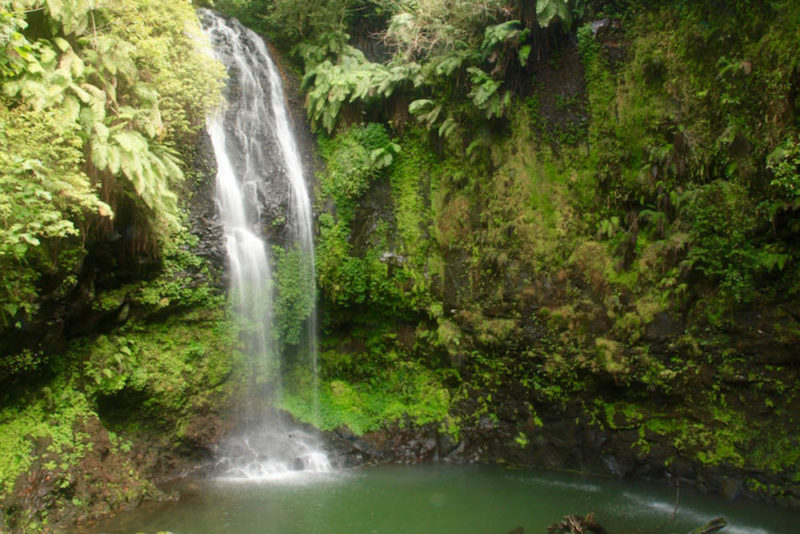
- Look at the tires. Do they look like they can make it to your destination? Make sure they have tread.
- Can they put your bag inside in the trunk space verses on the roof?
- Can you get a seat next to a window that opens?
- Are you sitting right next to the only working speaker?
- Is the taxi brousse almost full?
These may sound like minor factors, but then you have one of “those” taxi brousse rides. “Those” rides take eight hours when it should take three. They put dead fish on the roof on top of your bags. It is 90 degrees and humid and no one likes to open their windows, because its “winter.” Music is blasting out of the only speaker right above your seat.
These are not made up, these happened to us and it can happen to you too. Picking a taxi brousse is part art, part science. It’s best to just mentally prepare for a long and stressful day and cross your fingers that you’ll actually get to your destination. Aside from all those things, it’s absolutely great, I swear.
Taxi Brousse Pricing
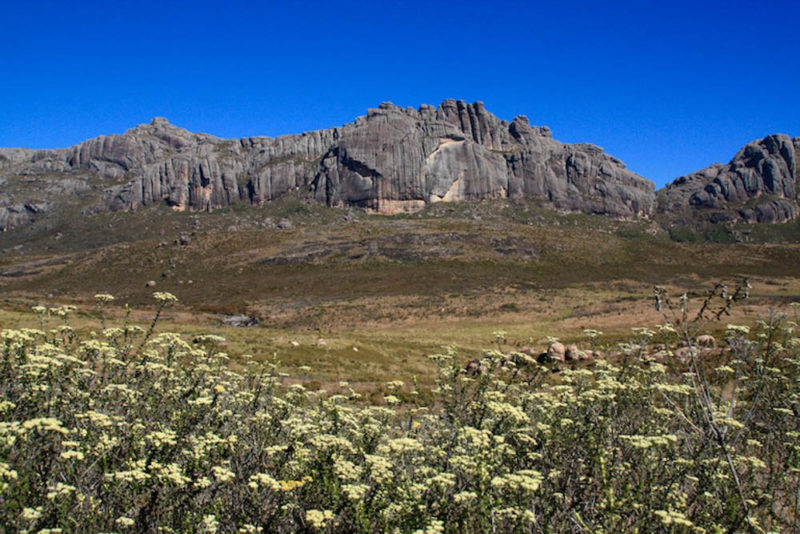
- Tana to Antsirabe: 12K
- Morondova to Antsirabe: 30K
- Antsirabe to Fianarantsoa: 15K
- Tsaronuru to Ambalavao: 3K
- Ambalavao to Ranahiro: 20K
- Ranahiro to Toliara: 23K (no taxi browse station in Ranahiro, book the day before with a hotel or one of the touts in town)
- Toliara to Anakao Ferry: 50K each way
- Toliara to Tana: 52K by Taxi Brousse 120K by private car
- Tana to Andasibe: 15K
- Andasibe to Tamatave: 14K
- Tamatave to Ile Saint Marie (bus and ferry transfer): 70K
- Tamatave to Tana: 20K
- Tana to Diego Suarez: 70K
Madagascar Itinerary Recommendations
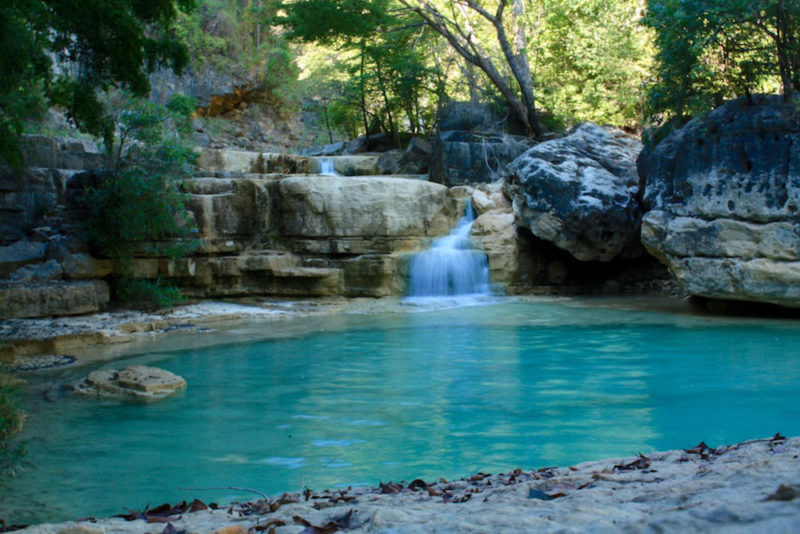
The biggest variable when visiting Madagascar is the travel time between destinations. The taxi brousse is pretty reliable; however, the drive will incur long hours. For those with a limited holiday, it is best to hire a personal car and driver.
West Madagascar: Baobabs and the Grand Tsingy
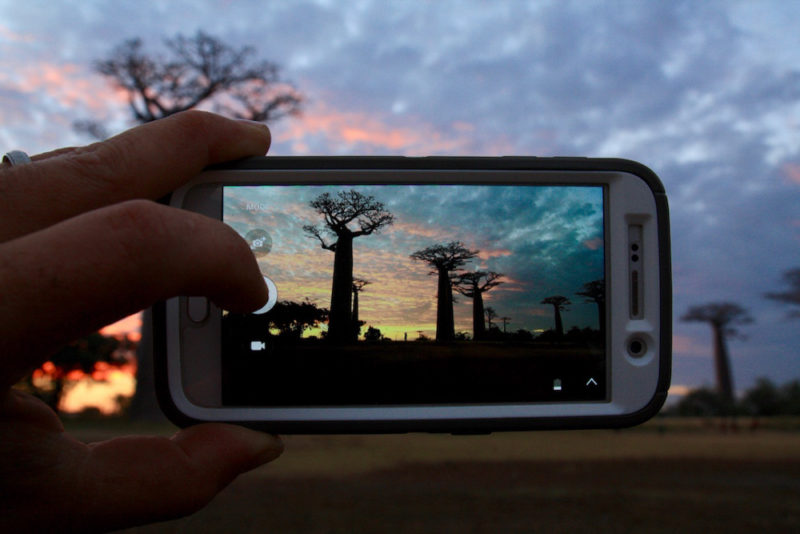
The west of Madagascar has two of the main highlights, Tsingy de Bemaraha and the Avenue of the Baobabs . An excellent way to visit the west is on a seven-day tour that includes a few days on a traditional pirogue (boat) floating down the Tsiribihina River.
Tsingy and the Avenue of the Baobabs are two of the most popular places to visit in Madagascar and a highlight that should not be missed.
East Madagascar: Jungle and Beach
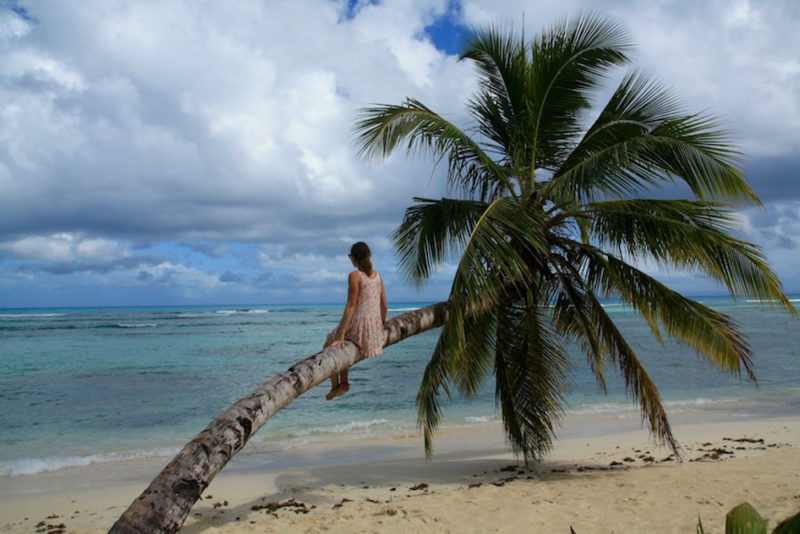
The east of Madagascar is a very desirable part of the country, with excellent rainforests and beaches. Near Antananarivo, Andasibe is a rainforest with great walking tours. Continue to the coast to Ile Saint Marie and the paradise island of Ile Aux Nattes .
South Madagascar: Hiking and Beach
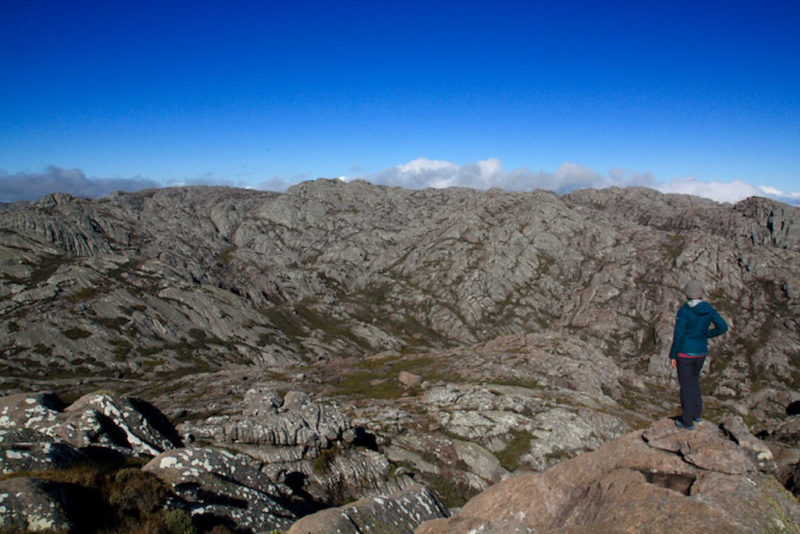
Due to better road infrastructure, visiting the south is the most popular route for tourists. The itinerary usually visits Antsirabe, Ambalavao, Anja Park, Isalo National Park, and one of the beach towns near Toliare, such as Anakao or Ifante.
While this is very popular, this was our least favorite part of the country. The only exception was hiking the Andringitra Mountains near Ambalavao.
North Madagascar: Rainforest, Rock Formations, and Beaches
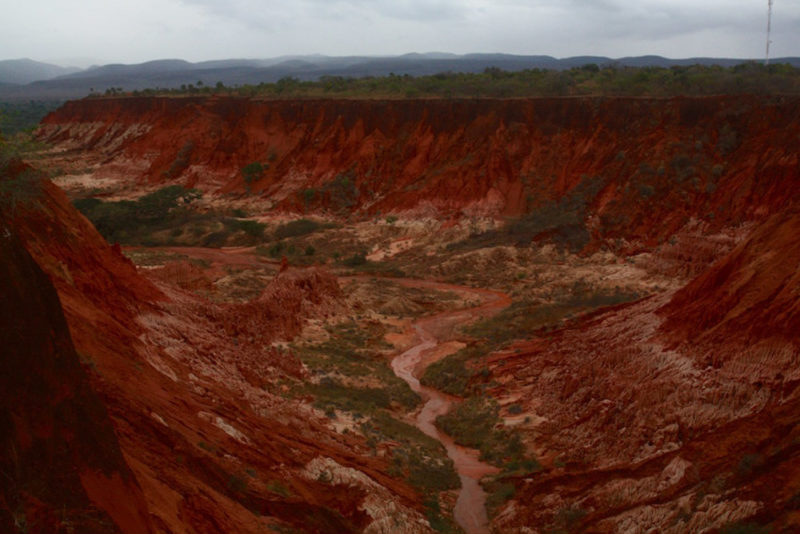
The north is much more laid back than the rest of the country. Most of the north is concentrated around Diego Suarez and Nosy Be. Nosy Be is expensive and a popular resort island. Diego Suarez is a great colonial city with excellent sites nearby.
Main activities include a visit to Ramena, a boat ride to Emerald Bay, hiking the Three Bays, and a day trip to Tsingy Rouge and Amber Mountain.
Best of Madagascar
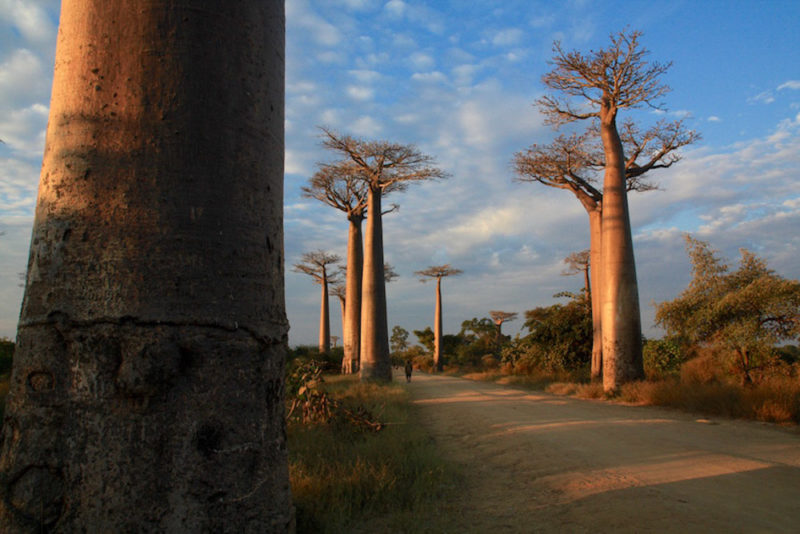
- Avenue of the Baobabs
- Andasibe rainforest
- Ile Aux Nattes
- Andringitra mountains
- Tsingy Rouge
That’s the complete guide to madagascar – we hope you have an amazing visit to this beautiful country!
Planning a trip to Madagascar? Check out our favorite books and travel guides!
SHARE THIS ON PINTEREST
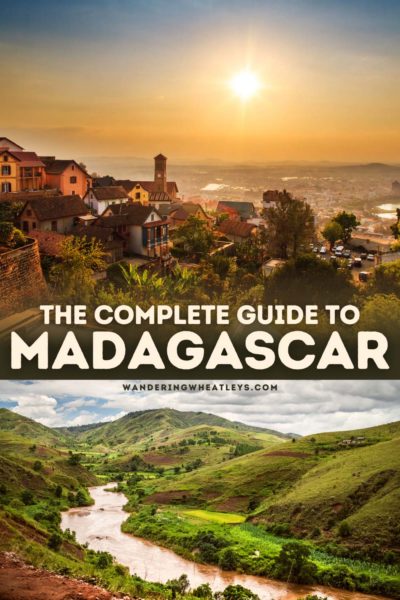
About the Author:
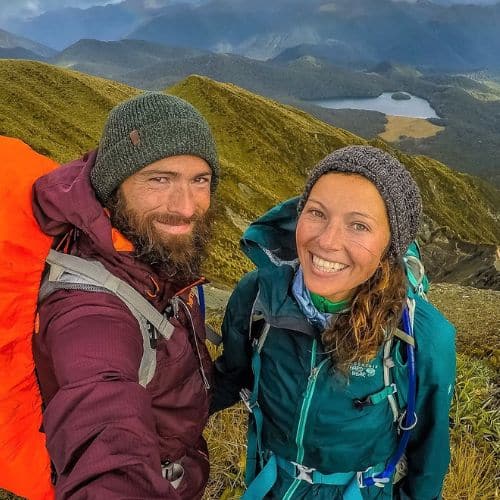
Yana & Timon met at college in Boston, Massachusetts. After graduating, they started their professional careers. They moved to San Francisco in 2010, a city they loved living in for nearly six years. After working and saving up money for several years, they quit their jobs and set off on an adventure of a lifetime. They started living a nomadic lifestyle in December 2015 and have not looked back since.
View all posts
Related Posts
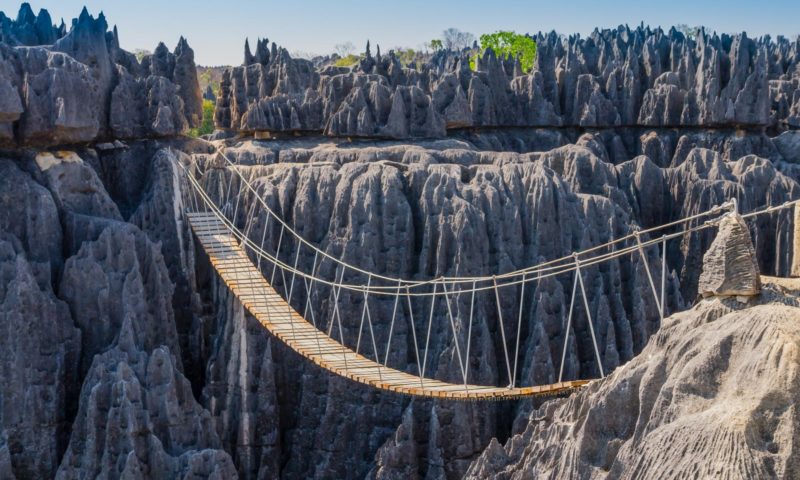
Wild West Tour of Madagascar
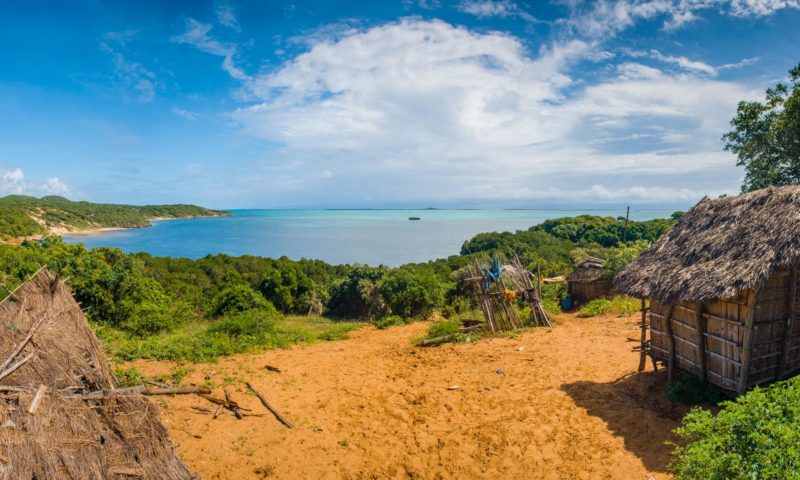
An Adventure Guide to Diego Suarez, Madagascar
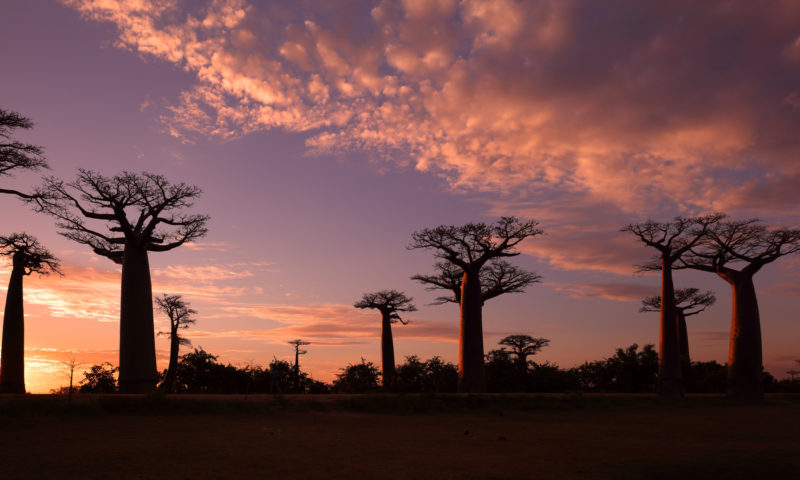
The Ultimate Madagascar Itinerary Ideas
1 thought on “complete guide to madagascar: all you need to know”.
Hi Your trip sounds great, thank you very much for sharing all this helpful information. How was it with the safety? Did you always feel save? Or did you hear of tourists getting robbed?
Leave a Comment Cancel Reply
Your email address will not be published. Required fields are marked *
12 Best Things to Do in Madagascar
:max_bytes(150000):strip_icc():format(webp)/DSC00412-5b73daf7c9e77c0057ca2198.jpg)
Located several hundred miles off the coast of Mozambique , Madagascar is one of the most unique places on Earth. It is a land with many different faces—golden shores, lush mountains, jagged limestone karsts, and plunging, arid canyons. These eclectic habitats are home to an incredible variety of wildlife, 90 percent of which is found nowhere else on Earth. There is something for everyone in Madagascar , whether you’re looking to relax on untouched beaches or to escape off the grid into pristine rainforest. The country’s capital, Antananarivo, is a melting pot of history, diverse culture, and fine modern cuisine.
Read on to discover the best things to do in Madagascar.
Look for Lemurs
Of all Madagascar’s weird and wonderful creatures, lemurs are without a doubt the most iconic. There are nearly 100 different species and sub-species of lemur on the island, all of which are endemic. These charismatic primates range in size from the tiny pygmy mouse lemur to the majestic, monochrome indri. The best way to spot Madagascar’s lemurs is to head to one of its many national parks . In particular, Andasibe-Mantadia National Park is known for its large indri population while Ranomafana National Park is home to 12 species, including the critically endangered golden bamboo lemur. While exploring the island’s parks, keep an eye out for other endemic species, including tenrecs, civets, and the cat-like fossa.
Swim with Whale Sharks
There’s nothing quite like an encounter with the world’s largest fish . Those visiting Madagascar from September to December can do just that, off the northwestern island of Nosy Be . At this time, these behemoth fish gather to feed on blooming plankton and can easily be spotted from the surface. Despite their huge size (whale sharks reach an average length of around 9.5 meters (31 feet), they are naturally docile and pose no threat to humans . In season, operators like Baleines Rand’eau offer whale shark snorkeling trips with a 95 percent chance of success. While you’re out there searching for sharks, remember to look for Madagascar’s other marine life, including turtles, manta rays, and dolphins.

Marvel at Baobabs
Baobab trees are intrinsically woven into the fabric of African folklore. In the past, Indigenous people depended upon their products for survival, and as such, these strange trees are often called the “Tree of Life.” Today, they are remarkable for their vast size, with the largest species growing up to 14 meters (46 feet) in diameter. Madagascar is home to six types of endemic baobab. Although they can be seen all over the island, the most famous place for baobab-worshipping is the Avenue of the Baobabs. Located in the Menabe region of western Madagascar, the Avenue comprises some 25 trees strung out like sentries along the Morondava-Belon’i Tsiribihina dirt road. Many of the trees are more than 30 meters (100 feet) tall.
Explore Antananarivo
Founded by the king of the Merina people at the beginning of the 17th century, the Malagasy capital is steeped in history. Known locally as Tana, Antananarivo also served as the capital for French colonialists in the 19th and 20th centuries and remains the island’s center of political and economic power today. There is much to explore in Tana. For beautiful architecture, head to the old Haute-Ville area of the city. Get your cultural fix in the city’s art galleries and museums, or soak up the atmosphere while browsing the open-air produce stalls at Analakely Market. Tana is known for its culinary culture, whether you’re hoping to sample street-food delicacies or experience fine French dining in restaurants that compete on an international level.
Sign Up for Scuba Diving
Whether you’re an experienced diver or a beginner hoping to take the plunge for the first time , there are plenty of incredible scuba diving opportunities in Madagascar. With approximately 4,800 kilometers (3,000 miles) of coastline, you’re never far from the ocean. In the southwestern part of Madagascar, you'll find the world’s third largest coral reef system: the Tuléar reef. It provides a habitat for more than 6,000 marine species, many of which are unique to Madagascar. The island of Nosy Be is perhaps the most famous destination for divers, while charter boats in the north can be hired as dedicated diving liveaboards. Conditions are ideal, with good visibility year-round and balmy water temperatures. Bucket-list animals include whales, dolphins, sharks, and manta rays.
Sample Local Cuisine
Wherever your adventures take you, make sure to sample the local cuisine. Traditional Malagasy dishes usually consist of either meat or seafood served with vegetables and rice. Spices are used sparingly, but the food is nevertheless flavorful. Try koba, a popular street food consisting of banana, peanut, and rice paste wrapped in a banana leaf casing. Romazava is the traditional beef stew, while kabaro (curried lima beans and coconut) is popular in the Morondava region. On the coast, fresh seafood dominates the menu. Wash your meal down with the local Three Horses Beer (THB) or with ranonapango (sometimes called ranovola). The latter is made from burnt rice water and may be an acquired taste.
Visit the Stone Forests
Günter Lenz / Getty Images
Madagascar is full of extraordinary scenery, but perhaps the most striking of all its alien landscapes are the limestone karsts of northwestern Tsingy de Bemaraha National Park . Approximately 200 million years ago, the limestone seabed was pushed upwards, creating a vast plateau. Over time, the plateau was eroded, eventually becoming a dense “forest” of jagged limestone needles interspersed with canyons, waterfalls, and an almost impenetrable forest. In addition to its prehistoric badlands scenery, Tsingy offers the opportunity to look for 11 different lemur species, some of which are only found in this specific area. There are also endemic reptiles, birds, and a plethora of utterly unique botanical species.
Spot Endemic Birds
There are approximately 280 bird species in Madagascar. Although this isn't a particularly high figure for the fourth-largest island in the world, a high level of endemism confirms its status as a prime birding destination. More than 100 species are Madagascar exclusives, and there are three main regions for those in search of endemic birds: the eastern rainforest, the southern spiny bush, and the deciduous forests in the west. If you have limited time, try Ranomafana National Park , home of rarities like the short-legged ground roller and the yellow-bellied sunbird-asity. The best time for birding is in late spring or early summer (August to December), when birds are at their most active and are dressed in their finest breeding plumage.
Discover Pristine Beaches
White sand, abundant palms, and azure waters make Madagascar one of the most beautiful island destinations in the Indian Ocean . Some of the country’s best stretches of sand are found on outlying islands in the northwest. Tiny Tsarabanjina, for example, evokes Robinson Crusoe with its deserted sandy coves and crystalline seas. The island is only accessible by boat and offers luxury accommodations in the form of private beach bungalows. The beaches of nearby Nosy Iranja are frequented by nesting turtles, while on the east coast, Île aux Nattes is a tropical paradise with several options for accommodation and activities. On the mainland, the beaches around Anakao in the south offer reliable swells for surfing and kite surfing.
Go Whale Watching
Those heading to Madagascar between July and September should make their way to the northeastern island of Île Sainte-Marie to witness the annual humpback whale migration. Also known as Nosy Boraha, this idyllic island plays host to hundreds of humpbacks, all of whom have traveled thousands of miles from the nutrient-rich waters of the Southern Ocean. Their sojourn to the warm waters of the Indian Ocean is something of a wintertime vacation—a time to come together, mate, and give birth before returning to Antarctica . Humpback whales are the most acrobatic of all whale species, and if you join an Île Sainte-Marie whale-watching tour , you’re likely to see them breaching, spy-hopping, and slapping their giant pectorals.
Get Lost in Isalo National Park
Isalo National Park, which protects more than 190,000 acres of land, is a nature lover's paradise. Here, you will find thick forests of pandanus trees, natural swimming holes, and dramatic geologic formations such as plateaus, gorges, canyons, and pinnacles. For wildlife, you're in for a treat: Within the park, you can spot some 14 species of lemurs, over 80 different types of birds, and reptiles and amphibians like the Malagasy rainbow frog and the Madagascar boa. Visitors to the park mainly come here to hike, with the Piscine Naturelle Trail being one of the more popular trails. Be aware that you will need to hire a local guide to explore the park, either through an organized Madagascar tour or at the park office in Ranohira.
Spot Wildlife in Lokobe Nature Special Reserve
Located in Nosy Be, Lokobe Nature Special Reserve is the island's last remaining lowland rainforest, and a must-see if you're in Madagascar to see wildlife. Among the island's residents, you'll find nocturnal mouse lemurs, Madagascar long-eared owls, leaf-tailed geckos, and Nosy Be panther chameleons. Do be on the lookout for the endangered black lemur, which is a bit of a misnomer, considering that the females are rust-colored and have white tufts of hair on their heads. Getting here will require you to row a pirogue, a traditional dugout canoe, to shore; we recommend booking a group tour for ease of planning a trip here.
Madagascar is perhaps best-known for its lemurs—of which nearly 100 different species and sub-species live on the island—and for its massive baobab trees. The island is also home to the Tuléar reef, the world's third-largest coral reef system, making Madagascar one of the top scuba diving destinations in Africa.
It depends on which part of the country you're planning to visit. For those interested in exploring the east coast (Île Sainte-Marie and Andasibe-Mantadia National Park), July through September is when this mostly rainy, humid region is at its driest and coolest. On the northwest coast (Nosy Be), June through September offers excellent scuba diving, while October through December promises great whale shark-spotting. In the Central Highlands (Antananarivo and Ranomafana National Park), travelers will find pleasant temps and smaller crowds than in the busy tourist season.
The two official languages of Madagascar are Malagasy and French, though the former is more widely spoken as it's a first language for most locals.
World Wide Fund for Nature. "Madagascar's Major Reefs Among Most at Risk From Climate Change." December 4, 2009.
The Top 8 National Parks in Madagascar
Nosy Be, Madagascar: The Complete Guide
Madagascar Travel Guide: Essential Facts and Information
Ranomafana National Park: The Complete Guide
Weather in Madagascar: Climate, Seasons and Average Temperatures
Isalo National Park, Madagascar: The Complete Guide
Top 18 Things to Do in Antananarivo, Madagascar
Tsingy de Bemaraha National Park: The Complete Guide
Africa's Indian Ocean Islands: The Complete Guide
The Best Places to Visit in Belize
Amber Mountain National Park: The Complete Guide
Islas Marietas National Park: The Complete Guide
8 of the Best Scuba Diving Destinations in Africa
9 Very Adventurous Things to Do in Costa Rica
Top 10 Destinations in Africa for a First-Time Visitor
18 Most Beautiful Islands in the World

The Perfect Travel Itinerary For Madagascar
70 Comments
- Last Updated On: September 10, 2023
Madagascar may be the definition of exotic destinations. Nestled in the south Indian Ocean, this island is home to thousands of endemic animal and plant species found no where else in the world. Its landscapes are as different as they are otherworldly, as well as its people, a curious mix of Southeast Asian and African. Of all my travels around the world , Madagascar is still the answer I give to people when they ask me my favorite country. I spent a month in Madagascar which I think was still a bit too short. I could have easily spent three months because there is so much to see. There’s as much geological diversity here as there is in the United States.
I spent just under a month traveling through Madagascar. It’s not an easy place to travel through . Roads and general infrastructure here is some of the worst in the world. The main highways are equivalent to side streets in most other countries, but riddled with potholes and teeming with people walking their ox-carts.
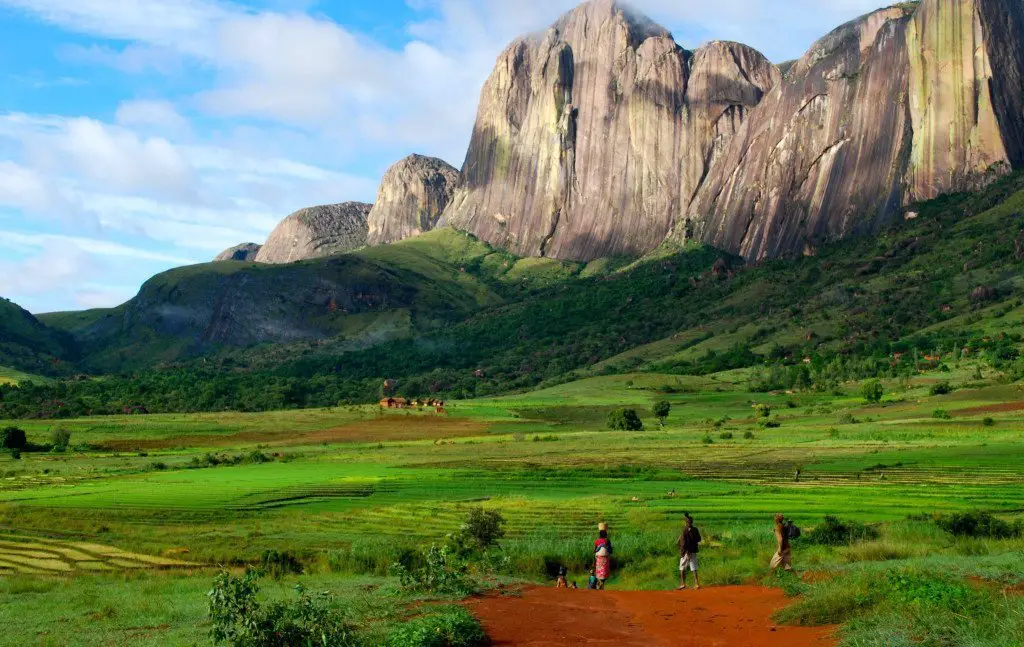
I would recommend a minimum of 10 days in Madagascar (not including the flight to get here which can be very long), purely because the road conditions are awful and the sole airline, Air Madagascar, is suspect at best.
Interested yet? If you’re planning to visit Madagascar, make sure to read my Guide to Traveling Madagascar for all the important things I picked up along the way. Then read the itinerary below 🙂
Where I went
In total, our trip was 28 days and our itinerary included the following
- Antannarivo
- Avenue of the Baobabs
- Tsingy Stone Forest
- Ranomafana National Park
- Isalo National Park
- Andasibe National Park
- Ile Sainte Marie & Ile Aux Nattes
If these sights are on your list and you have about a month for your visit, this post is for you! This itinerary can easily be tailored for a two week or three week Madagascar itinerary. Just pick the places you want to go!
I booked most of my accommodations through Booking.com as it seemed like most of the hotels in the country have adopted use of this platform. In previous years, you’d have to call in advance to book but they’ve caught on since!
In depth Madagascar posts
Like always, this guide is a general overview of the trip I did and to help you plan your wonderful trip to the country. Make sure to read the detailed posts below of all the places I visited for more information, pictures, and videos!
- Guide to Traveling Madagascar
- Morondava and the Avenue of the Baobabs
- Ile Sainte Marie and Ile Aux Nattes
Full Itinerary:
Day 1-5: Straight to the Tsingy Stone Forest
We landed in Antananarivo International Airport in the early afternoon on a South African Airways flight. After clearing immigration, which gives all Western passports FREE 30 day tourist visas, we met our driver, Serge, waiting for us at arrivals. We planned on exchanging some Euros at the FX counters at the airport but our driver said he had a guy that would hook us up with better rates. A bit early in the trip for potentially shady practices, but what the hell?
My driver’s name was Serge, and his email is [email protected]. Feel free to email him and see if he has availability for you!
We met with the guy, and he did indeed give us a better exchange rate and we were rolling in stacks of cash (the biggest bill in Madagascar is worth $3-4). We decided to skip Antananarivo (Tana) and drove straight towards Antsirabe where we spent the night.
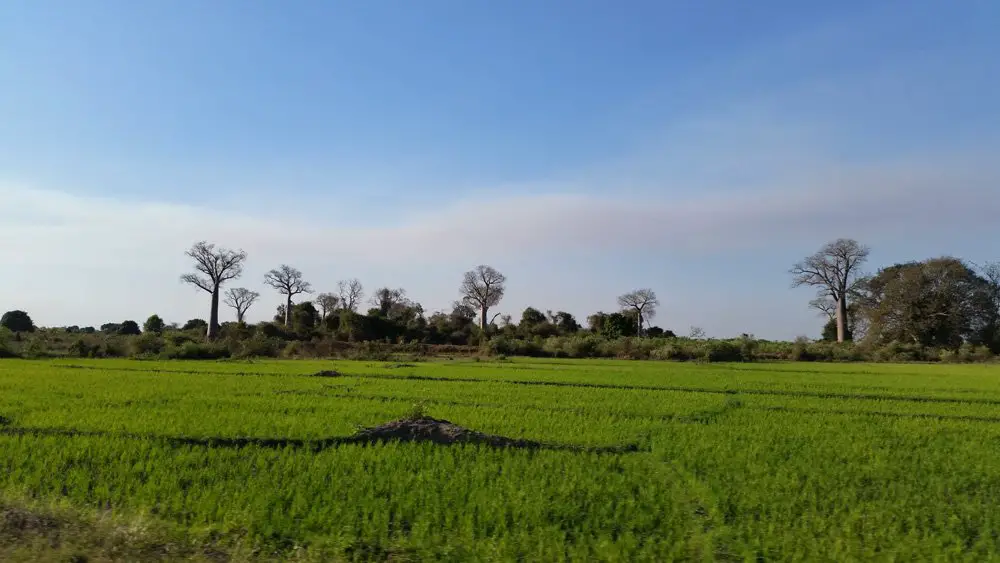
Antsirabe to Tsingy Stone Forest
The next day we headed the Western beach town of Morondava. The drive took the whole day, but not without beautiful rice terraces and otherworldly landscapes. Morondava is a must stop for those visiting the Tsingy Stone Forest because it’s impossible to drive there at night. We would come back to Morondava afterwards for a few nights of R&R.

The next day we drove straight to the Tsingy Stone Forest . It was offloading and make shift barge ferries the entire way up but we made it to our guesthouse just before sunset. We stayed here for three nights and hiked the Grand Tsingy and Petite Tsingy. Unforgettable places!
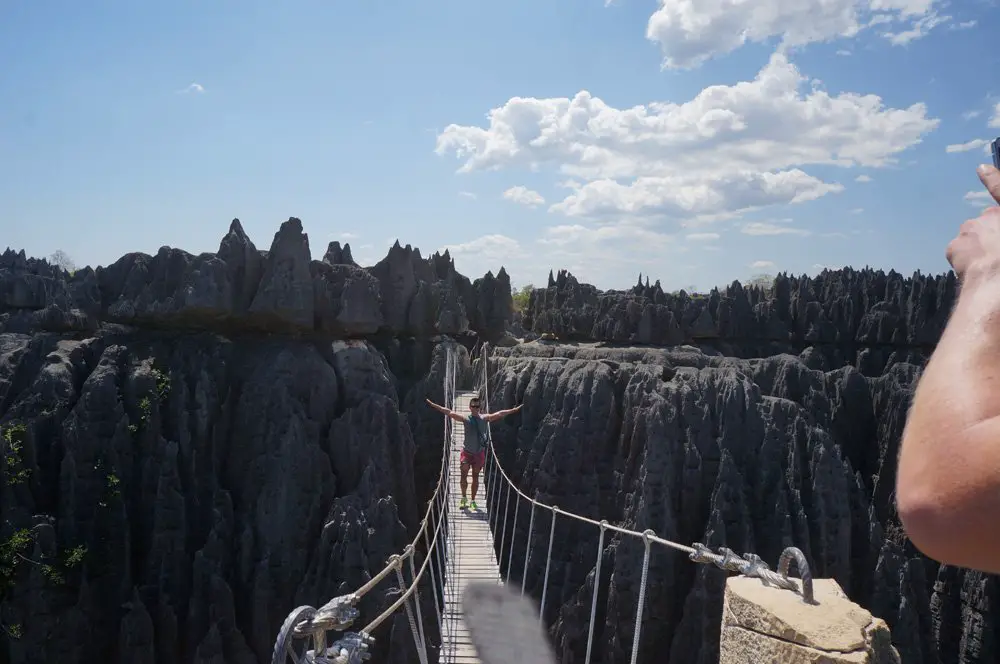
Day 6-8: Morondava and Avenue of the Baobabs
Day 6 was spent entirely on the same road back towards Morondava. We arrived around sunset to one of my favorite places in the world, the Avenue of the Baobabs . This is one of those places that looks amazing in photos, and looks just as magical and special in person. The giant baobab is native only to Madagascar and it’s about as unique of a tree as there is.
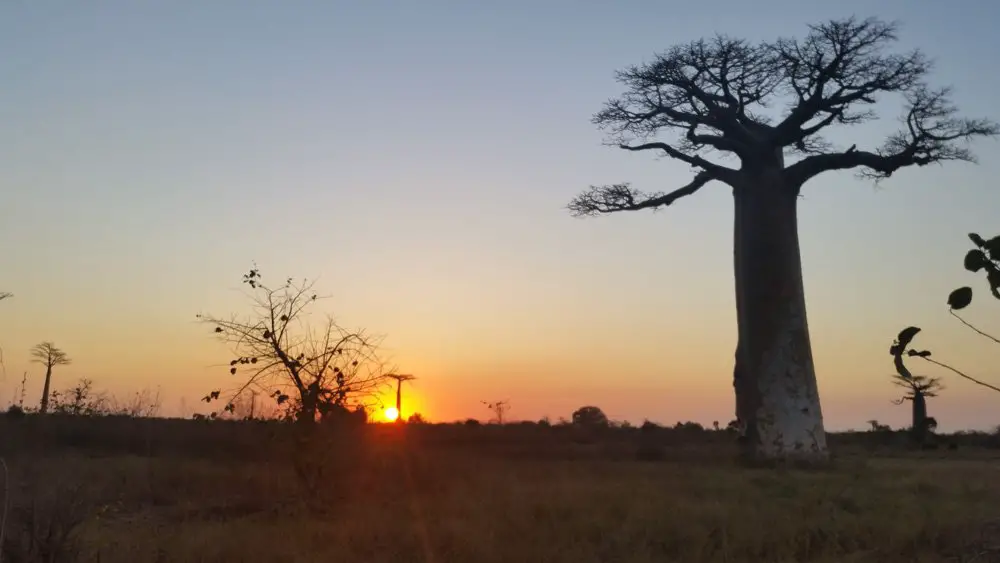
We stayed the next two nights in Morondava. We enjoyed the beach, partied with the locals by drinking copious amounts of Three Horses Beer, and hung out with local fisherman to eat hearty portions of lobsters and prawns.
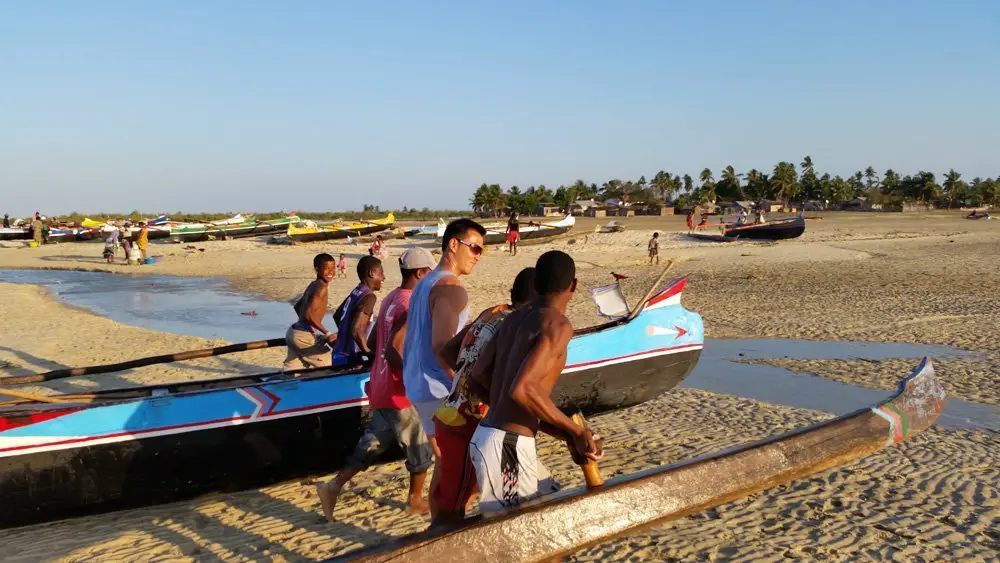
Day 9-11: Ranomafana National Park
Day 9 was another all day drive. We had plenty of these because Madagascar is a surprisingly big country, and the roads are so bad, you’re never driving more than 90 km/h. We arrived in Antsirabe (where we also spent the first night), to spend the night.

The next day, we drove south along the RN7, Madagascar’s main highway, to Ranomafana National Park . This park is known for their numerous species of lemurs, including the elusive golden bamboo lemur. The contrast in scenery is extraordinary as Ranomafana looks like a tropical rainforest, where the previous segment of our trip was some combination of desert and ocean.

We spent two nights in Ranomafana and spent a whole day hiking through the park.
Day 11-14: Isalo National Park
Day 13 was another transit day as we drove along the RN7 from Ranomafana National Park to Isalo National Park. The landscape changed yet again to rugged landscapes that reminded me of the American southwest, but with palm trees dotting the horizon. We made the full day drive and stopped at various locations like the base of the Andringitra Moutnains and the Anja Nature reserve, home to numerous ring tailed lemurs.
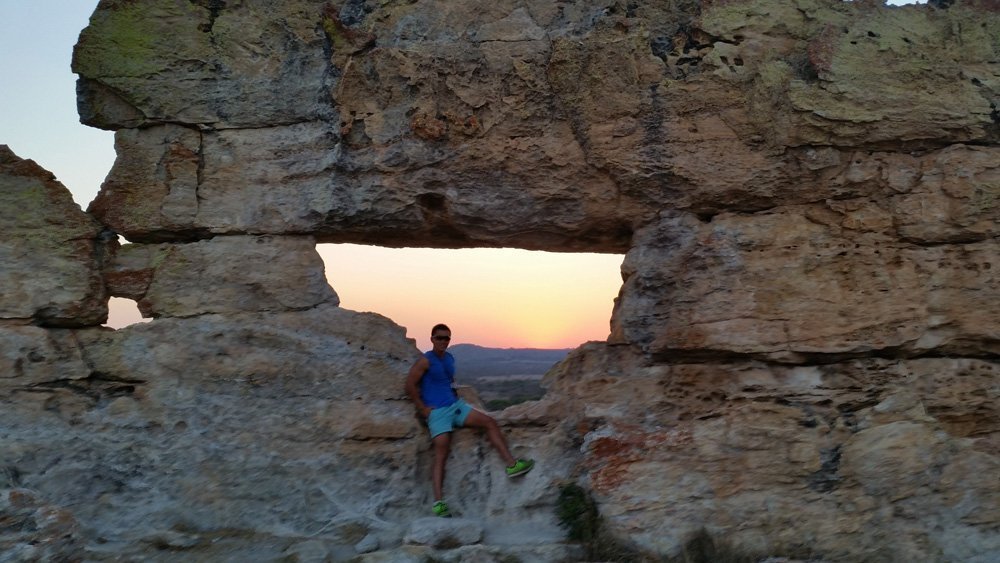
Isalo National Park is one of the most popular parks in the country and this is where we decided to stay in our “luxury” accommodations”. We spent three nights here, and I could have used another day as I very much enjoyed it here.
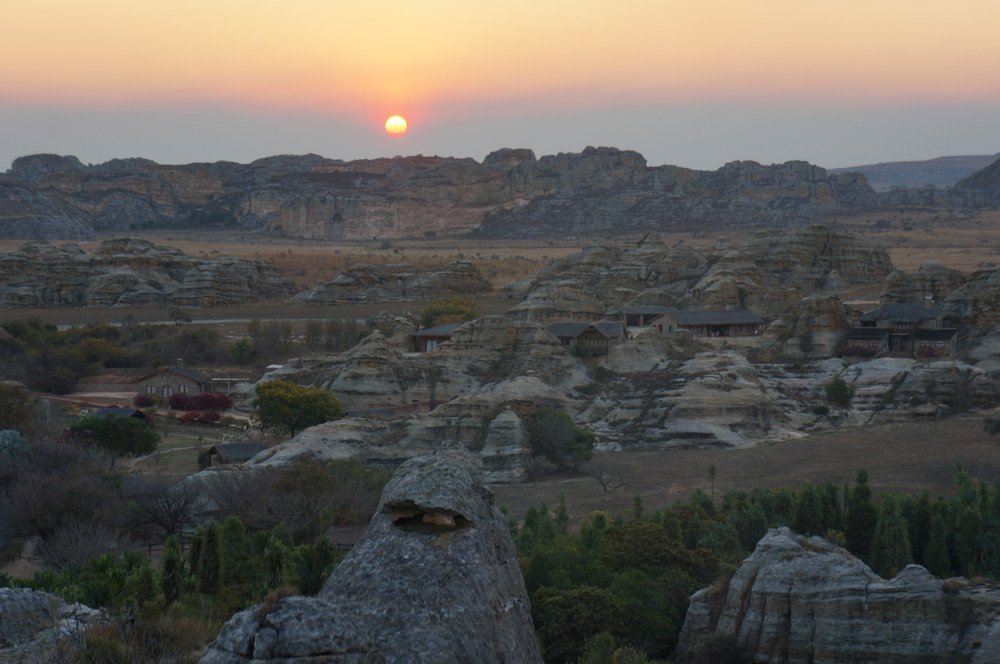
We hiked all around the park, including the two canyons, Windows of Isalo, and Piscine Naturelle. The hiking trails here are long and physically challenging. There are many options so you can choose what best fits you. Some people spend days hiking through the park, camping along the way. While we weren’t that adventurous, we felt like we saw a lot of the park.

Day 15-18: Andasibe National Park
After an amazing visit to the Isalo National Park, our next destination was Andasibe National Park. This is the most visited park in all of Madagascar, likely because of its proximity to the capital (3-4 hours drive). It is home to the Indri lemur, the largest species of lemur that is famous for its loud and distinctive howl.

There are numerous luxury lodges here. One of these, the Vakona lodge, has a sanctuary for orphaned and domesticated lemurs of all species. You can play with them as well as they are completely unafraid of jumping on you. I’m not sure if there is some questionable ethics happening at this place, but it was a great experience nonetheless.
Day 19-25: Mahambo and Ile Sainte Marie
The last leg of our trip was beach time! From Andasibe, we drove to east towards the port town of Mahambo where we stayed for the night. They had a resident ring-tailed lemur that was also domesticated and followed us around the entire time. It even followed us into our bungalow where we tried (unsuccessfully) to kick it out. It ended up staying the night in our bungalow which in hindsight, was pretty cool.
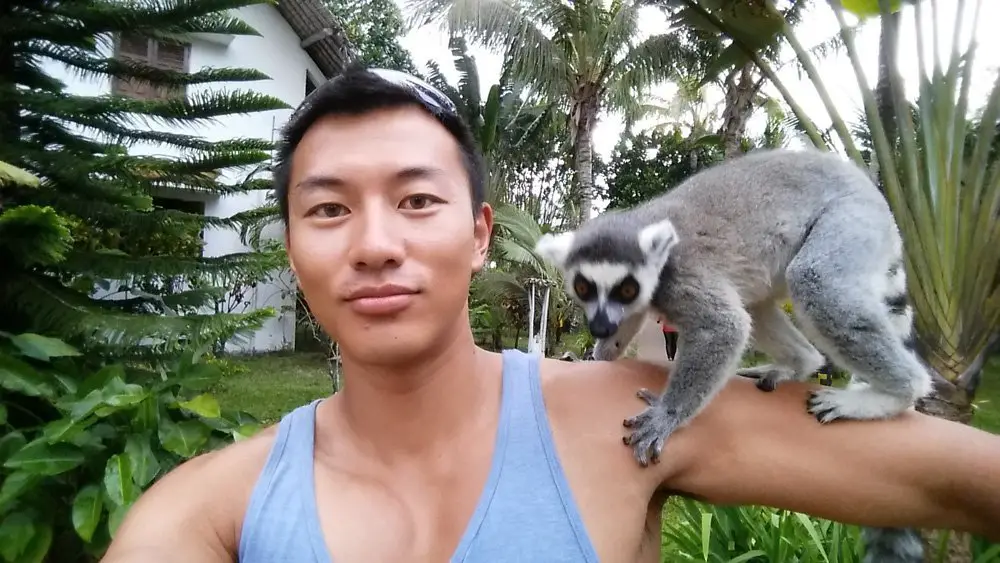
The next day, we drove to Soanierana Ivongo, where we caught the passenger ferry to Ile Sainte Marie . Upon arrival, we took another transport to the smaller nearby island of Ile Aux Nattes. This place was pure paradise. Not only was there the bluest waters and whitest sand, but we had the whole place to ourselves. We did day trips to scuba dive, and took mopeds all around Ile Sainte Marie.
Some of the nicest beaches I’ve ever seen are in Ile Aux Nattes. It is just so rustic here that we felt like this beautiful slice of paradise to ourselves (which we pretty much did). Alternatively, you could pay thousands of dollars to stay at a resort on Turks and Caicos, or go to a much more stunning and incredibly untouched place like Madagascar!

Day 25-27: Antananarivo
Alas, the end of the trip. We took the morning ferry back to Soanierana Ivongo, and took a bus to the port capital of Tamatave. From Tamatave, we charted an entire Taxi-Brousse, the local form of transportation as we didn’t want to wait for it to fill up. We had a day to explore Tana which is about all you need.

Tana offered more to see than I had imagined. There are beautiful viewpoints all around the city as it is in the highlands, as well as nice colonial French architecture.
Day by Day Itinerary
Day 1: Land in Tana, drive to Antsirabe Day 2: Drive to Morondava Day 3: Drive to Tsingy Stone Forest Day 4: Hike Grand Tsingy Day 5: Hike Petite Tsingy Day 6: Drive back to Morondava, stop at the Avenue of the Baobabs Day 7: Relax in Morondava Day 8: Drive to Antsirabe Day 9: Drive to Ranomafana National Park Day 10: Hike Ranomafana Day 11: Ranomafana to Isalo National Park Day 12: Hike Isalo Day 13: Hike Isalo Day 14: Isalo to Andasibe National Park Day 15: Hike Andasibe National Park Day 16: Hike Andasibe National Park Day 17: Andasibe to Mahambo Day 18: Mahambo to Ile Sainte Marie Day 19: Ile Sainte Marie / Ile Aux Nattes Day 20: Ile Sainte Marie / Ile Aux Nattes Day 21: Ile Sainte Marie / Ile Aux Nattes Day 22: Ile Sainte Marie / Ile Aux Nattes Day 23: Ile Sainte Marie / Ile Aux Nattes Day 24: Ile Sainte Marie to Antananarivo Day 25: Antananrivo Day 26: Fly out
This itinerary hopefully will help you in planning a trip to Madagascar. To be honest, I could have stayed at least another week or two. There is just so much to see and so much geological diversity that you could spend months traveling the country. If you have any questions or comments, please leave below!
Continue Reading:
- Guide To Visiting Andasibe National Park And Lemur Island, Madagascar
- The Ultimate Guide to Traveling Madagascar, The Red Island
- Guide To Visiting Ranomafana National Park, Madagascar
- The Ultimate Guide to Ile Sainte Marie and Ile Aux Nattes
- Ultimate Guide To Visiting Isalo National Park, Madagascar
- Guide to Visiting Morondava and Avenue Of The Baobabs
- Guide To Hiking The Tsingy Stone Forest, Madagascar
- The Best Of Johnny Africa – Top Moments Traveling Through Africa
- The Ultimate One Week and Two Week Travel Itinerary for Uganda
- The Perfect Las Vegas To Zion National Park Itinerary
- The Perfect South Africa Honeymoon Itinerary And Guide
- The Perfect One Week, Two Week, and Three Week Travel Itinerary For South Africa
- The Perfect 5-Day Itinerary For Zion, Bryce Canyon, Grand Canyon, and Antelope Canyon
- The Perfect One Week And Two Weeks Travel Itinerary For Albania
Related Posts

The Perfect Sri Lanka Travel Itinerary: One Week, 10 days, and Two Weeks
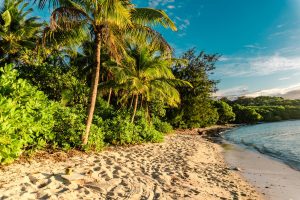
The Perfect Fiji Honeymoon Itinerary: One To Two Weeks

The Perfect Fiji Travel Itinerary: Beaches, Diving, and Island Paradise

The Perfect Vietnam Travel Itinerary: One Week, Two Weeks, and Three Weeks
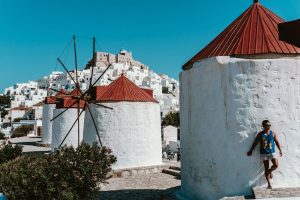
The Perfect Two Week Travel Itinerary For Greece

The Perfect One Week Itinerary For Greece
Leave a reply cancel reply.
Your email address will not be published. Required fields are marked *
Yes, add me to your mailing list
Add Comment *
Save my name, email, and website in this browser for the next time I comment.
Notify me of followup comments via e-mail. You can also subscribe without commenting.
Post Comment
Magnificent goods from you, man. I have keep in mind your stuff previous to and you are simply too wonderful. I really like what you’ve acquired here, certainly like what you’re stating and the way in which in which you assert it. You make it enjoyable and you continue to care for to stay it wise. I cant wait to learn far more from you. This is really a wonderful site.
How long did it take you from TSINGY STONE FOREST to Morondava? Is the only way back to the capital or is there a shortcut maybe?
Hi it is a full days drive from morondava to the tsingy. The roads are quite terrible and you’ll need to Take it slow. No other way around unfortunately!
Hi Johnny, I have 5 days 4 nights to spend in Madagascar, where I will arrive in December by flight at Antananarivo in the morning at 10.40 and leave at 14.45 on the fifth day. I wonder if it is possible to visit and see my 3 main objectives: Boabab trees in Boabab Avenue, the lemurs and Tsingi rock forest? Thanks 🙂
Hi arifin, I think it can be done but may feel very rushed and you won’t see as much. You can fly to morondava as soon as you land, and stay the night there while visiting the baobabs at sunset. The following day you will drive the whole day to the tsingy (and see the baobabs again as you must pass through them to get to Tsingy). The 3rd day you can make a hike through the big tsingy, the 4th day you would then drive back to morondava, and the 5th day you can fly to tana in the morning.
Hi My husband and I are traveling to Madagascar next month for 2.5 weeks. Can you pls suggest what shall we prioritise to visit in such a short time. We would like to spend a few days on the beach to relax Thank you, Monika
hi Monika, i would visit the western part of Madagascar per my itinerary, and then maybe a few days in Andasibe and then off the beach. But that is jus tmy preference. You can see my other post and pick what most makes you excited!
Thanks for putting together a great blog post about madagascar. It is really helpful to see an itinerary to see what is possible to do in madagascar. It looks like you had an amazing trip. I am going to madgascar for two weeks in August and I am trying to figure out one last piece of my itinerary. I see you travelled in one day from Isalo National Park to Andasibe. How long did this take you? We want to fit a visit into Isalo National park and it would be great to have an extra day by being able to drive from Isalo National Park to antananarivo in a single day.
Hey Chris! We actually stopped in Ambositra for the night. I don’t thjink it’s possible to drive from Isalo to Andasibe in a day. Alternativelly you could probably reach Tana in one day from Isalo as well!
Hi Johnny, I will go in Madagascar from 05 September to 21 September. We are a couple, and we are sportive and very very adaptable. Can you suggest an itinerary? (I would spend one day to play windsurf if it’s possible 🙂 )
tks best regards
Thanks for an amazing overview.
We plan on going to Madagascar this summer for 4 weeks. Here we have used your itinerary as the main inspiration. This include: – Nosy be (1-3) – Diego Suarez (4-6) – Morondova and Tsingy (7-13) – Isalo (14-16) – Ranomafana (17-18) – Andasibe (19-20) – Ile Nattes (21-26) – Tana (27-28)
However, when reading your itinerary one thing would be nice to know for all of it to add up. How did you get from Isola to Andasibe and how long did it take? 🙂
Thanks again! Marc
Hey Marc, that sounds like a great trip! One thing to note, from the tsingy and morondava to isalo will take you 2 days of driving so you’ll want to account for that. we took a driver with a car throughout our Madagascar trip. Hope that helps!
Hi Johnny, Thank you for your insights on madagscar, they have been helpfil. I have just started to plan a trip to Madagscar, from the 21st june to the 15th – my plane arrives at 21st June 22:00 pm and leaves at 15th 00:30 am.
I would like to visit more or less the places you did, but I think I might be short on time. I would like to visit Tana – Andasibe-Mantadia Parl – Ranomafama park – Isalo Park – Tsingy Baobas – St marie Island/Ille aux Nattes and possibly Kirindy. I wanted to end my trip with 5 nights in St Marie to relax and do some whale watching.
Do you think I could fit all this in such a shhort timeframe? What would you recommend?
Hi thank you so much for your blog post it was really informative and made it all sounds so exciting. I am going to Madagascar from March to April and will be staying in Andasibe, with food provided by a family. It is my first time travelling abroad by myself and was wondering whether you had any general tips; e.g. what things to avoid, what foods to steer away from and whether anything is an absolute must to bring etc… any tips will be super helpful. Thank you so much
Hi Poppy, that is quite the first place to travel alone to!! No matter, you will absolutely love it! I would say that the local food in madagascar can be quite tasty but if you’ve not traveled to very undevelope dplaces before, i would take it easy on the food until you know you can handle it. I hope you planned some trips afterwards however because Madagascar is such an amazing country that you’ll want to see more than just the Andasibe area!
I don\’t have a website so not sure how to respond to your blog posts. Sorry. But, I love the blog on Madagascar. I am planning a trip in May to see my niece in the peace corp. I’m nervous because she wants to plan it all, but I want us to use tour company such as GMT +3 TOURS. I keep hearing about the “malagasy stomach” and have been advised to be careful of what we eat. What would you recommend for food? Stick to hotels? They say “if you can’t peel it, don’t eat it”.
We are only there 10 days and she has us covering a lot of ground: Tana – Andasibe – Tamatave – Mahambo – St. Marie, then a boat to Ill Au Natte for 2 nights, then a regional flight to Tana to head back to US. Sounds aggressive. Your thoughts?
Hi Kim! Thanks for the kind words. I think like most places, you watch what you eat depending on your travel and stomach threshhold. What may rough up one’s stomach won’t for others. But generally, I avoid “salads” and fruits without an outer layer. I think if your niece is in the peace corp, she’ll have a good understanding of the country and know someone that can help her book her accoms. For the most part, you will be staying at modest hotels and guesthouses where the food will be good quality.
As for your itinerary, I think it should be enough time although I’d spend less time in Tamatave/Mahambo and more time on Ile Aux Nattes. Something like 2 days Tana, 3 days Andasibe, 1 day Mahambo, and 4 days in Ile Aux Nattes. Enjoy!
Hi Jonny, Thank you for your info. This is really helpful! We are planning a trip to Madagascar and are curious when the best time to go is. Do you have any advice?
Much Gratitude Aimee
Hi Aimee! I’d always recommend to travel in the dry season in Madagascar. This is May to November for the best times. The wet season can be very beautiful too of course but the weather is just very variable and some sights are out of reach like the Tsingy. Make sure to read my Madagascar Travel Guide for more info!
I’m looking to go with my 8 year old who is obsessed with the animals and nature in Madagascar. Did you see a lot of animals? That is his main goal, so trying to make sure we fit in plenty of forest/jungle time. He wants to see everything from giraffe bugs to lemurs.
Hi Karilyn, I defintely saw many many animals as you can see in all my detailed posts of the country. Lemurs were of course a daily sighting and other native animals as well. It was a great experience and would definitely recommend it, even with your 8 year old!
Hello Johnny, great itinerary! My friend and I are planning to go to Madagascar for 3 weeks-1 month, but the problem is, none of us drive. Will it be a problem? will public transport be a problem there?
Thank you:D
Hi Chandra, I would hire a car with a driver . This is the standard way to travel around Madagascar. Between 2 people, the cost will be very reasonable imo and you can see so much more in that time vs taking public transport.
Hey Johnny,
We are group of 3 planning to travel in Madagascar from 3 – 18 Nov. Reading your blog post, we understand that having a driver is a necessity. Just would like to ask you if you might have some contacts on EN speaking drivers and would be willing to share? Thanks a lot. Zuzana
Hi Zuzana, definitelyi would recommend a driver for your trip!
I would email my friend Serge who drove us around. He spoke decent English but as with everyone in Mada, English is their 3rd language so it was hard to find people that spoke very good English.
Hey Johnny, great post! I’m spending 8 nights in Madagascar in November and really want to see ISM, but was also hoping to see some Baobabs. Is that a reasonable goal for such a short stay? Or do you recommend choosing one direction or the other? I’m assuming the Baobabs are only in Morondava . . . is that true?
Hey Evan, I think with 8 nights you could squeeze that in. If you’re not going to tsingy, then it is just in and out of morondava to see the baobabs. You could either fly to morondava from tana, stay the night while visiting the baobabs, or take 3 days by driving (one day to Morondava, one day baobabs, one day back). From tana, fly to ile sainte marie and relax for 4 nights.
You won’t get to see any of the national parks or lemurs this way but it will check off those two things in your post. Hope that helps!
Ok, cool! That’s helpful. Thanks for the ideas.
Hi Johnny, I am currently considering a 2 month trip to Madagascar with a group of friends as part of a work placement. This would mean that we would be busy during the weekdays and able to travel on the weekends to see the rest of the country. I have read on your article here and on other websites that travel between sites can take up to a full days worth of travelling at some points. I was wondering if it would be possible to travel between say, Antananarivo and Ile Sainte Marie (or Tsingy stone forest or avenue of the baobabs, etc.) and back within a weekend (friday afternoon-saturday) whilst still being able to spend time at these sites and fully appreciate them. Or if we would need to dedicate more time to each venture out. Cheers
Hi Dan, unless the roads have significantly been improved in the last few years (which I can’t imagine is the case), it’s impossible to see the Tsingy within a weekend. You’d need to fly to Morondava, and then it takes a full day just to reach Tsingy on backroads and “ferries”. Ile Sainte Marie I think is posisble. You could fly from Tana to ISM and relax for a day or so but I think that is a bit much for a short weekend. I think the most feasible if you are only doing weekend trips are to the Andasibe and to fly to Morondava . Otherwise, would just save all the godo stuff for when you’re done with your work placement and have some proper time to explore!
Hi Johnny! Your itinerary has inspired us even if we have only 12 days so we need to speed up! We would like to ask you how much was to take a taxi brousse all for yourself?
Thanks Giovanni! I only took the Taxi Brousse from Toamasina to Tana. If I were to have used a taxi brousse for my entire trip, it would take me twice as long to complete this itinerary! However, you will save an incredible amount of money if you’re okay roughing it as a taxi brousse from Tana to Tulear for example is only 40000-50000 ariary. I would definitely not recommend taxi brousses if you only have 12 days!
Can you give me some ideas on costs for renting an ENTIRE taxi-brousse from Point A to B (say Andasibe to Il St Marie island area) and are the drivers reluctant to do this? Does it make the locals angry? I want to get a car and driver to do most of the trip, but then ditch him once we get to Andasibes since we will be there for 3 nights. I am wondering if we should hire another car and driver from Andasibe to take us to the islands or what…. Or maybe our guest house will have options for us? Ugh. Thank you for this blog. Still, Madagascar is a tough nut to crack at first with the planning! But thanks for helping!!!
Hi Emily, there is no taxi brousse to Ile Sainte Marie as it is an island. You’ll need to get to Toamasina where there is a shuttle to the ferry station in Soanierana-Ivongo. From Andasiba, you should be able to get a pickup with the Cotisse bus company that goes from Tana to Toamasina and stops in Andasibe to pick up tourists. I would talk to your guesthouse/hotel in Andasibe to see if they can arrange it for you. Should be pretty straight simple!
Hi Johnny thanks for this itinerary. I am going with a friend in Madagascar too in October, we stay 2 weeks, and we plan to follow more or less your itinerary. I have a few questions though: as far as I understand, you rented the car with the driver until Ile Sainte Marie and then you arranged the trip back to Tana yourself? About the driver, as we also plan to contact GMT+3, is the food and accommodation included in the price? When it comes to Morondava instead, is there anything special to see there or you used it as a starting point for the Tsingy National Park? Thanks a lot!
Hi again, morondava had a really nice beach which was seemingly devoid of tourists. Morondava js also where the baobabs are which are kf course amazing. You will see the avenue of the baobabs twice if you go to the tsingy since you have to pass through it to get to the Tsingy. Enjoy!
Thank you! 🙂 another question, How did you go from Soanierana Ivongo back to Tana? Does the taxi brousse take one day or it stops overnight somewhere else? How did you arrange it? Giuseppe
Hi again! So with the ferry from Ile Sainte Marie to Soanierana Ivongo, it includes a taxi brousse style transfer to Toamasina. From Toamasina, you can either take taxi brousse to Tana, or they now have the Cotisse shuttles which are a much more luxurious and comfortable van style transport. It is more expensive obviously, but worth it imo.
Thanks Johnny for the answer! So for what I understand it seems like you took a normal taxi brousse and not a cotisse? After you arrive to Toamasina, is it easy to find a taxi brousse (or Cotisse, whatever) that take us to Tana on the same day without driving overnight? Because you made it, but I read about many people who slept in Toamasina and then took a taxi brousse the next day. Last, could you please tell us what company for ferry/transport to Toamasina you took? Thanks 🙂
Hi Again, yes plenty of people sleep in Toamasina before taking the bus the next day. We had a flight the next day so this wasn’t an option. So from where we were dropped off as part of the ferry shuttle, across the street was a taxi brousse station where I negotiated renting out the entire van to take my friend and I back to Tana. This was like 250k MGA at the time but this was before they had the cotisse. Nowadays, I would just reserve a cotisse beforehand and they run multiple times a day between the two cities. As for ferry companies, you can read about all that on my Ile Sainte Marie post !
Dear Johnny, thanks for this itinerary! I am going to Madagascar in October with a friend and planning to rent a car with driver. I also bumped into GMT+3 online and I just now realized that you also booked through them. My question is, the price you paid (40eur/day) includes also accommodations and food for the driver? Only the gas isn’t included? Also, as far as I understood you had your driver until Ile Sainte Marie? Then from Ile Sainte Marie back to Tana you arranged it yourself with public transports? We’re actually planning to follow your same itinerary, just a bit shorter as we stay only two weeks. Thanks for your help!
Hi Giuseppe, I can pretty much answer yes to all your questions! Nowadays, they have the cotisse bus which is a more high end bus service from Tana to Toamasina so you can arrange that eawsily on the way back from ISM. Enjoy hte trip!
Hi Johnny, Great reading through all your stuff on here. Me and a couple of mates are heading to Madagascar for 1 month also in September. Out of interest is there anything on your trip you felt you missed out on speaking to other travelers and locals, anything you would skip if you had to do it again? Let me know cheers matey!
Hey Tristan, that’s a tough question! I thought my itinerary was pretty solid all throughout. obviously if I had more time I would add things to the itinerary like a visit to the very north (Diego Suarez). If I had like 4 or 5 more days, I would probably do the drive from Morondava to Tulear along the coast. Then make my way up the RN7 back to Tana stopping at the national parks. My driver said the drive along the western coast is very beautiful but the roads are very bad and takes a lot of time. Also, I would consider doing the hike up the Andrigintra mountains if I had few more days (instead of just passing it by).
If I HAD to skip something, I would probably skip Ranomafana National Park as I’ve seen cooler rainforests and I think Andasibe was enough for me to get the gist of it. Hope that helps!
Great write up and this is very helpful! I am trying to decide between Ile Sainte Marie and Nosy Be as a beach destination after doing the main RN7. Do you have any opinions for or against either option? THanks!
Hi Anthony! I never visited Nosy Be so can’t speak to it exactly. I chose Ile Sainte Marie mainly because it was a cheaper destination and had more of a rustic, chiled out vibe. Nosy Be is more for the resorts. You can’t go wrong as far as natural beauty in either place so it just depends on the vibe you’re seeking. Also from what i hear, the diving in Nosy Be is better, which I wouldn’t be surprised of as the diving i Did around ISM was not that great.
Hello Johnny,
Your travel journeys are so amazing. I came across your blog while trying to decided between Mozambique and Madagascar for a short five day break next month.
I think I am leaning more towards Madagascar.
Having read your blog on Madagascar I can see that five days is not sufficient but I was wondering if you could suggest which place (favorite) I should go to in the short time frame I have.
Secondly, is Madagascar an affordable destination.
I would appreciate your feedback
Hi there! Yes Madagascar is a very affordable destination. It is probably one of the cheapest countries you can visit. With 5 days, you rea`lly won’t have much time to explore the island. I would dio either of the following:
1. Fly to Morondava and do a 3 day 2 night tour of the Tsingy Stone Forest and stop by the Baobabs on the way back. 2. Visit Andasibe National Park which is nearby to Antananarivo
You can’t go wrong with either option!
Thanks for the great post. I will be traveling to Madagascar this August. I am staying for a few months, but my mother and grandmother are coming with me, and they will only be staying for a week (which I am now thinking isn’t an adequate amount of time). I think renting a driver will be the best way to get the most out of our time and I also like the suggestion about visiting the western region since our time is limited.
I am curious about the transportation system. You had Serge for 3 weeks of the trip. Would he just get his own accommodations for the nights or did you cover the cost of the accommodations for him?
Hi Gaby! It’s funny, I asked myself the same question about that. “Where does the driver stay?? Does he sleep in the car??”. Turns out the answer is definitely no. He will stay in very modest hotels for locals and sometimes the places you stay in will accommodate the driver as well. It is all included in the per day price they quote you.
In 2014, Serge said he normally pays 10000-15000 Ariary per night at these hotels. Local restaurants have food for 3000-5000 Ariary so he will be sorted. Have fun on your trip!
How much did you pay when using Serge? Is he affordable? Trying to get the best price!
Hi Amy! I paid gmt+3 €40/day for serge. They are a travel agency in Madagascar and contract out their drivers so I don’t know how much serge actually gets from that price. This was 3 years ago so keep that in mind it’s probably more now.
Also gas isn’t included in the price but that is standard through the country.
Thanks for your reply! He is charging a little more, which I expect that is normal. What is the best itinerary you recommend for someone going for 1 week? Also, how much cash should one bring for 1 week? Thanks!
You could do a 1 week trip to the west which you can see the Baobabs and Tsingy National Park. This was my favorite part of the country. Unfortunately, one week isn’t much time since getting around is so tough. Alternatively, you could do Andasibe for a few nights, and then fly to Ile Sainte Marie for a few nights of beach if you’re into that. Almost all places in Madagascar don’t accept credit card, and I’d imagine that hasn’t changed in the last few years. I think a thousand euros per person should be good. Note that there are ATMs all over the island.
Johnny, thank you so much for all your replies! They are super helpful. A few more questions-
– Do you have a page that talks about Andasibe? I asked about Tsingy and unfortunately, the roads are bad due to a cyclone that happened this year so we are unable to visit it 🙁
– Did you fly in Madagascar? How were the flights? Reliable?
– Would you recommend Serge? What was your experience with him like? How did you communicate with him besides email when getting there? Also, how much should one tip a private driver?
Thanks again!
Ah bummer! Yes It is rainy season right now and roads don’t usually clear up until May or June. I didn’t fly in Madagascar and there is just Air Mada that does the domestic flights. It’s not the best from what I’ve heard (could be different now). Serge was great. He has been literally everywhere in teh country and knows everything. He didn’t speak much English when I had him 3 years ago but I can speak enoguh French to converse with him. I think we tipped him about 200k Ariary between two people for 3 weeks of driving.
Also, be sure to read the Guide to Madagascar post I made, will probably be very helpful for you!
Did you pay in advance (full amount) with the company gmt*3 or did you pay them in person?
I paid Serge upfront. I don’t think GMT+3 had credit card processing systems when i went but perhaps they have that functionality now. Would be comfortable with either option actually.
Hey Johnny! I just found your site and it seems really helpful. I’m going to southern Africa for 6 weeks before heading up to Kilimanjaro this August/September. I’m starting in South Africa, but I’m interested in going to Madagascar for a little while. I’m primarily interested in Tsingy and the Northern Coast (which I saw wasn’t on your itinerary). I’m travelling alone and slightly intimidated by the difficulties of traveling in Madagascar. How did you set up your driver ahead of time? Do you think it’s safe for a solo female to travel this way in Madagascar? Any tips are greatly appreciated!!
Hi Emily, super jealous of your upcoming trip! I didn’t go to the north coast but my driver always raved about how the beaches in Diego Suarez were his favorite. I got my driver beforehand by emailing some tour operators. You can read about it Here .
Also, I think being a solo female is no problem either. I saw a bunch of solo female travelers along the way. I wouldn’t recommend trying to get around with the taxi brousse system. You need a lot more time and patience for that!
Thanks so much for your response! I’ll send an email to the GMT+3 and see what I can get set up!
Awesome. Enjoy your trip!!
Hi Jonny, This has been so helpful. I am desperate to get to Madagascar but unfortunately I have only 2 weeks there. I really would like to dive, I have never done it before so wandered if there was a place to learn at Ile Sainte Marie as this is the place I have been more geared towards. Saying that I am trying very much so to do this trip on a budget! Any recommendations? Also did you travel and find places to stay along the way or did you book in advance to stay? Any help would be hugely appreciated seen as a few travel agents seem to have very limited knowledge of the country Cheers
Hi Louise, there are definitely places to learn how to dive. I did my diving at Princess Bora resort and they were fantastic. You can read all about it on my Ile Sainte Marie Post. There are also plenty of cheap accommodations and where I stayed on Ile Aux Nattes was simply paradise.
As for booking everyhting in advance, you definitely don’t need to do it but since you’re only going for 2 weeks, I would recommend it as it’ll give you more time to enjoy things!
Dear Johnny, how was the weather in Ile Sainte Maire in september? I am planning to go there in the end of august -.september.
Hi Filip, I went during the end of September and the weather was as you’d expect from a tropical destination during the dry season. Mostly sunny, but sometimes there would be a short storm, and there was one day where it was mostly cloudy. August/Sep is firmly int he dry season so I don’t think you need to worry about any prolonged periods of storms (that’s more Dec-Mar)!
Thank you for your reply. Mostly, I am interested in temperatures. I have read that the temperatures that time in Ile Sainte Maire in the end of August – early september are around 24.
Ah OK, ya the temperatures are most certainly warmer than 24. Maybe that is in the middle of the night but I can assure the temperature is well into the 30s for the day. And it’s humid, so add few more degrees for real feel temperatures!
I’ve wanted to visit Madagaskar since I wantched the movie. I hope I’ll get a chance soon. Thank you for sharing this useful post.
Yes and you definitely should! It’s a wonderful country and you will see plenty of King Julien’s around 🙂

Update April 12, 2024
Information for u.s. citizens in the middle east.
- Travel Advisories |
- Contact Us |
- MyTravelGov |
Find U.S. Embassies & Consulates
Travel.state.gov, congressional liaison, special issuance agency, u.s. passports, international travel, intercountry adoption, international parental child abduction, records and authentications, popular links, travel advisories, mytravelgov, stay connected, legal resources, legal information, info for u.s. law enforcement, replace or certify documents.
Share this page:
Madagascar Travel Advisory
Travel advisory july 31, 2023, madagascar - level 2: exercise increased caution.
Reissued with obsolete COVID-19 page links removed, and updates to crime information in the Tsaratanana, Tsiroanomandidy, Maintirano, and Betroka areas.
Exercise increased caution in Madagascar due to crime and civil unrest. Some areas have increased risk. Read the entire Travel Advisory.
Reconsider travel to the following areas due to violent crime and banditry:
- The area in and around the city of Tsaratanana in the Betsiboka Region;
- The area along the unnamed road connecting the city of Tsiroanomandidy in the Bongolava Region with the coastal city of Maintirano in the Melaky Region; and
- The area in and around the city of Betroka in the Anosy Region.
Country Summary : Most criminal activity is non-violent petty theft, pickpocketing, and other crimes of opportunity predominately in urban areas and in crowded markets. Violent crime, such as armed robbery and assault, occurs throughout Madagascar, particularly after dark, in remote areas, and along major national roads in the south and western areas of the country.
Read the country information page for additional information on travel to Madagascar.
If you decide to travel to Madagascar:
- Avoid walking alone, especially after dark.
- Do not travel on the roads between cities after dark. [SJ3]
- Be aware of your surroundings. Thefts of items from vehicles is common and may involve ruses or distraction, particularly when stuck in traffic.
- Stay alert in locations frequented by tourists.
- Do not display signs of wealth, such as wearing expensive jewelry or watches.
- Enroll in the Smart Traveler Enrollment Program ( STEP ) to receive Alerts and make it easier to locate you in an emergency.
- Follow the Department of State on Facebook and Twitter .
- Review the Country Security Report for Madagascar.
- U.S. citizens who travel abroad should always have a contingency plan for emergency situations. Review the Traveler’s Checklist .
- Visit the CDC page for the latest Travel Health Information related to your travel.
Mid-Sized Urban Areas – Level 3: Reconsider Travel
Violent crime, such as armed carjacking, banditry, mugging, home invasion, and kidnapping can occur at any time. Local police often lack the resources and training to respond effectively to serious criminal incidents in these areas:
Visit our website for Travel to High-Risk Areas .
Travel Advisory Levels
Assistance for u.s. citizens, madagascar map, search for travel advisories, external link.
You are about to leave travel.state.gov for an external website that is not maintained by the U.S. Department of State.
Links to external websites are provided as a convenience and should not be construed as an endorsement by the U.S. Department of State of the views or products contained therein. If you wish to remain on travel.state.gov, click the "cancel" message.
You are about to visit:
The Ultimate Madagascar Itinerary for 2 weeks

When you think of Madagascar you will probably picture idyllic beaches, massive baobabs and funny dancing lemurs, but on top of that you will cross high mountains, country sides, amazing canyons, beautiful rainforests, limestone rock formations and a lot more. When you travel to Madagascar you will see it is an island of passion with surprisingly diverse landscapes, cultures and traditions and very rich and endemic flora and fauna, a Treasure Island waiting for you to be discovered!

In this Madagascar travel blog I will share the best things to do in Madagascar, tips on where to stay in Madagascar and an amazing Madagascar itinerary to make the most of your trip. Start planning your trip with this travel blog.

you may also like...

Our Madagascar trip
We explored this beautiful island in 23 days. We started with a relaxing 10-day North Madagascar itinerary along the coast. Then explored the Avenue of the Baobabs and Kirindy Forest in West Madagascar and continued our journey to South Madagascar with a road trip along the scenic RN7.

The journey along highway 7 included some of the best places to visit in Madagascar like: Lake Tritriva in Antsirabe, the rainy Ranomafana NP, the serene and peaceful Lake Sahambavy near Fianarantsoa, Anja Reserve with its ring-tailed lemurs, the beautiful peaks of Andringitra National Park, Isalo National Park and Zombitse National Park.

When planning a trip to Madagascar keep in mind that even within 23 days we didn’t manage to squeeze in all the best things to do in Madagascar, but many of Madagascar’s highlights from North to West and South Madagascar were included in our itinerary.

After seeing the best of Madagascar with its great biodiversity I understand why this 4th largest island in the world is also called the Eight Continent, Rainbow Island or the Red Island. Visit Madagascar as soon as you can, you will not regret it.

Remote River Expeditions Madagascar (RRE) is a small, experienced tour operator offering high quality and personalized services. We travelled in 4WD with a skilled driver and an English-speaking guide with a huge knowledge of the Malagasy nature, culture and history. Because of Stella, we learned a lot about this ‘red island’ and that definitely made our Madagascar trip complete.

RRE is able to customize your Madagascar itinerary to your wishes and needs, from a 1-day tour in Morondava to a 1-week itinerary in West Madagascar or for example a complete 4-week Madagascar itinerary to discover the best places to see in Madagascar. We had a great experience and I would highly recommend contacting Remote River Expeditions if you’re planning to travel to Madagascar. I got in touch by mail and we had quick and reliable communications until our arrival. Their office is located at Chez Maggie, a great property in Morondava that also belongs to the owner of Remote River Expeditions .

Our Madagascar Itinerary
This 2-week Madagascar itinerary includes our route from West Madagascar along the national highway 7 to Tulear. We drove about 985km, excluding the drives inside national parks and detours to hotels. Because of the constantly changing landscapes and presence of several national parks and reserves along the way, the RN7 or Route Nationale 7 is the most popular tour in Madagascar and not to be missed if you travel to Madagascar.
Planning a trip to Madagascar then also take a look at the beautiful archipelago Nosy Be in the North of the country. For my all my North Madagascar travel tips click on the link.

This is the best 2-week Madagascar itinerary possible
Antananarivo - 1 night
- Morondava and Kirindy Forest Reserve – 3 nights
Miandrivazo – 1 night
Antsirabe – 1 night.
- Ambositra - stopover
Ranomafana National Park – 1 or 2 nights
Fianarantsoa and sahambavy - 1 or 2 nights.
- Ambalavao and Anja Reserve - 1 night or stopover
- Isalo National Park - 2-3 nights
- Zombitse-Vohibasia National Park - stopover
Tulear (Toliara) - 1-3 nights
Antananarivo (tana) - 1 night.
You can either start your road trip along the national highway 7 in Antananarivo or from for example Morondava in West Madagascar. Because we first explored Northern Madagascar, we decided to fly to Morondava to start the RN7 road trip from there. From Diego-Suarez in North Madagascar there are no direct flights to Morondava, so we had to bridge 1 night in the capital city of the country.

We even had some time left to explore Tsarasaotra Bird Park, close to Antananarivo airport. The domestic flights are operated by Madagascar’s local airliner Tsaradia, a subsidiary of Air Madagascar.
Where to stay in Antananarivo?
I had two domestic flights to Antananarivo during my Madagascar trip. The second time I flew into Tananarive I stayed in the beautiful San Cristobal Boutique Hotel only 4 km from Ivato Airport in Antananarivo. San Cristobal Hotel offers a nice garden, a terrace and a cosy bar with a nice seating area including a flat screen TV. The Wifi is free and worked very well; also inside the rooms!

The hotel has several art-works like photos and paintings hanging around the whole building, something I really loved. This 3-star hotel has quite big air-conditioned rooms with a flat screen TV, coffee & tea facilities and a fridge. I loved their continental breakfast with fresh eggs as well as their coffee. The employees at the reception were very friendly and helpful and made us feel at home. Since you are at Ivato Airport in no time, it’s an ideal base to catch your onward flight.
Morondava & Kirindy Forest Reserve – 3 nights
Before we started with our national highway 7 Madagascar road trip we first explored the best things to do in Western Madagascar and more specific the laid-back town of Morondava. It literally means ‘place at the beach’ and it’s the gateway to Avenue of the Baobabs .

But also tours to Kirindy Forest Reserve and Tsingy de Bemeraha National Park are totally worth it. If you visit Madagascar you can’t leave the Island without exploring Morondava. Check out the best things to do in Morondava in this link.

Where to stay in Morondava?
I highly recommend staying at Chez Maggie . For Kirindy I would advise to either stay in Kirindy Lodge inside the reserve or at Relais du Kirindy. In my blog about things to do in Morondava I also write about Chez Maggie and where to stay in Kirindy.

Miandrivazo is a village that lies on the main RN34 road between Morondava and Antsirabe. It’s a perfect stop to break the long drive to Antsirabe. Kaominina, the Malagasy name for Miandrivazo, is considered to be the warmest city of the island. Because of its geographical situation, there is almost no wind. An interesting place to add to you Madagascar road trip itinerary.
The city is situated at the Mahajilo River and the starting point for boat trips down the Tsiribihina River to Belo-sur-Tsiribihina. You can enjoy swimming near a natural waterfall and observe different animal species like lemurs, bats and chameleons.

Where to stay in Miandrivazo?
In this area there are very few places to stay. Most of the tourists will drive directly to Antsirabe or overnight in Princesse Tsiribihina Hotel . The rooms here were good and comfortable and there’s Wifi in the main building, where you can also watch TV and have a beer at the bar. There’s also a small pool to relax and cool off.

A cool Madagascar travel tip is that you can apparently walk up to the hill behind the hotel to enjoy an extraordinary panorama. The walk will take you one hour. If I knew this before, I would have left Morondava quite early instead of after lunchtime. We checked-in quite late, even too late to watch the sunset over the river, so there was nothing to see or do by the time we arrived and the next morning we had to leave early on our way to Antsirabe.

Antsirabe (literally ‘the place of much salt’) is well known for its thermal springs and therefore also called the ‘city of water’. This city is located in the central highlands of Madagascar. From Miandrivazo, it took us 4,5 hours to get there. Because of its geographical location, Antsirabe has a cool climate throughout the year; so don’t forget to pack a sweater and a pair of trousers when you visit Madagascar.

Transportation in Antsirabe
The most common transportation in Antsirabe is the colourful rickshaw or ‘pousse-pousse’, which is pulled by a man on foot or on a bicycle, the ‘cyclo-pousse’. It’s not only for tourists but also the daily transportation of local Malagasy.

It’s a fun way of exploring the city and the owners of these rickshaws are happy to earn some extra money. On the other hand I found it weird to be pulled by this friendly Malagasy man.

Things to do in Antsirabe
Antsirabe is rich in history. You will feel a strong colonial influence through the architecture of the city buildings. The most prominent buildings in town are the Cathedral Church and the charming Hotel de Thermes, in front of the baths. Another interesting architectural building is the Antsirabe Train Station, dating from the colonial period. Nowadays, they only use it for cargo transportation.

Antsirabe Crater Lakes
There are two popular natural crater lakes outside of Antsirabe town, which are worth a visit: Lake Andraikiba and Lake Tritriva. From Antsirabe it took us around 40 minutes to get there by car. There’s a parking space near Lake Tritriva and from there it will only take you a few meters to look down on the blue-opaque green Crater Lake.

Apparently there are two roads leading to these lakes: a short, but bad road and a way longer but better road. We took the shortest one and it sure wasn’t the worst road of my Africa travels.

Lac Tritriva or Lac Andraikiba? The area around Andraikiba Lake seems to be ideal for walking because of its peaceful and harmonious environment. It’s the largest lake and the closest one to town.

We only stopped there from a distance on our way to the prettier Tritriva Lake. At Lake Tritriva you’ll have to pay a guide- and entry fee of 5000 Ariary ($1,5) to enter the area.

Crafts and markets in Antsirabe
In the lively city of Antsirabe you have the opportunity to visit various craft workshops, where objects are made from for example zebu horn or natural fibber. For me, these workshops were too much focussed on tourism, but there are definitely some great artists around in Antsirabe.

To see the real Malagasy life, I would advise you to go to the local market. The Tsena Sabotsy (Saturday market) is the central open-air market of Antsirabe, a good place to discover what the local Malagasy are buying from clothes and vegetables to pots and pans. The vendors were very friendly and didn’t mind me taking their photos.

The Countryside of Antsirabe
Antsirabe’s countryside is beautiful as well! You will walk through rice fields, small villages and meet friendly locals.

Where to stay in Antsirabe?
Couleur Café Antsirabe is perfectly located near the city centre of Antsirabe, close to the RN7 road. They offer a number of individual brick bungalows, facing a lovely and well-maintained garden. There is plenty of space in the room, with a TV and fireplace and the beds are really comfortable. They offer a WIFI connection in the room, something you don’t find often when traveling in Madagascar. Their restaurant serves good food for diner and in the morning you can enjoy a buffet breakfast with fresh eggs from Antsirabe’s market.

Ambositra - stopover on your way to Ranomafana
From Antsirabe we were able to take the RN7 (National Highway 7) southwards, with Ambositra as first stop after 90 km along the Route Nationale 7. The RN7 in Madagascar is the 980 km long main road in Madagascar, connecting Tananarive (Antananarivo) to the western-coast town Tulear. A journey along Madagascar’s RN7 highway includes the most famous highlights of Madagascar.

The city of art, culture and crafts
Ambositra is famous for the quality of its marquetry, weaving and especially woodcarvings. Ambositra is home to the Zafimaniry Tribe and their houses have colourful carved wooden balconies and shutters. The woodcarving knowledge of this tribe is internationally recognized as a world treasure. In some shops, it’s possible to see the artist working on its crafts. A handy Madagascar travel tip is that on Sunday all the shops are closed. As we were there on a national holiday, all shops were closed and we sadly couldn’t find any artists at work.

Madalief | foundation for mothers and children in Madagascar
This non-profit organization with the purpose of giving underprivileged children in Madagascar a better future, was the result of a Dutch travel guide - Remi Doomernik - working in Madagascar and settling in Ambositra. In 2004 they bought a site with a house in Ambositra where nowadays still children live. Apart from that they take care of the meals of 45 children.
Madalief also helped restoring the nearby school and built two classrooms. They restored about 10 houses and more than 40 women received small loans for starting up small trade to take better care of themselves and their children. Since they couldn’t take care of more children in the home, they started supporting families around Ambositra (40 families in 2019). The foundation helps single mothers with a donation for daily needs, school fees and medical costs.

Since I thought Remi’s story was quite impressive I planned a visit to Residence Madalief in Antsirabe , 4 miles south of Antsirabe, to add this to my Madagascar travel blog. To create employment and working experience for their youngsters and single mothers from Ambositra they chose Antsirabe because of the touristic route to the south. So when you travel to Madagascar please include this in your itinerary.

The site offers a hotel with 11 rooms for tourists and also a youth hostel, where they welcome groups of children from other orphanages and foundations as well as their own children, to give them nice holidays for little money. We stayed an extra night in this Residence, located in a beautiful area in the middle of the rice fields.

Visit their website if you want to know more about this foundation and all of their projects and achievements. It’s definitely worth to stay in Residence Madalief on your Madagascar trip and it’s good to know that your money is spent well.

When you continue the RN7, you need to take the RN25 to Ranomafana through the Betsileo highland region. Hills and rice fields are part of this landscape. The roads are curvy and close to Ranomafana a bit dangerous depending on the weather conditions; road verges can be very soft or roads can even be closed after rain.

The popular Ranomafana Park is part of the eastern rainforest, which used to take up nearly the complete island. Rano means ‘water’, and mafana means ‘hot’, referring to the many hot-water springs, in this area. Ranomafana is classified as a UNESCO World Heritage Site and became a protected area in 1991 after the discovery of the golden bamboo lemur in the rainforest in 1985. Definitely one of the best places to visit in Madagascar. Ranomafana National Park is known for its tropical rainforests, humid climate, waterfalls, hot mountain streams and different species of Madagascar wildlife.

This large rainforest is home to 12 lemur species. Lemur comes from the Latin word ‘lemures’, which means ‘ghosts of the forest’. Seeing the lemurs up close requires some effort. You’ll need to hike off the beaten path into the forest with an experienced guide to spot them in the treetops. Apart from the golden bamboo lemur, you may spot some other lemur species like the rare Aye-Aye, the Sifaka or the mouse lemur. Other wildlife includes chameleons, frogs and the Malagasy striped civet. Ranomafana National Park is also a paradise for birders!

The entrance of Ranomafana National Park is located on the national road RN25. For the budget travellers: It is possible to get a taxi-brousse (shared taxi bus) directly from Antananarivo or Fianarantsoa, but there is no transportation between the park and the village of Ranomafana.

Things to do in Ranomafana
Ranomafana offers a lot of activities, but because rainforests are subject to heavy rainfall, the weather can ruin your activities. During our stay we had heavy rains all-day long and there was a lot of fog. Even inside the rainforest (where trees and plants provide some shelter) it was almost impossible to take pictures.

It is highly recommended to pack water-resistant clothes that cover arms and legs when you visit Madagascar, as well as anti-mosquito gels that will keep mosquitoes and leeches away.

Hiking or trekking lovers will love Ranomafana rainforest and its mountain ranges! There are many different hiking circuits that vary in length and duration. Some of the best hiking In Madagascar can be found here. Apart from the hiking, you can enjoy a swim in Ranomafana’s thermal bath. The hot springs of Ranomafana are located across the Namorona River and are very popular among locals. It’s best to swim in the thermal bath on Wednesday, since they clean everything on Tuesday.

One of the other activities in Ranomafana is a night walk along the road – outside of the National Park – where you have the chance of spotting the Ranomafana’s five nocturnal species, including the adorable mouse lemur. The extreme weather conditions kept me from doing this activity. Near Ranomafana NP, there is a research station called Centre ValBio that is open to visitors. They work to protect Madagascar’s unique and biologically diverse ecosystems through conservation science and projects that directly benefit the local people, including rural health care delivery.
Where to stay in Ranomafana?
SETAM Lodge Madagascar is located on a slope of the rainforest, conveniently close to the park entrance of Ranomafana National Park. The lodge is situated along the main RN25 road, but completely surrounded by rainforest. For that reason, it offers stunning views from your private terrace.

It’s a very quiet and peaceful place. The cottages are aging a bit, but they are spacious, functional and comfortable. What more do you need? There’s no Wifi in the cottages but there’s occasionally Wifi in the restaurant area. The staff is very helpful and friendly and the 3-course dinner as well as the breakfast was good. I recommend staying at this lodge when visiting Ranomafana National Park.

The city of Fianarantsoa is considered to be the capital of Betsileo, located 60 km of Ranomafana. On the road you will pass some wonderful landscapes and small villages.

Most of the tourists spend one night in Fianarantsoa on their Madagascar itinerary, or to take the train to Manakara at the East Coast of Madagascar. The Sahambavy train station is close to Lac Hotel in Sahambavy, where you can also enjoy a night in a vintage train wagon! They can also help you to arrange train tickets.

Sahambavy is a small place near Fianarantsoa and apart from the train station worth a visit because of their huge tea plantations and the serene Lake Sahambavy. These beautiful tea plantations are among the best places to visit in Madagascar.

FCE Train (Fianarantsoa Cote Est)
For the adventurous traveller, the train rain ride from Fianarantsoa to Manakara seems to be one of the best things to do in Madagascar. The 163km route takes you through the rainforest, offering very scenic views. It’s the only operating passenger train line in Madagascar.

In theory, this journey will take about 8 to 12 hours (20 km/h), but in reality around 12 to 24 hours. Be prepared for train failures and bring enough water and food. It’s all about the experience and getting in touch with the Malagasy villagers who use this train to cover long distances to get from one village to another.

Therefore, the train stations are quite bustling with vendors selling food and other goods. A first-class train ticket from Fianarantsoa to Manakara will cost you 70.000 Ariary (19 dollar).

Sahambavy Lake and Tea Plantation
We didn’t overnight in Fianarantsoa on our Madagascar itinerary, we decided to make a small detour to Sahambavy, which is located 23 km from the city of Fianarantsoa. I’m still happy with that choice, since I loved to relax at Sahambavy Lake enjoying the peaceful surroundings.

Lac Hotel, which lies directly at the lake, offers different activities around the lake. They also have some water bikes you can use to explore the lake, which was great fun!

If you have a chance I recommend visiting the nearby Sahambava tea plantation on your Madagascar trip, which covers nearly 400 ha. They have a monopoly position, as it’s the only centre of farming and tea production in Madagascar. Since we visited the place on a public holiday the factory was closed and there were no Malagasy working in the field, but I liked walking around the plantation chatting with some locals.

Photographer Pierrot Men
As an avid photographer, I couldn’t leave Fianarantsoa before visiting the photo laboratory of Pierrot Men. He has been the most famous photographer of Madagascar for over 40 years. Visitors can buy his books and a huge selection of postcards and poster prints of his photo collection of Madagascar. It’s a unique souvenir to bring home when you travel to Madagascar. If you’re lucky, you can meet Pierrot in the studio. Unfortunately for us, he was at an exhibition in Paris at the time we visited the laboratory.

Where to stay in Fianarantsoa or Sahambavy
I highly recommend staying at Lac Hotel Sahambavy . Lac Hotel is a wonderful and charming hotel at Lake Sahambavy and next to the Sahambavy tea plantation. It’s also close to the FCE train station. The bungalows on tilts at the water are amazing: very peaceful, huge, comfortable and clean. We were given the so-called honeymoon bungalow, the biggest bungalow at the lake with a private terrace overlooking the lake and its surroundings.

Lac hotel Fianarantsoa is also very innovative and eco-friendly. The products they use are organic, homemade and homegrown. They have their own vegetable garden to provide quality and fresh products. The restaurant offers a European and Malagasy menu and the food is good.
Another big advantage is their agreement with the Malagasy train railway, the FCE, to give customers the best quality of service in terms of ticketing. Last but not least, they are planning to build a spa to complete your relaxing stay at Lac Hotel. There’s WiFi available in the restaurant area; it’s not working in the bungalows.

Ambalavao and Anja Reserve - 1 night or stopover on your way to Ranohira
On this part of your Madagascar road trip, you will enjoy Madagascar’s vineyards with steep-terraced slopes and typical Betsileo mud brick houses with local people working on the land.

Madagascar has several vineyards in the district around Fianarantsoa and Ambalavao. They were originally planted by French Jesuit priests and make about 10 million litres a year for the local market. Along the way you’re able to visit a winery or by Malagasy wines at local wine shops along the RN7 road. You have to try the local wine when you travel to Madagascar.

Things to do in Ambalavao
Ambalavao is situated at the Route Nationale No. 7 at 56 km from Fianarantsoa and is the most southern part of the Central Highlands of Madagascar. The city is famous for their big Zebu Market that takes place every Wednesday. You can also visit the factory where they produce Antemoro Paper. Once you reached the area of Ambalavao you will notice a change in landscapes. You cannot miss the high mountain peaks with Pic Boby (Pic Imarivolanitra) as second highest mountain of Madagascar. Pic Boby is also the main attraction of Andringitra National Park and another place to visit in Madagascar on a road trip south.

During a photo-stop along the streets of Ambalavao we met friendly Malagasy from the Betsileo tribe who were celebrating their new house. It’s a tradition like a huge house warming where all family and other villagers are invited to celebrate this event together.

They were all well dressed: men wear a traditional cover over the shoulder and women braid their hair. We were invited to celebrate with them, but unfortunately we had to continue our journey because of our planned visit to Anja Reserve or Parc D’Anja, about 13 km south of Ambalavao. The friendly Malagasy people are one of the reasons you should visit Madagascar.

Anja Reserve
Anja reserve is famous for its numbers of Ring Tailed Lemurs (lemur catta- king Julien from Madagascar film). There are 11 lemur families living in this park. Some other interesting fauna such as giant chameleons and boas also call this place home.

Anja Community Reserve is a forest, protected area and freshwater lake, situated at a rocky landscape at the feet of the ‘three sisters’ or ‘telo mirahavavy’.

Hiking in the Anja Reserve is another Madagascar travel tip. You can choose between two different circuits, but a local guide must accompany you. The shorter trail can be completed in around one to two hours and you will easily see different lemur families and the variety of flora. Depending on the time you have, you can see the natural cave(s) and climb up the rocks to a viewpoint, with stunning views of the valleys, mountains and villages.

The longer trail includes a hike to the top of the mountain at 1400 meter, where you will have a 360-degree view that includes a view of the city of Ambalavao, 13km away. This trail will take up to six hours. Be sure to wear covered footwear and bring enough water. There is a small restaurant nearby where you can have lunch before or after the hike.

Because it’s a reserve run by locals, all the profits go back to the community. Unfortunately we got the impression they wanted to take advantage of the ‘rich’ tourists by charging more money. After our walk along the short circuit, we were asked to pay extra because we walked an extra small loop.
We understand that our money is very valuable for the local community, but situations like this are not pleasant. Make sure to agree on the circuit (and the time spend on that particular circuit) before you enter the reserve.

Andringitra National Park
Andringitra National Park has been called the Yosemite of Madagascar and has been declared as a UNESCO world heritage site in 2007 and definitely a place that needed to be included in this Madagascar travel blog, although I wasn’t able to visit myself. If you love Yosemite National Park then you should definitely visit Andringitra National Park.
We were not able to add this place to our Madagascar itinerary, which is a pity because it seems to be a hikers paradise with spectacular views and a must-visit if you travel to Madagascar. Near Andringitra National Park lies the Tsaranoro Valley. You will pass this beautiful valley after a visit to Andringitra on your way to Ranohira.

When you’re heading to Ranohira, you will pass the huge impressive rocky hill called ‘Bisshops Hats’ and cross the Ihorombe plateau. The road from Ambalavao to Ranohira is a spectacular part of the famous RN7 with a lot of great photo-stops along the way to capture this beautiful landscape. I’m sure a Madagascar road trip will blow your mind.

While road tripping on this part of the RN7 I was sad we didn’t have enough time to overnight in this area to enjoy more of maybe one of the most beautiful places to visit in Madagascar. After seeing this part, I truly wish I get to chance to travel to Madagascar again to visit Andringitra National Park, Tsaranoro Valley and the surrounding areas.

Isalo National Park - 2-3 nights (trekking inside the park)
Isalo National Park is the most visited national park in Madagascar and one of the natural wonders of the country. It’s mostly known for its incredibly rugged Jurassic terrain that has been formed into beautiful canyons and gorges by eroding winds and rain. On top of these canyons you have breath-taking panoramic views. No wonder Isalo is a hikers paradise and one of the best things to do in Madagascar.

Apart from rock formations you will cross true oasis with crystal-clear water and natural swimming pools. A hike to the Piscine Naturelle and the Namaza circuit are definitely a must-see in Isalo National Park.

Isalo is also home to rare plants endemic to Madagascar. During your hikes you will discover the fire resistant tree ‘Uapaca Bojeri’ and the small iconic ‘Pachypodium rosulatum’ plant that grows between the inlets of the rocks. Wildlife lovers are able to spot different lemurs, including the dancing ring-tailed lemur, birds, chameleons and other reptiles.

Hiking in Isalo National Park
There are numerous hiking circuits in Isalo National Park ranging from easy hikes of a few hours to average or heavy multiple-day circuits including camping. Every circuit will show you parts of the amazing landscape of Isalo National Park.

We chose to do a hiking trail including a night at a remote campsite inside Isalo National Park to cover more of the park. This definitely is one of my best Madagascar travel tips for you. It’s not possible to do an overnight trip on your own! We planned our hiking trip in Isalo with Momo Trek. I highly recommend contacting them if you’re searching for a local and reliable agency for multiple hiking-days inside Isalo National Park.
Porters will carry your camping equipment and backpacks directly to the campsite. They follow a different route, so you have to pack a daypack with stuff you really need during the hike (like water, mosquito-repellent, sun cream, camera-equipment and lunch).

We chose a medium level hiking circuit, a combination of two circuits including one night of camping inside Isalo National Park. The medium hiking circuit offered different sights. The natural pools and the waterfall were unexpected oases among the rocks, where fresh water flows.

We also discovered cliffs, eroded massifs and savannah and desert landscapes. The visit of the Bara and Sakalava burials gave our tour in Isalo National Park a bit of a mystical touch. The Bara is the only tribe that is allowed to bury the dead inside the park, up to the rocks. If you are lover of history, then this is one of the best places to visit in Madagascar. Visit the temporary and sacred tomb where these bodies are held before the complete decomposition. The tomb is basically a heap of stones.

In the forest you have the chance to spot lemurs. Unfortunately we didn’t see any ‘dancing lemur’ in Isalo. If you are more into lemurs instead of the landscape I highly recommend visiting the Namaza campsite. Especially in the morning and late afternoon you’ll have a high chance of seeing ring-tailed lemurs sunbathing.

The different viewpoints, for example the climb to Namaza, were amazing with views of the valley. The different shapes as well as the changing colours of the eroded rock formations are quite interesting.

We enjoyed our packed-lunch – arranged by Momo Trek – at the beautiful natural pools ‘Piscine Noire’ and ‘Piscine Blue’ with a small waterfall, we had a freshly prepared dinner under a sky full of stars at a remote campsite and we ended our Isalo trek with a breakfast at the plateau while watching sunrise over Isalo National Park. If you are an adventurous traveller then this is another great Madagascar travel tip.

It was a truly memorable experience and one of the best ones on my Madagascar trip. Make sure to bring enough water during the hike(s), because it can get really hot in the fierce sun. Apart from some oases, the trails offer very little shade.

Trekking in Isalo with Momo Trek
The team of Momo Trek is specialized in organizing hiking and camping tours in Isalo National Park. They have been offering tours of all levels, for over 20 years. Momo Trek offers a very complete package including guide, porters, meals and camping equipment.

This experienced local Ranohira operator offers Isalo treks from a 2-hours hiking circuit to a 15-days all-inclusive hiking package including different campsites and expeditions to the remote Makay Massif. You can check the different Isalo hiking circuits on their website. If you want to see more of Isalo National Park I highly recommend a minimal of a 2-day hiking package with Momo Trek.

After a long day of hiking, the Momo Trek staff already set up our tent and cooked a great dinner. We also enjoyed some beautiful polyphonic live sung Malagasy songs by the talented staff members. I loved the combination of their cooking skills and musical qualities. The meaning and sounds of these live sung Malagasy songs made the peaceful and serene atmosphere in Isalo National Park even more special. We were the only ones on the campsite and it felt like we had the whole national park to ourselves.

I really loved the hiking experience in Isalo National Park. We had a great English speaking guide with a lot of knowledge of the flora and fauna of Isalo, Madagascar wildlife in general and the history of Isalo National Park and the history and traditions of the Sakalava Tribe and Bara tribe. Did I already convince you to go on a camping adventure on your Madagascar trip?
Isalo Window | famous Madagascar tourist attraction
A lot of people choose to do a one-day hike and visit the touristic ‘Window of Isalo’ afterwards. This is a natural window in a red rock formation that frames the sunset. Our initial plan was to visit Window rock in Isalo on our arrival day in Ranohira, but didn’t make it for sunset because we spent too much time in Anja Reserve including several photo stops along the way. I’m still a bit disappointed we didn’t make it there on time.
If I would do this again I would either choose to spend an extra night near Isalo National Park or to spend extra nights near Ambalavao or for example Andrigitra National Park to spend more hours exploring Anja Reserve and the beautiful granite peaks and views of the surrounding mountains. A lot of Madagascar tour agencies include Anja Reserve as a short stopover on their way to Ranohira, so it’s quite normal, but I felt very rushed and needed more time to enjoy and photograph all the beautiful views along the RN7 road.

Isalo National Park is must-visit when you travel to Madagascar. Because of the low tourist numbers in Madagascar, you will only see a few other tourists, especially when you’re planning to do a longer hike. Apart from hiking in Isalo National Park, there are plenty of other things to do in Isalo, like mountain biking, horse riding and wildlife watching. Because of the dry climate, the best time to visit Isalo National Park is all year-round. Don’t miss out on this stunning park, add this to your Madagascar itinerary.

Where to stay in Isalo (Ranohira)?
Le Relais de la Reine is a great option if you’re looking for a hotel between the rocks that is close to Isalo National Park. This eco-friendly hotel offers everything you need after a tough hike. They have huge and really spacious rooms and cottages with a comfortable bed and a spacious bathroom.
Le Relais de la Reine also offers a number of sport and leisure activities in a serene area. The most outstanding and exclusive sport activities are Via Ferrata (rock climbing) and horse riding. On top of that you can spoil yourself with a facial or massage at their professional therapy centre for beauty and massage. The service and kindness of the staff is amazing, very friendly and helpful. Their relaxing pool surrounded by the Isalo rocks is amazing! I would definitely stay here again on my next trip to Madagascar.

Zombitse-Vohibasia National Park - stopover on your to Tulear
On your way from Ranohira to Tulear along the RN7 I highly recommend to make a short stop at Zombitse-Vohibasia National Park. It’s one of Madagascar’s least known but most accessible National Park, located along the RN7. From Ranohira it takes 1,5 hour to reach this park.

If you are a bird lover you should visit Zombitse National Park as early as possible to have a fair chance of seeing Madagascar’s rarest endemic birds, like the ‘Appert’s Greenbul’. Apart from that, you will probably spot other Madagascar wildlife, like the Red-fronted brown lemur, the Sifaka or White lemur, the nocturnal sportive lemur, chameleons and the Standing’s Day gecko.

As you approach Tulear – the end of Madagascar’s RN7 highway – you cannot miss ‘Table Mountain’, a large flat mountain that is called the Table Mountain of Madagascar. It’s also possible to climb this mountain all the way to the top, which will only take you about 30 minutes. On top of the Table Mountain you will have a 360 degrees overview of the beautiful coastline of Tulear. The starting point to climb Table Mountain is about 10 km from Tulear.

Another thing to do in Tulear is visiting the Arboretum d’Antsokay, a botanical garden. According to experts, this botanical garden has 900 plant species of which 90% is endemic to Madagascar. They also state that 80% of these Madagascar plants have medicinal value. The Arboretum is located next to Auberge de la Table Hotel. For guests of Auberge de la Table, the entrance fee for the Arboretum is free.

Where to stay in Tulear?
Since we had to fly back to Antananarivo the next day we decided to stay our last night of this RN7 road trip in Auberge de la Table . At this place you have a wonderful view of the Table Mountain in Madagascar and it has a small swimming pool. For those who have more time to spend in Tulear (read: beach days), I would advise to continue your road trip to Ifaty; a beautiful place along the coast about 30 km north of Tulear, where you can also discover a different species of Baobab: the Fony Baobab.
Antananarivo is the largest city in Madagascar and interesting for travellers who have enough time to visit Madagascar. If you don’t have that much time, I would only stay in Tana to bridge your time between flights. In my North Madagascar Travel Blog I wrote about my short stay in Antananarivo and the Tsarasaotra Bird Park I’ve visited that is very close to Ivato Airport.

Travel to Madagascar now!
Traveling to Madagascar blew me away. It’s an amazing place on earth, with an intense kaleidoscope of nature, that I highly recommend putting on top of your travel bucket list. In this Ultimate Madagascar Travel Blog I tried to describe the best places to visit in Madagascar, but apart from these highlights of Madagascar there’s still so much to see and do on this Treasure Island that wants me to visit Madagascar again!

This Madagascar travel guide is written by travel photographer Kim Paffen , one of Traveltomtom’s talented team members with a deep-seated passion for traveling to Africa. She traveled for Traveltomtom to this beautiful country and shared all her Madagascar tips and incredible photos in this Madagascar travel blog and itinerary. Check out her Instagram account: ourplanetinmylens .

She also wrote about her North Madagascar itinerary , the best things to do in Nosy Be Madagascar and things to do in Morondava and a complete guide for visiting the Avenue of the Baobabs .
For more Africa inspiration and amazing photos of Kim have a look at her Uganda travel blog or read more about Gorilla trekking in Uganda .
I hope this travel blog and all the above Madagascar travel tips and things to do in Madagascar were helpful to plan your own Madagascar trip. Please help me in return by sharing the link of this article on the Internet. Every tweet on Twitter, pin on Pinterest or share on Facebook is very much appreciated. Also don’t hesitate to reach out on my Instagram account. I’m happy to help!

Search Smartraveller

Latest update
Exercise a high degree of caution in Madagascar due to the threat of crime and risk of natural disasters and disease outbreaks.
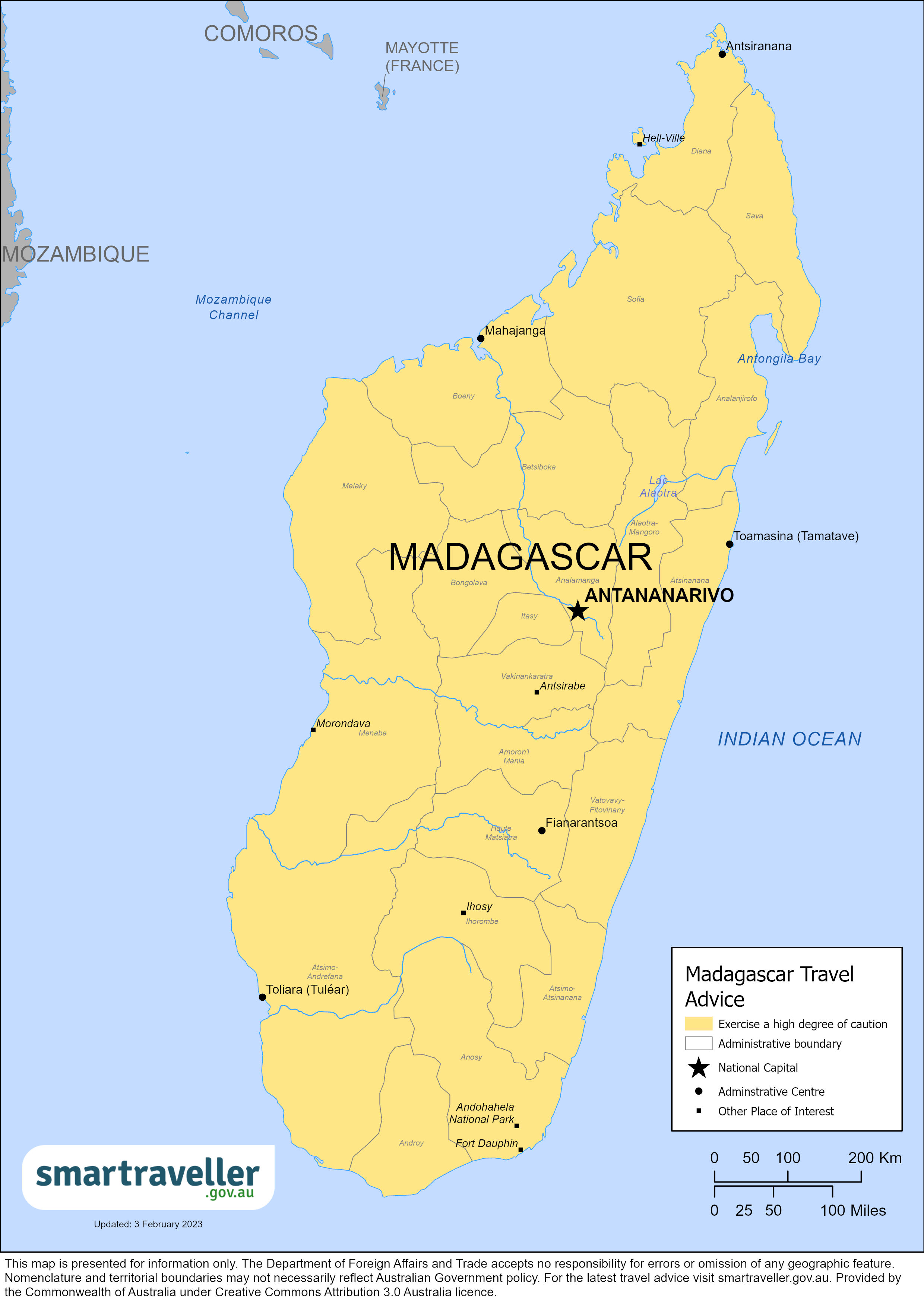
Madagascar (PDF 242.25 KB)
Africa (PDF 1.68 MB)
Local emergency contacts
Police - responsible for security within cities.
Call 117 or visit the nearest police station.
National gendarmerie - responsible for security outside cities
Fire and rescue services, medical emergencies.
Call 117 or go direct to a hospital.
Advice levels
Exercise a high degree of caution in Madagascar.
Exercise a high degree of caution in Madagascar due to the threat of crime and risk of natural disasters and disease outbreaks.
- Civil unrest, including demonstrations and protests, is common. They can turn violent quickly, and security forces may respond with force. Avoid demonstrations and large public gatherings, monitor local news, and follow instructions from local authorities.
- The cyclone season is from November to April. Coastal areas are particularly affected. Heavy rain, flooding, strong winds, landslides and rough seas may occur. Expect disruptions to essential services, transport options and medical services. Monitor weather alerts and follow instructions from local authorities, know your accommodation or cruise ship's evacuation plans.
- Crime, including violent crime, is widespread in Madagascar. Crimes include armed robberies, muggings, theft, carjacking and kidnappings. Avoid travelling alone and at night and seek local security advice before travelling to regional areas, particularly in the south.
- Madagascar can experience tsunamis. Know the warning signs and move immediately to high ground. Don't wait for official alerts. Follow the advice of local authorities and monitor media for updates.
Full travel advice: Safety
- Medical facilities in Madagascar are limited. Private clinics require up-front payments. You're likely to need medical evacuation if you're seriously ill or injured.
- Bubonic plague, pneumonic plague and HIV/AIDS are widespread, and measles outbreaks can occur. If you have flu-like symptoms, visit a doctor right away. Make sure your vaccinations are up to date and take precautions if you're taking part in high-risk activities.
- Insect-borne diseases (including malaria, dengue and chikungunya) are common. Ensure your accommodation is insect-proof and use insect repellent.
- Foodborne, waterborne and other infectious diseases (including cholera, hepatitis and schistosomiasis) are common. Drink only boiled or bottled water. Avoid raw or undercooked food. Don't swim in freshwater.
Full travel advice: Health
- Don't use or carry illegal drugs. Penalties are severe and include prison sentences.
- Always carry original photo identification. Police may ask you for it, especially if you're out late at night.
- Know and follow local laws. It's illegal to take photos of military installations or wear military-style clothing. There are strict laws around exporting protected plants or animals, gemstones and vanilla.
- Same-sex relationships are legal, but not widely accepted in Malagasy society. The age of consent for same-sex relations is 21. Avoid public displays of affection.
Full travel advice: Local laws
- You'll need a visa to enter Madagascar. If you're a tourist, this can be completed on arrival at the airport. If you're not a tourist, you'll need to apply for a visa before arriving.
- If you’ve come from a country affected by cholera, you will be subject to additional sanitary controls and asked to take an antibiotic (Doxycycline) or other medication.
- You may need to provide a valid yellow fever vaccination certificate if you have arrived from a country where yellow fever is widespread.
Full travel advice: Travel
Local contacts
- The Consular Services Charter details what the Australian Government can and can't do to help you overseas.
- Australia has a consulate in Antananarivo, Madagascar. It provides limited consular and passport services. The consulate is open to the public via appointment only. See ' Consular Contacts '.
- For full consular assistance, contact the Australian Embassy in Mauritius .
- Follow the Embassy’s social media accounts to stay up to date with local information. See ' Consular Contacts '.
Full travel advice: Local contacts
Full advice
Crime, including violent crime, is a serious issue in Madagascar. Crime rates are significantly higher than in Australia.
Crime in Madagascar includes:
- armed robbery , mugging and theft
- home invasions
Foreigners have been the target of armed robberies, muggings and theft.
Petty crimes, such as bag-snatching, pick-pocketing and other crimes, happen across the country.
To protect yourself:
- be vigilant in tourist and transport locations
- don't go out alone after dark especially on foot
- don't leave luggage and valuables unattended
- don't display cash or valuables
- always keep your vehicle and accommodation locked
- always use authorised adn experienced guides and tour operators
If you're attacked or robbed, don't resist. Criminals are often armed, and you can be seriously injured or killed. Stay calm and consider surrendering a small sum of money.
Avoid actions that might antagonise security personnel, such as taking photos of them. They could respond with excessive force. Some individuals have been known to falsely claim they are from the police. If you're stopped by the police, stay calm and show respect. Ask for identification to confirm who they are without antagonising them.
Police resources are stretched, and you may not get the level of service you would in Australia, especially for less serious petty crimes.
Regional crime
There have been reports of violent clashes and crimes, resulting in deaths, across all regions of Madagascar. Some regions include:
- Northern Madagascar: in the beach and crowded areas of Nosy Be, Ankify Port and Ambanja
- Western Madagascar: on National Routes around Besalampy, Morombe, Tsiroanomandidy and Maintirano
- Southern Madagascar: in the Southern triangle between Ihosy, Toliara and Fort-Dauphin
Seek local security advice before travelling to regional areas.
Don't visit national parks alone. Be alert to your surroundings and circumstances.
'Smash and grab' thefts from vehicles and carjacking are common. This includes taxi bes (urban minibuses), taxi brousses (rural minibuses), and river ferries. This is particularly prevalent:
- on national routes
- at major intersections
- during traffic congestion
To prevent theft when travelling by car:
- keep doors locked and windows up, even when driving
- keep valuables out of sight
- avoid driving after dark
Kidnapping for ransom is a risk in Madagascar. This includes foreign nationals and expatriates working for international companies. Monitor the local news. If risks elevate, take extra precautions. Maintain a high level of vigilance. Watch for suspicious or unusual activity.
The Australian Government's longstanding policy is that it doesn't make payments or concessions to kidnappers.
More information:
Cyber security
You may be at risk of cyber-based threats during overseas travel to any country. Digital identity theft is a growing concern. Your devices and personal data can be compromised, especially if you're connecting to Wi-Fi, using or connecting to shared or public computers, or to Bluetooth.
Social media can also be risky in destinations where there are social or political tensions or laws that may seem unreasonable by Australian standards. Travellers have been arrested for things they have said on social media. Don't comment on local or political events on your social media.
More information:
- Cyber security when travelling overseas
Civil unrest and political tension
Civil unrest, including demonstrations and protests, is common in Madagascar.
The next Parliamentary elections are scheduled for 29 May 2024. Politically motivated protests and events, especially those that attract large numbers of people, can turn violent with little or no warning. Security forces may respond with force. Deaths have occurred at previous protests.
Avoid large gatherings and political demonstrations. Roads may be closed. Monitor local media and follow the instructions of local authorities.
Violent incidents have been reported in the capital Antananarivo, around government buildings, the national stadium, historical monuments, and military installations.
To stay safe during periods of unrest:
- avoid demonstrations and other large public gatherings
- watch for planned and possible civil unrest
- avoid affected areas
- monitor local news
- follow the instructions of local authorities.
- Demonstrations and civil unrest
Bombs and grenades
Small bombs and grenades have been found in Antananarivo, with reported deaths and injuries.
Climate and natural disasters
Madagascar experiences natural disasters and severe weather , including:
- cyclones and storms
Consider weather conditions when planning your travel and stay up-to-date on weather forecasts, natural disaster watches and warnings before and during your stay. Monitor local and regional weather and disaster sites and plan accordingly.
If a natural disaster occurs:
- secure your passport in a safe, waterproof place
- monitor local weather and news reports
- follow the advice of local authorities
- keep friends and family up to date on your safety
- Cooperative Institute for Meteorological Satellite Studies (Tropical Cyclones)
- World Meteorological Organization Severe Weather Information Centre
- Global Disaster Alert and Coordination System
Cyclones and storms
The cyclone season is from November to April. However, storms and cyclones may occur at other times. Storms and cyclones can cause:
- Flash flooding
- Torrential rain
- Storm surges
- Winds up to 300km/h
The direction and strength of cyclones can change without warning.
Cyclones have caused significant flooding, landslides/mudslides, and damage to buildings, roads, bridges and communication services across Madagascar. This includes the capital Antananarivo in the Analamanga region.
If there's a cyclone or other severe weather event:
- you may get stuck where you are
- flights could be delayed, suspended or may fill quickly
- the storm may affect access to seaports
- safe shelter may not be available
- medical facilities may not be available
To prepare for a cyclone or storm:
- know the evacuation plan for your hotel, cruise ship, or other accommodation
- identify your local shelter
- follow the instructions of local authorities
Tsunamis can occur in Madagascar. These are caused by an undersea earthquake, landslide, or volcanic eruption.
A tsunami can arrive within minutes of a nearby tremor or earthquake. It can also occur if no earthquake is felt.
Register with the Global Disaster Alert and Coordination System to receive tsunami alerts.
Move immediately to high ground if advised by local or regional authorities or if you:
- feel a strong earthquake that makes it hard to stand up
- feel a weak, rolling earthquake that lasts a minute or more
- see a sudden rise or fall in sea level
- hear loud and unusual noises from the sea
Don't wait for official warnings. Once you get to high ground, monitor local media.
Tours and adventure activities
Tour operators don't always follow safety and maintenance standards. If you plan to do a tour or adventure activity:
- check if your travel insurance policy covers it
- ask about and insist on minimum safety requirements
- always use available safety gear, such as life jackets or seatbelts
If proper safety equipment isn't available, use another provider.
Terrorism is a threat worldwide.
Travel insurance
Get comprehensive travel insurance before you leave.
Your policy needs to cover all overseas medical costs, including medical evacuation. The Australian Government won't pay for these costs.
If you can't afford travel insurance, you can't afford to travel. This applies to everyone, no matter how healthy and fit you are.
If you're not insured, you may have to pay many thousands of dollars up-front for medical care.
- what activities and care your policy covers
- your insurance covers you for the whole time you'll be away (including if stopovers on the way to your destination are covered)
Physical and mental health
Consider your physical and mental health before you travel, especially if you have an existing medical condition.
See your doctor or travel clinic to:
- have a basic health check-up
- ask if your travel plans may affect your health
- plan any vaccinations you need
Do this at least 8 weeks before you leave.
If you have immediate concerns for your welfare or the welfare of another Australian, call the 24-hour Consular Emergency Centre in Australia on +61 2 6261 3305 or contact your nearest Australian Embassy, High Commission or Consulate to discuss counselling hotlines and services available in your location.
- General health advice
- Healthy holiday tips (HealthDirect Australia)
Not all medication available over the counter or by prescription in Australia is available in other countries. Some may even be considered illegal or a controlled substance, even if prescribed by an Australian doctor.
If you plan to bring medication, check if it's legal in Madagascar. Take enough legal medicine for your trip.
Carry a copy of your prescription or a letter from your doctor stating:
- what the medication is
- your required dosage
- that it's for personal use
Health risks
Insect-borne diseases.
Bubonic plague is widespread in Madagascar. It is caused by the bite of an infected flea. You're most at risk in the wet season from October to February. The Bubonic plague can be successfully treated with antibiotics, but it is crucial to seek medical treatment immediately if you experience any plague signs or symptoms.
Malaria is widespread in Madagascar. Deaths due to malaria have been recorded in Madagascar.
Dengue is a risk in the northeast of Madagascar, around Antalaha and Sambava.
Serious outbreaks of other insect-borne diseases have occurred, including:
- Chikungunya
- Rift Valley Fever
To protect yourself from insect-borne diseases:
- make sure your accommodation is insect-proof
- use insect repellent
- wear long, loose, light-coloured clothing
- talk to your doctor about vaccinations and medications
If you have a fever, muscle pain, a rash or a bad headache, seek medical advice.
- Infectious diseases
The risk of polio still exists in Madagascar.
Check your vaccination status for polio . Do this at least 8 weeks before you travel.
If you aren't vaccinated, complete the full course of vaccinations before you leave. If you've been vaccinated in the past, get a booster dose if needed.
- Australian Immunisation Handbook (Department of Health and Aged Care)
HIV/AIDS is widespread.
Take precautions if you engage in activities that expose you to the risk of infection.
Measles outbreaks can occur in Madagascar.
Make sure your vaccinations are up to date before you travel.
Other health risks
Outbreaks of waterborne, foodborne and other infectious diseases occur. These include:
- schistosomiasis
- tuberculosis
To protect yourself from illness:
- wash and sanitise your hands regularly
- drink boiled water or bottled water with sealed lids
- avoid ice cubes
- avoid raw and undercooked food, such as salads
- don't swim in fresh water
- avoid contact with dogs and other mammals
If you're bitten or scratched by an animal, get medical help straight away.
Get medical advice if you have a fever or diarrhoea.
- WHO Madagascar (French)
Medical care
Madagascar's standard of medical facilities is basic, with only routine medical operations possible. Facilities are limited in Antananarivo and extremely limited in rural areas.
Only some doctors will speak English.
Most travellers attend private clinics, which can be expensive. Most will require an upfront payment before admitting you.
Regular outbreaks of insect-borne diseases, plagues and natural disasters impact healthcare services and hospital capacity, including ambulance services and accident and emergency care.
You'll need to be evacuated if you become seriously ill or injured. Medical evacuation can be very expensive.
There's no shared healthcare agreement between Australia and Madagascar. Check your insurance covers hospital stays and evacuation.
There are no decompression chambers in Madagascar. If you're scuba diving:
- dive within safety limits
- check your insurance policy covers diving and medical evacuation
You're subject to all local laws and penalties, including those that may appear harsh by Australian standards. Research local laws before travelling.
If you're arrested or jailed, the Australian Government will do what it can to help you under our Consular Services Charter . But we can't get you out of trouble or out of jail.
- Arrested or jailed
Penalties for drug offences are severe and include prison sentences.
- Carrying or using drugs
You must always carry an original photo ID, such as a passport or driver's licence. Police may ask you for it, especially if you're out late at night.
In Madagascar, it's illegal to:
- take photos of military installations or airports
- wear military-style clothing
- export protected plants or animals without approval
- export gemstones or vanilla for a commercial purpose without a permit
Same-sex relationships are legal but are not widely accepted in Madagascar. Avoid public displays of affection.
The age of consent for same-sex couples is 21. Same-sex marriage isn't recognised.
There are no anti-discrimination protections for LGBTQIA+ travellers.
- Advice for LGBTQIA+ travellers
Australian laws
Some Australian criminal laws still apply when you're overseas. If you break these laws, you may face prosecution in Australia.
- Staying within the law and respecting customs
Dual citizenship
Madagascar recognises dual nationality.
- Dual nationals
Visas and border measures
Every country or territory decides who can enter or leave through its borders. For specific information about the evidence you'll need to enter a foreign destination, check with the nearest embassy, consulate or immigration department of the destination you're entering.
You need a visa to enter Madagascar.
If you're a tourist, you can get a 30 or 60-day visa for single entry to Madagascar on arrival at the airport. Fees are payable in euros, US dollars or Malagasy ariary. Visa fees are not applicable if you stay for less than 15 days, but you'll have to pay a 10 euro administrative fee for border control formalities. You must have proof of onward travel. Tourist visas can be extended up to 90 days.
In other situations, you'll need to apply for a visa at the nearest Embassy or Consulate of Madagascar before you travel.
Entry and exit conditions can change at short notice. You should contact the nearest embassy or consulate of Madagascar for the latest details.
- Ministry of Tourism in Madagascar (English, French)
- Embassy or Consulate of Madagascar
Border measures
If you’re arriving from a country affected by cholera, you'll need to undertake additional sanitary controls and asked to take an antibiotic (Doxycycline).
You may be offered alternative medication if you:
- are pregnant
- are under 8 years old
- have a pre existing medical condition.
You may also need to provide contact details so health authorities can follow up for 3 – 5 days.
If you arrive from a country where yellow fever is widespread, you may need a valid yellow fever vaccination certificate to enter Madagascar. Some airlines may want to see one when you leave.
Find out about returning to Australia after exposure to yellow fever .
- Yellow Fever
- Countries with a risk of yellow fever (PDF 152KB)
Other formalities
Minors travelling alone or with only one parent may need to show proof the other parent has approved the travel. Carry a signed letter or custody order showing both parents approve the travel.
- Advice for people travelling with children
Some countries won't let you enter unless your passport is valid for 6 months after you plan to leave that country. This can apply even if you're just transiting or stopping over.
Some foreign governments and airlines apply the rule inconsistently. Travellers can receive conflicting advice from different sources.
You can end up stranded if your passport is not valid for more than 6 months.
The Australian Government does not set these rules. Check your passport's expiry date before you travel. If you're not sure it'll be valid for long enough, consider getting a new passport .
Lost or stolen passport
Your passport is a valuable document. It's attractive to people who may try to use your identity to commit crimes.
Some people may try to trick you into giving them your passport. Always keep it in a safe place.
If your passport is lost or stolen, tell the Australian Government as soon as possible:
- In Australia, contact the Australian Passport Information Service
- If you're overseas, contact the nearest Australian embassy or consulate
Passport with ‘X’ gender identifier
Although Australian passports comply with international standards for sex and gender, we can’t guarantee that a passport showing 'X' in the sex field will be accepted for entry or transit by another country. Contact the nearest embassy, high commission or consulate of your destination before you arrive at the border to confirm if authorities will accept passports with 'X' gender markers.
- LGBTQIA+ travellers
The local currency is the Malagasy Ariary (MGA).
Some hotels and restaurants accept euros.
Some stores, hotels and banks in Antananarivo and in other major cities accept traveller's cheques.
Credit cards aren't widely used. Ask your bank if your cards will work in Madagascar.
Local travel
Driving permit.
You can drive in Madagascar with either:
- a valid Australian driver's licence, or
- an International Driving Permit (IDP)
You must get your IDP before leaving Australia. If you're staying in Madagascar for a long time, you can use your IDP to apply for a local licence at the Ministry of Interior. You have a period of one year to convert your licence to a local one from the moment you obtain a resident permit.
The minimum driving age is 18 years old.
If you plan on driving in Madagascar:
- carry photo identity and vehicle registration documents, as you may be stopped by police
- check you have enough insurance cover before driving
- check local traffic laws and practices before driving
- drive carefully and legally
- be aware of potential dangers on the roads
- avoid remote roads, particularly at night
- don't drink and drive
Road travel
You're more likely to die in a motor vehicle accident in Madagascar than in Australia.
Common hazards include:
- poorly maintained roads and vehicles
- poor or insufficient street lighting
- people and animals roaming on roads
Carjacking, armed robberies and other crimes are a high risk when travelling by road. Be especially vigilant when travelling on National Routes at night. See Safety
Motorcycles
Check if your travel insurance policy covers you for riding a motorbike, quad bike or similar vehicle.
Always wear a helmet.
- Driving or riding
Only use hire cars and limousines from providers with a good reputation.
Avoid taxis, as these are regularly attacked by armed bandits. This is especially the case for taxi bes (urban minibuses) and taxi brousses (rural minibuses).
Public transport
Avoid public transport due to the lack of safety and crime risk.
Public buses are not well-maintained, and serious accidents have occurred.
Protect your belongings, especially when travelling overnight.
- Transport and getting around safe
Boat travel
Boat travel may be dangerous.
Piracy occurs in the coastal areas of northern Madagascar. Reduce the risk of piracy by adjusting your route if required, and monitoring piracy reports from the International Maritime Bureau .
Several ferries and rivercraft operate in Madagascar. These may be overloaded, poorly maintained and lack life-saving equipment. A lack of navigation skills and unexpected storms have contributed to boating accidents.
To stay safe on the water:
- check safety standards are in place
- check there is enough safety equipment for everyone
- wear your like jacket
- avoid travelling after dark
- don't get on overcrowded boats
- Travelling by boat
- Going on a cruise
DFAT doesn't provide information on the safety of individual commercial airlines or flight paths.
Check Madagascar's air safety profile with the Aviation Safety Network.
Emergencies
Depending on what you need, contact your:
- family and friends
- travel agent
- insurance provider
Call 18 or 118.
Call 117 or go directly to a hospital.
Call 17 or 117 (mobile phone) or 020 22 220 17 (landline) or visit the nearest police station.
Gendarmerie – responsible for security outside cities
Call 19 or 119 (mobile phone) or 020 22 223 02 (landline).
Emergency phone lines may not have English-speaking operators.
Response times may be longer than in Australia.
Always get a police report when you report a crime.
Your insurer should have a 24-hour emergency number.
Consular contacts
Read the Consular Services Charter for what the Australian Government can and can't do to help you overseas.
Australia's consulate in Madagascar provides limited consular services and can receive passport applications. The consulate in Antananarivo is open to the public via appointment only (see contact details below).
For full consular and passport services while in Madagascar, contact the Australian Embassy (based in Mauritius) via email (see contact details below).
Australian Consulate, Antananarivo
Building C1 (AMCHAM Office), Explorer Business Park Ankorondrano, Antananarivo, Madagascar Phone: (+261) 32 05 596 01; (+261) 32 05 596 02; (+261) 34 10 863 41 Email: [email protected]
Australian Embassy, Mauritius
2nd Floor, Rogers House 5 President John Kennedy Street Port Louis, Mauritius Phone: +230 202 0160 General enquiries email: [email protected] Consular enquiries email: [email protected]
Passport enquiries: [email protected]
Website: mauritius.highcommission.gov.au Facebook: Australia in Mauritius, Seychelles, Madagascar and Comoros Twitter: @AusHC_MU
The website will provide details about opening hours, any temporary closures to the public, and services offered.
24-hour Consular Emergency Centre
In a consular emergency, if you can't contact the embassy, call the 24-hour Consular Emergency Centre on:
- +61 2 6261 3305 from overseas
- 1300 555 135 in Australia

Travelling to Madagascar?
Sign up to get the latest travel advice updates..
Be the first to know official government advice when travelling.
Cookies on GOV.UK
We use some essential cookies to make this website work.
We’d like to set additional cookies to understand how you use GOV.UK, remember your settings and improve government services.
We also use cookies set by other sites to help us deliver content from their services.
You have accepted additional cookies. You can change your cookie settings at any time.
You have rejected additional cookies. You can change your cookie settings at any time.
- Passports, travel and living abroad
- Travel abroad
- Foreign travel advice
Warnings and insurance
The Foreign, Commonwealth & Development Office ( FCDO ) provides advice about risks of travel to help British nationals make informed decisions. Find out more about FCDO travel advice .
Before you travel
No travel can be guaranteed safe. Read all the advice in this guide and any specific travel advice that applies to you:
- women travellers
- disabled travellers
- LGBT+ travellers
Follow and contact FCDO travel on Twitter , Facebook and Instagram . You can also sign up to get email notifications when this advice is updated.
Travel insurance
If you choose to travel, research your destinations and get appropriate travel insurance . Insurance should cover your itinerary, planned activities and expenses in an emergency.
Related content
Is this page useful.
- Yes this page is useful
- No this page is not useful
Help us improve GOV.UK
Don’t include personal or financial information like your National Insurance number or credit card details.
To help us improve GOV.UK, we’d like to know more about your visit today. We’ll send you a link to a feedback form. It will take only 2 minutes to fill in. Don’t worry we won’t send you spam or share your email address with anyone.
- Getting around Madagascar: Transportation Tips
Book your individual trip , stress-free with local travel experts
- roughguides.com
- getting-around
- Travel guide
- Itineraries
- Local Experts
- Travel Advice
- Accommodation
Plan your tailor-made trip with a local expert
Book securely with money-back guarantee
Travel stress-free with local assistance and 24/7 support
Most transport in Madagascar is by road , and the road network is steadily improving, with several of the major routes nationales (RN2, RN7 etc) having a tarmac or blacktop surface ( goudron in French) in reasonable condition, give or take the odd pothole.
Renting a car and driver
Public transport, by sea and river, tailor-made travel itineraries for madagascar, created by local experts.

18 days / from 3663 USD
Wild Madagascar
This trip is a tour of Wild Madagascar: discover dusty desert canyons, lush rainforests teeming with wildlife and trek through national parks. Explore the bustling capital Tana, then stop by the beach at Ifaty where you'll encounter forests of baobab trees and wandering tribesmen.
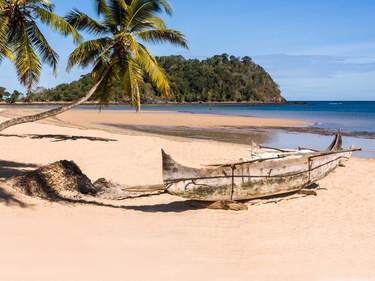
11 days / from 2417 USD
Dreaming of Madagascar
Tropical island beaches, lush rainforest, stunning wildlife, and the bright red clay houses of Antananarivo await you as you arrive on the beautiful island of Madagascar. Get your fill of culture in the capital Tana, snap beguiling wildlife, and revive and reboot on stunning white-sand beaches.

6 days / from 1280 USD
A Taste of Madagascar
An unforgettable journey through Madagascar's enchanting landscapes and cultural treasures. From the lush rainforests of Andasibe to the vibrant streets of Antananarivo, this adventure combines wildlife encounters with rich history, creating a diverse and immersive experience.
The overall structure, however, is less of that of a network and more that of a hub (Antananarivo) from which the routes nationales radiate north, east, south and west. Between these axes, the connections are much less sure, with narrow earth or sand roads linking small towns and villages in rural areas. Sometimes these are graded or improved to make driving easier, but they are prone to frequent flooding in the rainy season, and it can take hours to cover a short distance on the map, especially where rudimentary, pontoon-style ferries serve as bridges over the many streams and rivers. Water crossings tend to feature a great deal in Madagascar: think waterproofs and plastic bags.
Getting around under your own steam – on foot or by bike – is covered under “Sports and outdoor activities”.
As long as you’re not counting every penny, renting a car and driver is a good strategy, used by many visitors. Unlike the usual kind of self-drive car rental (which is available but only really recommended for experienced drivers in and around larger towns), renting with a driver gives you the freedom to enjoy the ride while someone else worries about the driving and the vehicle – and of course the cost if sharing with a group comes down dramatically. Most drivers are also guides, so you’re essentially buying a tailor-made trip.
It’s important to have every element of the deal very clear from the outset. Typically you rent the vehicle and driver from a local tour operator (occasionally the driver is the vehicle owner) for an agreed route and duration. The driver will look after fuel and will have his own overnight costs and meal allowance included: if you sometimes choose to invite him to your table (as many travellers do) that comes out of your pocket. You should be careful to allow for diversions: a 20km side trip will not be considered part of the deal if you didn’t request it to begin with.
Most driver-and-vehicle deals will include a 4x4 (a quatre-quatre or kat-kat ) in good condition. Bear in mind that fuel costs around €1/litre and while you may get 20–30mpg on the highway (9–15 litres/100km), on rough earth or sand roads that may go down to 10mpg or less (28 litres/100km or more). Also remember that while you may only want to drive in one direction, the vehicle is likely to be going back empty. A typical cost for a journey like this on the classic RN7 route from Antananarivo to Tuléar (or the reverse) over five days and four nights, staying on tarmac, would be between €800 and €1000. Of this, the driver himself will see perhaps €100, with another €50 for his per diem, and fuel accounting for around €200 of the roughly 1900km round trip.
If you’re travelling on a low budget, you’ll be using the slow and cheap shared taxis brousse (bush taxis, or taxi-be in Malagasy). These are privately or cooperatively owned minibuses running regular services, to a vaguely adhered-to timetable. The most upscale services run on the main roads with a high volume of traffic, allowing them to leave on time, take regular comfort stops and meal breaks and allocate each passenger a seat, sometimes in a vehicle that is air-conditioned. You can often reserve seats in these navettes (shuttles).
At the other end of the taxi-be spectrum, the vehicle is held together by willpower alone and the driver leaves only when it’s full to bursting – and then continues to cram passengers in en route. Journeys like this can be maddeningly slow, uncomfortable and utterly unpredictable, especially off the beaten track, or in the rainy season, when a taxi brousse ride can last for days. In such circumstances, the journey can develop a weird, bubble-like character all of its own, with the passengers grabbing a few hours sleep in the bush or in a cheap guesthouse while a ferry is fixed or a puncture repaired, and everyone asking each other how much longer it can possibly take and whether the driver is really up to the job.
Taxi brousse fares vary widely depending on route and passenger volumes (it’s the slowest journeys in the remotest and poorest districts that always cost the most), but reckoning on 10,000ar per 100km is a good guide, with shorter distances costing proportionately more. As a guide, you should expect to pay around 40,000–70,000ar for a journey from Tana to one of the coastal towns. Seats at the front, with seat belts, usually cost 50–100 percent more.
Bush taxis have a taxi park in every town, and sometimes more than one for different directions – known interchangeably as a gare routière , station des transports or stationnement . These can sometimes be a little overwhelming, even intimidating, as over-eager touts desperate for commission jostle for your business. If you arrive at the taxi park by town taxi, try to enlist your driver’s help in booking a seat on a vehicle that is about to leave: don’t allow yourself to become passenger bait by being persuaded to accept a ride in an empty vehicle that won’t be leaving for hours. This means holding onto your luggage rather than having it loaded onto the roof right away. On the subject of luggage, an ordinary bag of 20kg or so should be free. Extra luggage attracts a negotiable supplement.
Transport in towns
Urban transport varies from town to town: depending on the location, you’ll find battered Renault 4L (pronounced “ quatre-elle” ) taxis – the town taxis, sometimes called taxis-ville to distinguish them from taxis brousse and larger taxis-be , alongside Bajaj motorized trishaws (tuk-tuks), cyclo-pousses (cycle rickshaws) and pousses-pousses (handcarts) all competing for your business. Short rides cost 1000–5000ar depending on the vehicle and the town, and are always somewhat more at night. Always establish the price before climbing aboard.
Town taxis are usually amenable to being rented for several hours or for a particular journey out of town: think in terms of 30,000ar for a morning or afternoon around town, or perhaps 80,000ar for a 30km half-day round trip to a nearby location. A full day out of town in a 4L taxi, based on rental only and covering perhaps 100km, should cost no more than 120,000ar. When you’re making such ad hoc arrangements for longer rides with a cab driver, you should be quite clear where you want to go and how far it is, and that he is paying for the fuel.
Despite its ropey reputation for reliability, Air Madagascar ’s safety record is actually very good. Which is just as well as, apart from a handful of very small charter operators, there’s really no alternative to using the much-maligned national carrier. As most of your target destinations are likely to be around the coast of the island, and most road journeys to them from Tana take longer than a day, it makes sense to use Air Mad (as it’s known, with resignation rather than affection) for some of your travel. It’s worth knowing, however, that there are few flights between regional towns, making it hard to avoid returning several times to Tana.
As a rough guide, the average cost of a typical one-hour flight from Tana to a regional town is about €150–200 one-way (you can pay in euros at a slightly poor rate of exchange, or in ariary). You should reconfirm your next flight at every opportunity (giving any available contact number), and check in at least two hours before departure. If you check a bag into the hold, remove valuables before doing so, and keep your baggage coupon as it’s sometime requested on arrival before you can leave the hall. Flights may or may not have allocated seats: check which it is when you check in, and if you want a particular seat, wait at the front of the line or near the door of the departure lounge to make a quick getaway. In the event that you can’t fly or they can’t fly you, tickets bought at full fare are fully refundable. And Air Mad treats the frequent casualties of its delayed flights quite well: you’ll be lodged in a hotel and given meal tickets.
We’ve given approximate frequencies for Air Mad connections in the “Arrival and departure” sections for each town. As you plan, it’s worth remembering the major discounts on domestic flights if you use Air Mad for your international booking.
Madagascar airports
As of April 2015, Air Madagascar’s network was restricted to the following airports. A useful resource for checking what routes are operational is Flightmapper ( flightmapper.net ).
Antananarivo (Ivato International)
Antalaha (Antsirabato)
Diego Suarez (Arrachart)
Fort Dauphin (Tôlanaro)
Île Sainte Marie (Sainte Marie)
Majunga (Amborovy)
Maroantsetra
Nosy Be (Fascène)
Tamatave (Toamasina)
Tuléar (Toliara)
Madagascar’s rail travel options are reduced to a pair of cheap, fabulously decrepit and limited services: one run by Madarail between Moramanga and Tamatave ( bit.ly/Madarail ) and the other the Fianar–Côte Est railway between Fianarantsoa and Manakara. Each line has in theory two services a week in each direction. Reservations are all but impossible: show up at the station the day before and allow a good-sized window in your schedule before making any other plans. The unique old Micheline – effectively a bus with pneumatic tyres, but on rails (named after the tyre-manufacturer; bit.ly/Micheline ) – was once a feature of Madagascar tourism, but has ceased regular operations: one or two of the ancient vehicles are just about viable for special charters.
There is very little passenger shipping except for small ferries and motorboats running over quite short distances. Sea travel is most viable in the sheltered waters of the Mozambique Channel on the west coast , where captains of cargo vessels (sailing dhows known as boutres ), or smaller inshore dugouts and outrigger canoes, can sometimes be persuaded to take fare-paying passengers along the coast – though you tend to be treated as a piece of last-minute cargo. Take waterproofs, seasickness tablets and plenty of drinking water and snacks.
On the east coast the seas can be very rough and the scheduled small passenger ferries between Soanierana-Ivongo and Île Sainte Marie (sometimes including a service to Maroantsetra) are often cancelled. Also on the east coast, there are a few freight barges and tourist vessels plying the Canal des Pangalanes, but nothing regular. There are no ferries around the southeast of the island.
On the rivers , while there are plenty of short and sometimes alarming ferry crossings to look forward to (if you venture far off the beaten track), nobody is using the long, meandering rivers of the west for normal passenger transport. However, these – principally the Tsiribihina, Manambolo and Mangoky – are the watercourses on which adventure tourism operators run river journeys, using inflatables, kayaks and one or two larger vessels. Whenever you’re travelling on water, be sure to ask for a life jacket: all vessels should carry them.
The Rough Guides to Madagascar and related travel guides
In-depth, easy-to-use travel guides filled with expert advice.

Travel advice for Madagascar
From travel safety to visa requirements, discover the best tips for traveling to Madagascar
- Eating and drinking in Madagascar
- How to get to Madagascar
- National Parks in Madagascar
- Travel Tips Madagascar for planning and on the go
Find even more inspiration here

- Travel Tips

written by Andy Turner
updated 26.04.2021
Ready to travel and discover Madagascar?
Get support from our local experts for stress-free planning & worry-free travels.
- Where to stay
- Travel advice
- EXPLORE Random Article
How to Travel to Madagascar
Last Updated: May 31, 2022 References
This article was co-authored by wikiHow Staff . Our trained team of editors and researchers validate articles for accuracy and comprehensiveness. wikiHow's Content Management Team carefully monitors the work from our editorial staff to ensure that each article is backed by trusted research and meets our high quality standards. There are 8 references cited in this article, which can be found at the bottom of the page. This article has been viewed 8,507 times.
Madagascar is an amazing place full of unique wildlife, gorgeous beaches, and fascinating geological structures. Because it’s an isolated island, Madagascar is home to many animals that can’t be found anywhere else in the world such as lemurs and the Panther Chameleon. Flying is really the only way to travel to the island, but you have a variety of options when it comes to where you stay, what you do, and how you get around once you’ve arrived.
Flights and Accommodations

- For example, an online agency like Expedia, Travelocity, and Booking.com can book flights on multiple airlines so you can make your arrangements through them.
- Air Madagascar serves direct flights from Paris, Johannesburg, and Bangkok, so you can book a connecting flight from one of those locations through them. You can visit their website at https://www.airmadagascar.com/en .
- Another option is to have a travel agent make arrangements for you. Look online for travel agencies you can pay to have a representative find the best options for your trip.

- Most hotels on the south of the island have websites you can use to book your stay.
- Check out a booking site like Booking.com or Hotels.com to see if they have hotel options you can book. They can make the booking process a little easier.
- If you want to venture more off the beaten track and visit the more rural northern part of Madagascar, pick up a traditional travel book and look for hotels that may not be listed online.

- Travel with a friend to bring your costs down even more!
- Hostels are really only available in the capital city.

- Campsite spaces usually cost between $2-$12 USD a night.
- If you don’t want to camp out the entire time, you could stay in a hotel for part of your trip and rent a campsite to experience sleeping under the stars while you’re in Madagascar.

- Be aware that the dry season is the peak tourist season for Madagascar. That means there will be many more people visiting the island, and it’ll be more expensive to book flights and accommodations

- Keep in mind that it may be too cold to swim during the winter months.
- The off-season is also the wet season of Madagascar. That means it’ll be raining more often than not and may be difficult to get around or hike the trails.
Travel Essentials

- Pack your passport in your travel bag so you’ve got it on hand.
- If you’re in the US and you don’t have a passport, no problem! You can get one without too much trouble. Just make sure you’ve got it before you book your trip.
- You won’t be allowed to enter Madagascar without a valid passport, so make sure you’re good to go before you even book your flight.

- If you’re from the US, you can also purchase a visa through the US embassy in Madagascar.
- You need a tourist visa if your stay is less than 90 days. Any longer than that and you’ll have to apply for another type of visa in advance.
- Heads up: you have to pay cash for a visa, so be sure to bring cash with you! A 30-day visa costs $36 USD, a 60-day visa costs $50 USD, and a 90-day visa costs $65 USD. [9] X Research source

- You can also purchase insect repellent when you arrive, though it may be pricier.

- It’s especially important that pack protective clothing if you plan to hike during your stay.
- Long-sleeved shirts and pants will also help protect your skin from the sun.

- You may also want to bring a hat and sunglasses as well.
- If you plan to swim, don’t forget to pack a swimsuit!

- It’s a good idea to break in your shoes before you wear them to Madagascar as well. Stiff, uncomfy shoes can cause blisters and make your life just generally unpleasant out on the trail.
- You may also want to pack some “hiking socks” which are designed to keep your feet fresh and comfy in all sorts of climates.

- You can also purchase a flashlight when you arrive, but they may be more expensive.
Getting Around Madagascar

- You can also reserve a rental so all you have to do is pick it up when you land.

- Some hotels may have their own airport shuttles that you can use for free, but if not, you’ll need to pay a small fee to use them.

- You’ll notice the taxis-brousses lined up at the airport, driving through the cities, and waiting outside of hotels for whenever you need them.
- A taxis-brousse driver may be able to make recommendations if you’re looking for some good food or something to do.

- Domestic flights cost about $115-$135 USD for a one-way ticket.
Exploring the Island

- If you’re a vegetarian, try out some fried rice with vegetables or noodles with vegetables.

- You can drive your rental or take a taxi-brousse to visit some of the nature reserves and natural parks.
- You’ll need to pay a fee to enter into the parks or reserves.

- You can look online to find organized tours you can join.
- You’ll likely see advertisements for tours at the airport and around town when you arrive as well.

- The currency on Madagascar is called the Ariary, but some locations may only accept the previous currency, called the Malagasy Franc, or FMG. Visit the local bank where you’re staying to exchange for the money you can use in the area.

- So, don’t leave your passport at the hotel when you head out exploring!

- Contact the local police if you have any conflicts or potential thefts.
- Keep an eye on your belongings as well.
Expert Q&A
- Try to see as much as you can while you’re visiting! Go to the beaches, the cities, and take a hike on one of the trails. Thanks Helpful 0 Not Helpful 0
- Avoid violent confrontations and contact the police if you’re faced with an altercation. Thanks Helpful 0 Not Helpful 0
You Might Also Like

- ↑ https://www.roughguides.com/destinations/africa/madagascar/getting/
- ↑ https://www.charlotteplansatrip.com/en/madagascar-en/hotel-guide-madagascar/
- ↑ https://www.unusualtraveler.com/madagascar
- ↑ https://travel.usnews.com/Madagascar/
- ↑ https://travel.state.gov/content/travel/en/international-travel/International-Travel-Country-Information-Pages/Madagascar.html
- ↑ http://www.us-madagascar-embassy.org/visa-consular-services
- ↑ https://www.whattowearonvacation.com/destinations/africa/madagascar/178-what-to-wear-in-madagascar/
- ↑ https://travel.usnews.com/Madagascar/Things_To_Do/
About this article

Did this article help you?

- About wikiHow
- Terms of Use
- Privacy Policy
- Do Not Sell or Share My Info
- Not Selling Info
- Madagascar Tourism
- Madagascar Hotels
- Madagascar Bed and Breakfast
- Madagascar Vacation Rentals
- Flights to Madagascar
- Madagascar Restaurants
- Things to Do in Madagascar
- Madagascar Travel Forum
- Madagascar Photos
- All Madagascar Hotels
- Madagascar Hotel Deals
- Last Minute Hotels in Madagascar
- Things to Do
- Restaurants
- Vacation Rentals
- Travel Stories
- Rental Cars
- Add a Place
- Travel Forum
- Travelers' Choice
- Help Center
Travel pace, climate and itinerary - Madagascar Forum
- Africa
- Madagascar
Travel pace, climate and itinerary
- United States Forums
- Europe Forums
- Canada Forums
- Asia Forums
- Central America Forums
- Africa Forums
- Caribbean Forums
- Mexico Forums
- South Pacific Forums
- South America Forums
- Middle East Forums
- Honeymoons and Romance
- Business Travel
- Train Travel
- Traveling With Disabilities
- Tripadvisor Support
- Solo Travel
- Bargain Travel
- Timeshares / Vacation Rentals
- Africa forums
- Madagascar forum

Hi, we are 3 families, 14 people, going to Madagascar for 4 weeks, from the middle of July 2025. We would like to see wildlife, nature, culture and go snorkeling, diving, fishing and whalewathcing. We have this idea of an itinerary now;
Day 1. Arrive in Tana
Day 2. Sightseeing in Tana
Day 3. Flying to Toliara, staying in Anakao or Ifaty
Day 4-6. Go snorkeling/diving, fishing and whalewatching
Day 7. Driving to Isalo. An afternoon walk
Day 8-9. Hiking/see wildlife and nature in Isalo
Day 10. Driving via Anja reserve to Ambalavao
Day 11. Exploring Ambalavao and surrounding area
Day 12. Driving to Ranomafana. An afternoon/evening walk
Day 13. Hiking/see wildlife and nature in Ranomafana
Day 14. Driving to Ambositra. Exploring the city
Day 15. Driving to Antsirabe. Exploring the city
Day 16. Driving to Miandrivazo
Day 17-18. Boat down the river Tsiribihina
Day 19. Driving to Kirindy forest. Hiking/see wildlife and nature
Day 20. Driving to Morondava. See baobabs in sunset
Day 21. See babobabs in the morning. Boattrip to Belo sur mer. See baobabs in sunset
Day 23-30. Go snorkeling/diving, fishing etc
Day 31. Fly home
Is this route doable and is the travel pace pretty relaxing?
Will it be warm enough in Toliara to lay on the beach?
Any suggestions on;
- what not to miss in this route
- what clothes to bring
Thanks, Linda
4 replies to this topic

Hi Linda,I read well your program itinerary in july 2025.You are 2 family vacation,14 people.
Your plan trip is not bad but I suggest you some itinerary if you are interesting instead of adventure river trip is in the ast trip from south west and south.
This is my proposal program
J1 :International-Tnr
J2 :Tana sightseeing,visit lemurs’park-queen’s Palace
J3:Tana-Antsirabe
J4:Antsirabe-Miandrivazo(town to start river trip of Tsirbihina by local boat or motor boat
J5-j6:river trip with full boardapart ,camping in the tent
J7:river trip half day-drive to kirindy
Nocturnal visit,watch many species of nocturnal lemurs…
J8:visit park kirindy in the morning-afternoon drive to Morondava ,stop avenue of baobab in sunset
J9:Early in the morning,drive to avenue of baobab and after drive to Antsirabe
J10:Antsirabe-Ambositra(capital of artisanal)
J11:Ambositra-Ranomafana national park
Nocturnal visit
J12:visit park
J13:Ranomafana-Ambalavao-visit around city
J14:Ambalavao-Isalo
Before drive to Isalo,visit ANJA PARK AFTER DRIVE TO Isalo
J15:Visit Isalo
J16:Isalo-Tulear –ifaty
J17-j18:Ifaty,snorkeling-diving-swimming-,fishing-visit reniala reserve
J20:Tana-Anadasibe(one of the famous park to watch biggest lemurs Indri indri
Visit pereyras reserve ,nocturnal visit
J21:visit national park Andasibe
J22:Andasibe-Tamatave-fulpoint
J23:Fulpoint-transfer Mahambo-saint Marie by boat,
Diving-swimming –snorkeling
J24:beach,watch a whale-diving,….
J15:Saint Marie-Tana
J26:Tana-Nosy Be
J27-j29:Nosy Be ,afternoon on the 29 julyflight back to Tana
It is better when you fly back to Tana on 29 july evening because flight is always late or cancel
J30: tana and buy souvenir
J31:Return to your country
This is my proposal program ,please do not hesitate to ask when you have some questions and revise a program.Hope you ahe some new proposal trip.
Good luck Linda

Hello, to get straight to the point:
Day 19. Driving to Kirindy forest. Hiking/see wildlife and nature - This is an interesting way of doing this. Because the Tsirbihina trip lands about halfway between Morondava and the Tsingy, most people go to the Tsingy, but, I can entirely see your logic and it is a nice idea to do the river trip and then drive straight to Kirindy.
Day 21. See baobabs in the morning. Boat trip to Belo sur mer. See baobabs in sunset - In theory this is possible but I am not sure that it would be worth the money for the boat to Belo and back. If you want to fit in the Baobabs in the morning, a boat trip to Belo and back, and get back to the Baobabs for sunset, it might make your visit to Belo very quick, like, just for lunch, and then return to Morondava.
Is this route doable and is the travel pace pretty relaxing? - Yes for the most part. The last few days may be hectic if there are any flight problems and I would really recommend you leave a small cushion between flying back from Nosy Be to Tana, and your international departure.
Will it be warm enough in Toliara to lay on the beach? - Yes, as long as the weather is nice (I mean, not rainy or very windy), it will be warm enough at Ifaty or Anakao.
Thank you for your reply!
As we are more people with fear of hights and do not think it is worth the long drive to Tsingy, we skip it. But we have read that the boattrip is nice. One of us have read that there can be some security issues on the boattrip with robberies. Have you heard about it? Is it safe?
We are travelling with our young adult children, and I wonder if Ifaty has more to do for them then Anakao?
In your opinion, is Belo sur mer worth the trip, or is Morondava just as nice?
We have read that there is a lot of rain on Ile Sainte Marie in July/August. True? Or just showers once in a while?
Travelling so far away and wanting to see it all, leaves us with the question; do we miss vital experiences not visiting the north and Andasibe/Mantadia?
This itinerary sounds more rushed than we would prefer. We thought of flying to save some time.
The drive between Morondava and Antsirabe is like 9 hours?
- Madagascar Lemur Safari 5:58 pm
- Travel pace, climate and itinerary today
- Domestic safety flight May 03, 2024
- Private driver or tour guide May 03, 2024
- RN7 drive times Apr 30, 2024
- Madagascar - continental Africa without flying Apr 28, 2024
- Allergic to eggs, dairy & nuts... Apr 28, 2024
- posting a parcel to Tana / import taxes Apr 28, 2024
- Your best tips for Travel Insurance Apr 25, 2024
- Cost of Travel Apr 25, 2024
- Morodava to Tsingy Apr 25, 2024
- Rent a car at the airport Apr 24, 2024
- getting around Andasibe Apr 24, 2024
- places to stay in madagascar 4 replies
- snorkeling in Madagascar? 3 replies
- weather april/may 3 replies
- is Madagascar a honeymoon place, recommendations and visas? 9 replies
- Honeymoon in Madagascar 6 replies
- weather in september 3 replies
- future holiday in Madagascar, where's the best place to stay 5 replies
- Hotels in Tana 5 replies
- Is madagascar really worth seeing? 11 replies
- best time of year to go 4 replies
Madagascar Hotels and Places to Stay
- Appropriate gifts
- East Coast Train Travel
- Which Electric Plug?
- E-Visa and how it works

IMAGES
VIDEO
COMMENTS
I think that many younger travelers stay away because getting to the country or booking a tour is so expensive. Plus, there's just not much free information available on Madagascar. But let's change that and talk about how to visit the country. Organized Tours. A 14-day tour costs around $2,200-3,600 USD.
Refer to your vaccination records. Make sure you are up to date on the following: Typhoid, Hepatitis A, Hepatitis B, Meningitis, Polio, MMR, Tuberculosis (BCG) and/or Tetanus (DTP). You don't need the Yellow Fever vaccine for Madagascar. However, if you plan to travel in mainland Africa on your ...
The key advantage of flying Air Madagascar is the very worthwhile fifty percent discount you will get on internal flights booked with them. The downside, however, is an unavoidable introduction to the vagaries of Air Madagascar travel. Book your flight to Madagascar from as low as £711. Flights from the US and Canada
Madagascar. Africa. Lemurs, baobabs, rainforest, desert, hiking and diving: Madagascar is a dream destination for outdoors enthusiasts - half the fun is getting to all these incredible attractions. 01 / Attractions.
Madagascar Travel Costs. Accommodation - There are only a few hostels in the entire country and a bed in a dorm costs around 35,000 MGA, though sometimes you can find beds for as low as 20,000 MGA. For a private room, expect to pay at least 50,000 MGA.
Call us in Washington, D.C. at 1-888-407-4747 (toll-free in the United States and Canada) or 1-202-501-4444 (from all other countries) from 8:00 a.m. to 8:00 p.m., Eastern Standard Time, Monday through Friday (except U.S. federal holidays). See the State Department's travel website for the Worldwide Caution and Travel Advisories.
Madagascar's weather changes dramatically from region to region. The east coast is tropical, with hot temperatures and plenty of rain. The highlands of the central interior are cooler and less humid, while the south is the driest region of all. Generally speaking, Madagascar has a cool, dry season (May to October) and a hot, rainy season ...
Fianarantsoa. Fianar's hilltop old town is one of Madagascar's most picturesque, with narrow lanes and views across the modern city and its rice fields. Parc National d'Andasibe-Mantadia. The best place to visit in Madagascar for lemur-watching, including troops of habituated indris.
Visa For Visiting Madagascar. Visas are required for everyone visiting Madagascar. You can obtain a 30 days or 60 days visa at all international airports. Despite what the guidebooks say, the 30-day visa is NOT FREE. A 90-day visa is no longer available! 30 days 35 Euro / 37 USD. 60 days 40 Euro / 45 USD.
Travel to Madagascar from the US: Below you can see I did a random search on Google Flights for round-trip flights from New York to Antananarivo. In July the price would be $1,779 round trip with Delta/Air France (they are codeshare partners) and the journey takes around 20 hours. The flight has 1 stop at Paris Charles de Gaulle airport.
Tour guides generally expect 10,000 to 20,000 Malagasy ariary (or $3 to $6) per day, and you should allot about 5,000 to 10,000 Malagasy ariary (or $1.50 to $3) per day for drivers. Home to 18 ...
Flights on Air Madagascar are ~$600. Madagascar Visas. Madagascar is one of the few African countries that do not require money for Visas. All citizens from the US, Canada, EU, UK, AU etc. DO NOT need to get a visa before arrival, and DO NOT need to buy a visa if the visit is less than 30 days. Madagascar Visa.
Best Time to Visit Madagascar. The best time to visit Madagascar is during the dry season between April and November. The wet season is best avoided. Rain is very heavy and the island experiences cyclones between December and March. Like many countries, Madagascar has in place COVID travel restrictions. You have the option to present a negative ...
Travel tip: check our tailor made travel service to get the best Madagascar itinerary Guide to Madagascar's climate At a latitude stretching from 12° to 25° south, Madagascar is well inside the tropics at its northern end and just outside the Tropic of Capricorn in the far south.
Madagascar is perhaps best-known for its lemurs—of which nearly 100 different species and sub-species live on the island—and for its massive baobab trees. The island is also home to the Tuléar reef, the world's third-largest coral reef system, making Madagascar one of the top scuba diving destinations in Africa.
Ranomafana National Park. Isalo National Park. Andasibe National Park. Ile Sainte Marie & Ile Aux Nattes. If these sights are on your list and you have about a month for your visit, this post is for you! This itinerary can easily be tailored for a two week or three week Madagascar itinerary.
Travel Advisory. July 31, 2023. Madagascar - Level 2: Exercise Increased Caution. U C. Reissued with obsolete COVID-19 page links removed, and updates to crime information in the Tsaratanana, Tsiroanomandidy, Maintirano, and Betroka areas. Exercise increased caution in Madagascar due to crime and civil unrest. Some areas have increased risk.
For my all my North Madagascar travel tips click on the link. This is the best 2-week Madagascar itinerary possible. Antananarivo - 1 night. Morondava and Kirindy Forest Reserve - 3 nights. Miandrivazo - 1 night. Antsirabe - 1 night. Ambositra - stopover. Ranomafana National Park - 1 or 2 nights. Fianarantsoa and Sahambavy - 1 or 2 nights.
Crimes include armed robberies, muggings, theft, carjacking and kidnappings. Avoid travelling alone and at night and seek local security advice before travelling to regional areas, particularly in the south. Madagascar can experience tsunamis. Know the warning signs and move immediately to high ground. Don't wait for official alerts.
Living in Madagascar. Travelling to Madagascar. FCDO travel advice for Madagascar. Includes safety and security, insurance, entry requirements and legal differences.
Madagascar's rail travel options are reduced to a pair of cheap, fabulously decrepit and limited services: one run by Madarail between Moramanga and Tamatave (bit.ly/Madarail) and the other the Fianar-Côte Est railway between Fianarantsoa and Manakara. Each line has in theory two services a week in each direction.
Getting Around Madagascar. 1. Rent a car at the airport to travel wherever you want. If you want more freedom and independence to get around the island, go with a rental car. Pick one up from one of the rental agencies at the airport so you can drive to your hotel and anywhere else you want to go during your trip.
How to travel Madagascar? In this video I explain what you need to prepare before traveling to Madagascar. This includes general information about visa on ar...
Travel pace, climate and itinerary. May 5, 2024, 5:16 AM. Hi, we are 3 families, 14 people, going to Madagascar for 4 weeks, from the middle of July 2025. We would like to see wildlife, nature, culture and go snorkeling, diving, fishing and whalewathcing. We have this idea of an itinerary now; Day 1.